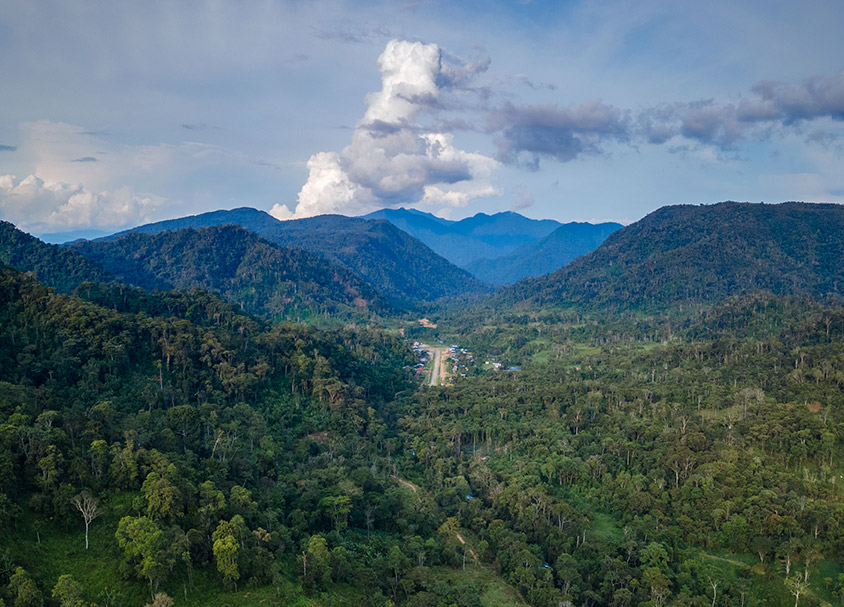
Solaris Resources (TSX:SLS) (OTCQB:SLSSF) has announced that it received exercises of common share purchase warrants for a total of C$18.7 million since the last quarterly results dated August 9, 2022. Mr. Richard Warke represented the majority of the warrants exercised, and exercised 2.3 million at a price of C$6.75, a 37% premium to the close of trading on Friday, October 28, 2022. On top of those warrants, Mr. Warke also exercised 0.6 million warrants at C$1.20 for proceeds of C$0.7 million.
More warrants remain outstanding and are set to expire by the end of 2022. There are 3.1 warrants at a price of C$1.20 and 0.2 million warrants at a price of C$6.75 outstanding which would generate proceed of C$4.9 million. 50% of those warrants are held by company insiders. By May 2023, 25 million warrants will expire at C$1.20, which if exercised in full, would generate C$30 million, with 98% of those warrants held by company insiders.
The above references an opinion and is for information purposes only. It is not intended to be investment advice. Seek a licensed professional for investment advice. The author is not an insider or shareholder of any of the companies mentioned above.
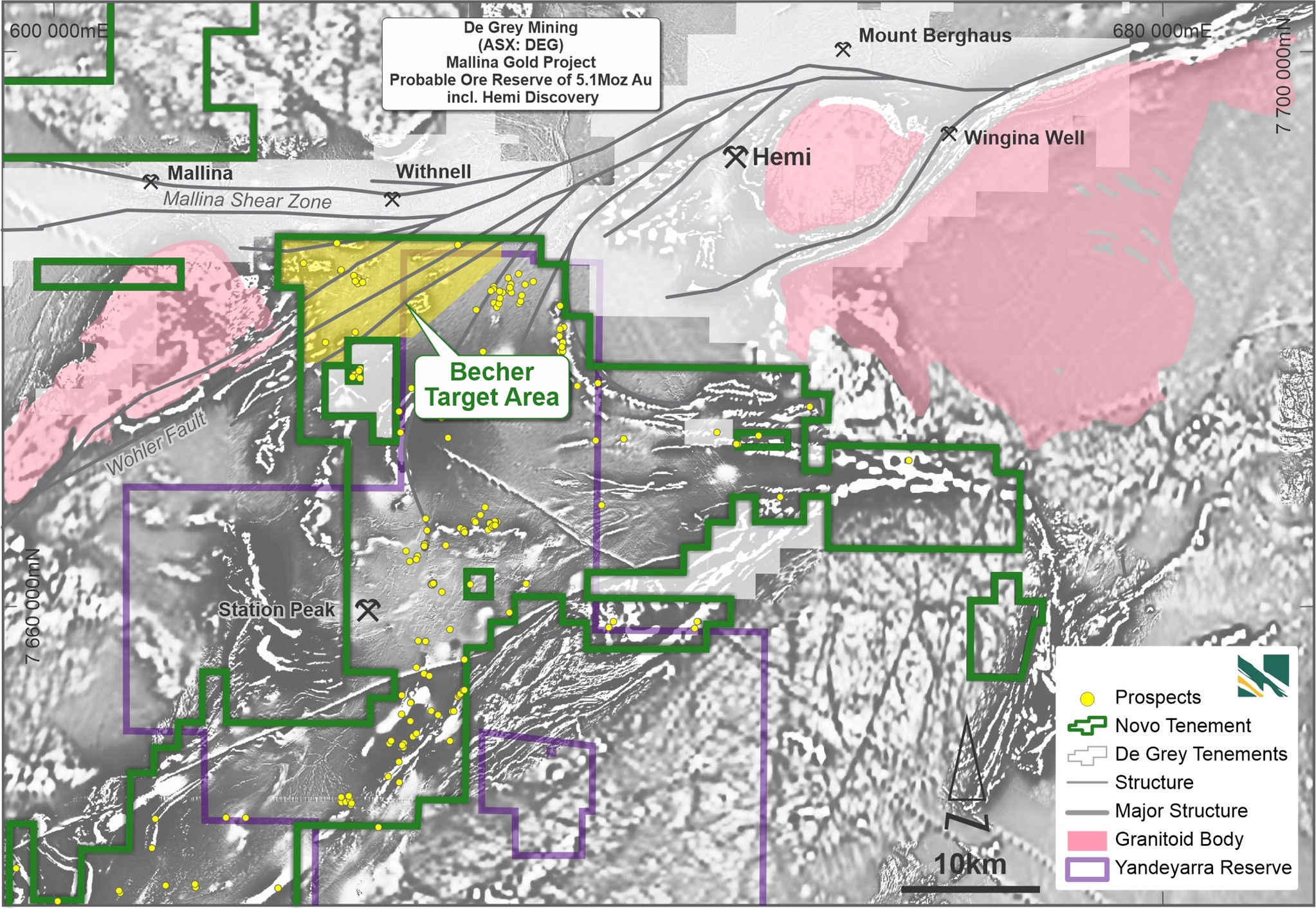
Novo Resources (TSX:NVO) has reported an exploration update from the ongoing drilling program in the Becher Area of the Egina District in Australia. The program includes systematic regional aircore drilling including more than 650 holes for 16,500 m of > 30,000 m program completed so far with a deeper RC drilling program intended to follow-up significant aircore results and test discrete targets.
The programs are in progress and testing high-priority structural and intrusive-related gold targets. The initiative was begun after two heritage surveys were recently completed at the Becher area. The aircore drilling at Becher complements the surface soil anomaly at Nunyerry Norther, about 80 kilometres south of Becher within the same district. The drill program will continue through the end of 2022 and into 2023.
Dr. Quinton Hennigh, Non-Executive Co-Chairman of Novo Resources commented in a press release: “Our first aircore drill results have yielded strong gold results at the Becher Area, indicating that the Whillans and Irvine shear zones are indeed prospective for deposits similar to those at De Grey’s adjacent Mallina project. Aircore drilling, a means of rapid, shallow drilling widely used across Australia as a first pass means of testing new areas for mineralization, is proving highly effective at Becher. Several large-scale anomalies are emerging, the largest of which is 650m across and situated along the southern Irvine shear zone. Alteration assemblages, lithologies, geochemical associations and size of these mineralized areas are similar to those observed in other nearby large gold discoveries. Although we have lots more drilling to complete and results to come in, the anomalies suggest that deeper drill testing is required.”
Highlights from the results are as follows:
- Standout gold results have been intersected on the southern Irvine Shear corridor including 20 m @ 0.67 g/t Au, as part of the current aircore drilling program at the high priority Becher Area in the Egina District.
- Over 650 shallow aircore holes for 16,500 m of the > 30,000 m program have been completed.
- The aircore program will test multiple structural and intrusive targets along a series of significant mineralized corridors, some interpreted to extend to De Grey Mining Limited’s (“De Grey”) Hemi gold deposit within the Mallina gold project (“Hemi”).
- Several additional quartz veined, large-scale sericite-silica-sulphide alteration zones have been identified from drilling across the Irvine and Whillans Shear corridors, with assays pending.
- Deeper reverse circulation (“RC”) drilling will commence in November 2022, designed to follow-up significant aircore results and test discrete drill targets within the Becher Area.
- Numerous targets have been enhanced or newly identified from a recent high resolution aeromagnetic and radiometric survey, coupled with detailed ground gravity surveys which have advanced structural interpretation and geological understanding.
- Two heritage surveys were recently completed, enabling infill and extensional aircore drilling traverses and RC drilling to be completed for the remainder of 2022 and first half of 2023.
- Initial results from the Becher Area, combined with previously reported results from Nunyerry North1, reconfirm potential for the Egina District to be a standalone gold production hub.
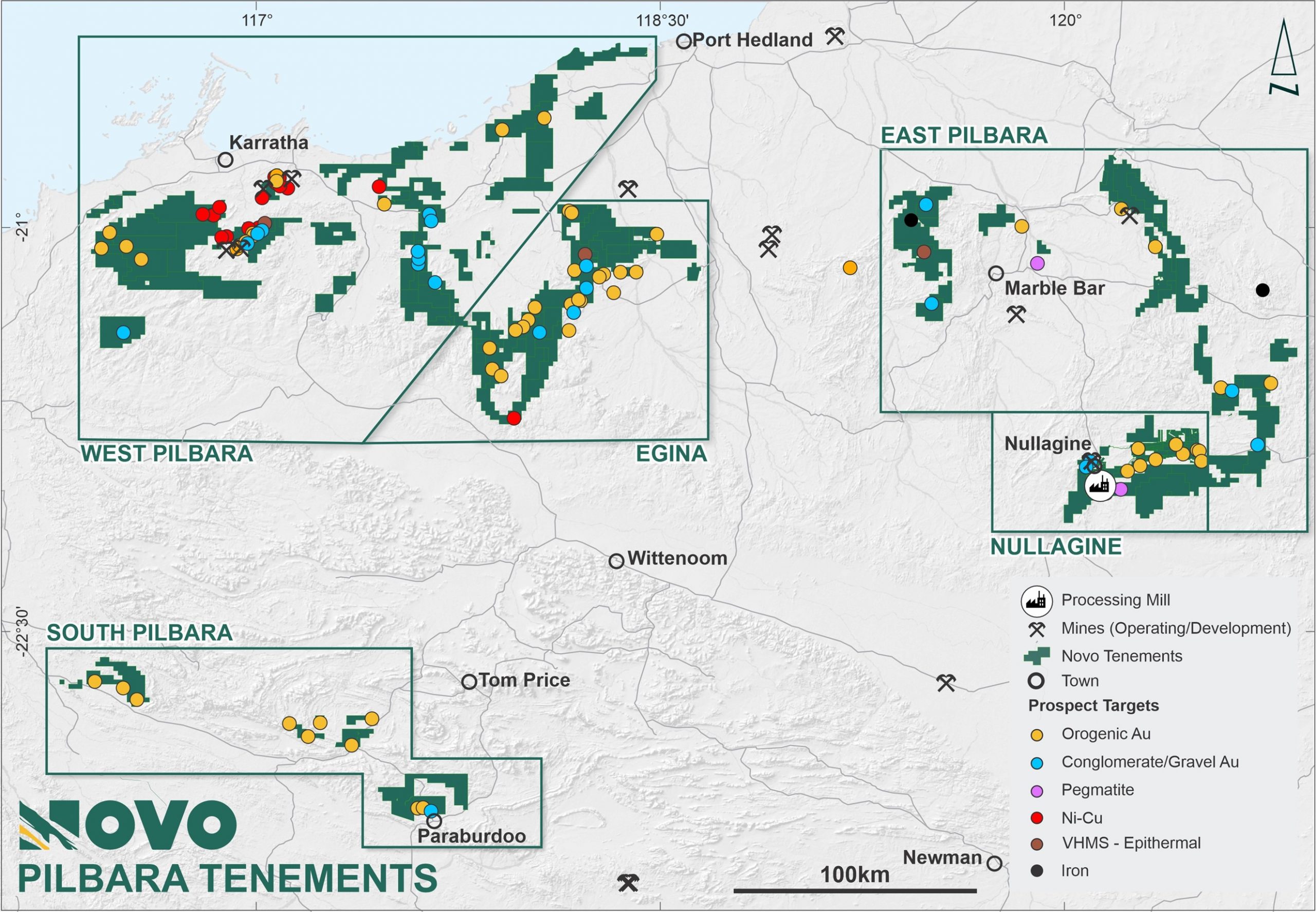
EGINA DISTRICT
Becher Area
The Becher Area (northern E47/3673, 100%-owned by Novo) contains multiple priority orogenic gold targets in the highly prospective and under-explored Mallina Basin. The area is located ~28 km to the WSW of De Grey’s Hemi gold deposit2. Novo’s interpretation of a series of significant shear corridors, including the ENE trending Irvine and Bonatti Shears (part of the regional Wohler Fault using GSWA 1:100,000 scale mapping nomenclature) and the EW trending Whillans and Heckmair Shears, is key to delineating these newly defined targets.
The current > 30,000 m aircore drilling program commenced in early September 2022, with over 650 holes for 16,500 m completed to date. 16 regional traverses at approx. 640 m line spacing and 25 m hole spacings have been completed along the Irvine Shear and Whillans Shear, with the opportunity to infill to 320 m spaced lines now possible given the recently completed second heritage survey on E47/3673. Drilling was designed as part of a large-scale systematic targeting program, supported by recent high resolution geophysical data sets, in conjunction with field mapping and sampling and research of all relevant historical data1.
Aircore drilling is best suited to areas with abundant cover or oxidation, easily drilling through unconsolidated or saprolitic material testing for gold and pathfinder element (arsenic, antimony, bismuth, tellurium, etc.) anomalism to identify broader zones of geochemical dispersion.
A minimum of 30,000 m of aircore drilling has been planned for 2022, however Novo expects this to be exceeded. The program will test four shear corridors and numerous sanukitoid targets, as well as antimony-arsenic-gold soil anomalies defined by previous explorers.
Results have been received from the first assay batch of 4 m composite samples analysed by PhotonAssay for the southernmost drill lines on the Irvine Shear Corridor (Figure 5). Four zones for infill aircore drilling have been identified from geological logging and current assay return. 1 m split samples and multielement assays are pending for anomalous drill holes.
Best intercepts include:
- 6 m @ 0.15 g/t Au from 24m (A0028)
- 12 m @ 0.16 g/t Au from 12m (A0029)
- 8 m @ 0.22 g/t Au from 4m (A0033)
- 20 m @ 0.67 g/t Au from 0m (A0034); examples of the chips from this zone are shown in Figure 5
- 12 m @ 0.24 g/t Au from 0m (A0035)
- 6 m @ 0.21 g/t Au from 24m (A0038)
Refer to Appendix 1 below for a complete list of assay results. True widths cannot be estimated at this time.
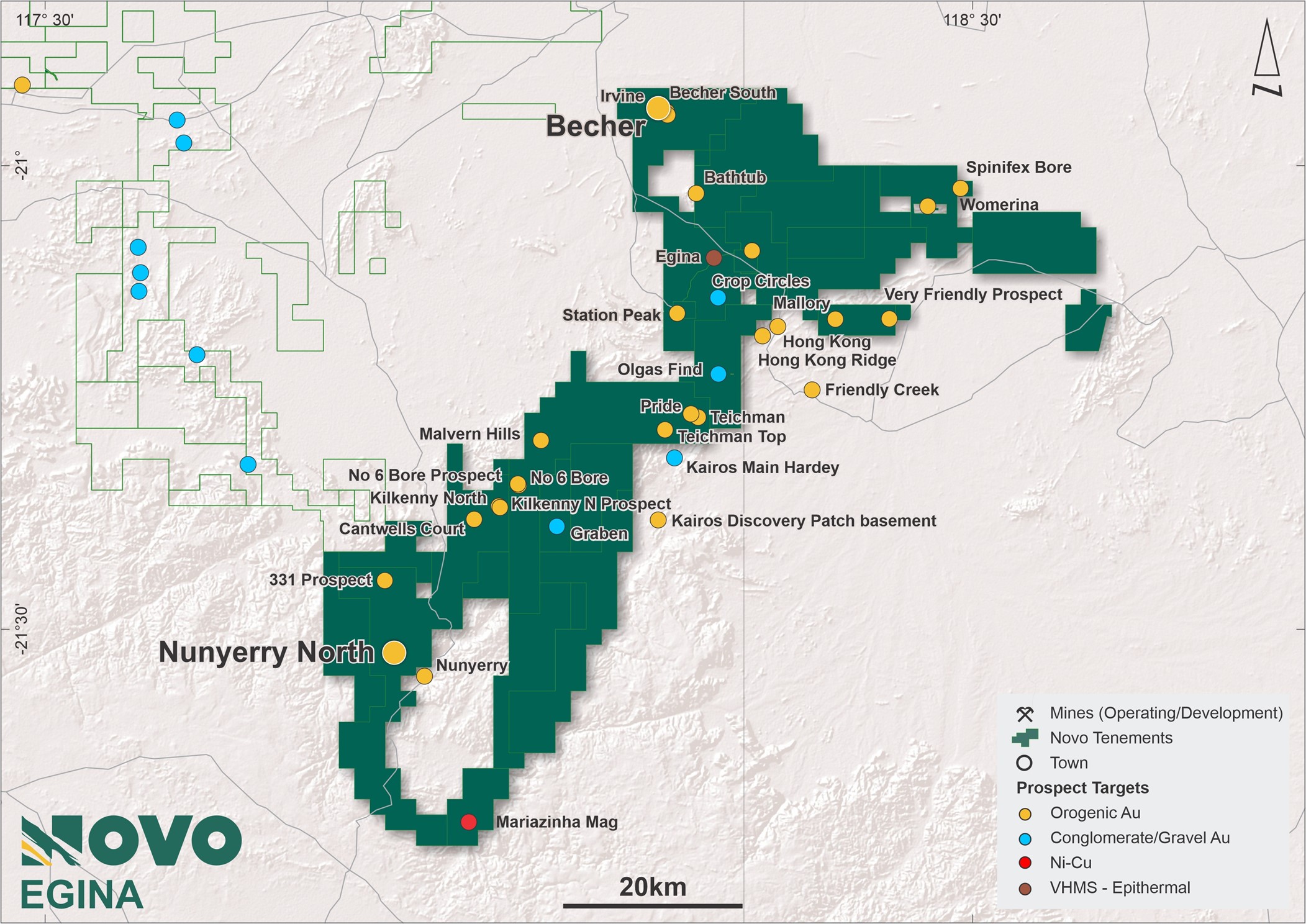
Nunyerry North
The geology of the Nunyerry North target area includes quartz vein-related gold mineralization within a sequence of ultramafic komatiites and mafic rocks, juxtaposed by regional shears and offset faults. Novo’s exploration licence 47/2973 is 70%-owned, with the remaining 30% held by Mark Creasy and entities controlled by him.
A significant high-order gold soil anomaly at Nunyerry North now extends over 1.4 km of strike, with a second 1.2 km long soil anomaly at > 30 ppb gold defined south of the main target. Rock chip sampling returned peak high-grade results from quartz veins including 8.81 g/t Au, 7.39 g/t Au and 1.23 g/t Au1. Further detailed mapping has defined additional swarms of quartz veins and specimen gold has been detected in the main target area1.
Follow-up work planned includes heritage surveys and logistics for road access in preparation for drilling in 2023.
Source: Novo Resources
The above references an opinion and is for information purposes only. It is not intended to be investment advice. Seek a licensed professional for investment advice. The author is not an insider or shareholder of any of the companies mentioned above.
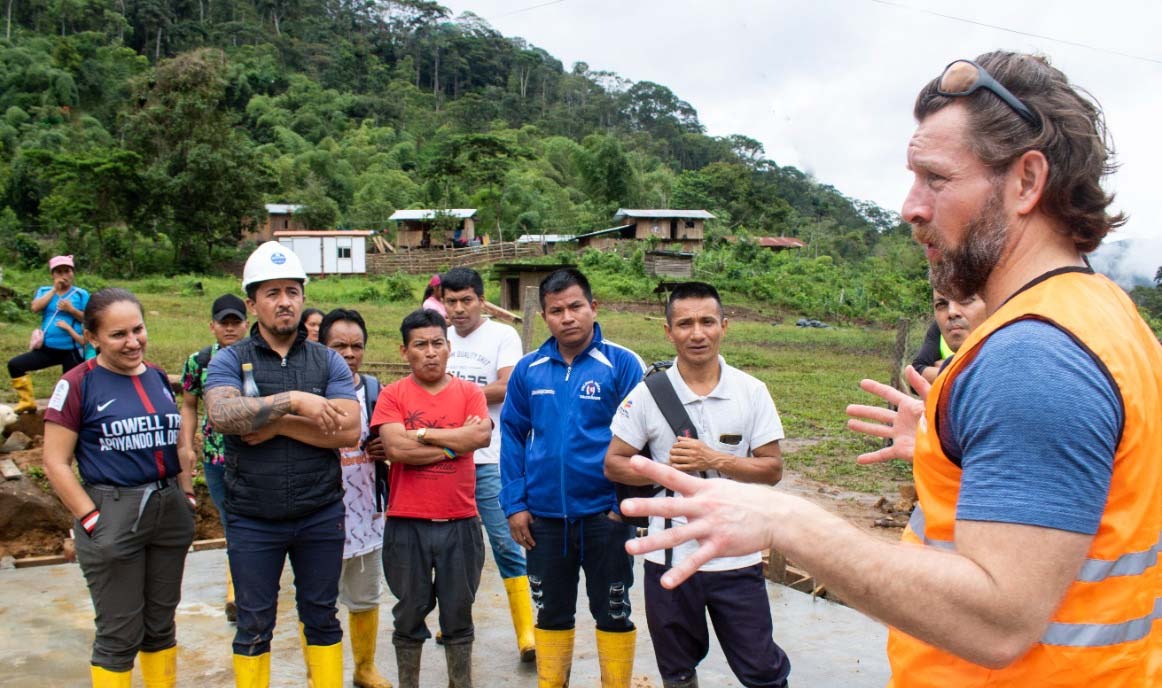
The copper market has been on a tear in recent years and is expected to continue to do well in the near future. This is good news for Warintza Project’s (TSX:SLS) (OTCQB:SLSSF) copper project, as it will take advantage of the market’s tailwinds in a way that most other junior mining companies’ projects won’t be able to. Solaris recently published results from Warintza West, marking the fourth discovery within the Warintza porphyry cluster.
Located just 1 kilometre west of the Warintza Central Mineral Resource Estimate (MRE), the discovery was reported with the results of SLSW-01. Another big discovery for the company, it outlines a broad porphyry deposit of at least 900m x 600m and till open and miles adjacent to but not included within the MRE. This significantly expands the opportunities at the project which has the potential to be a “super-pit”.
Exciting results from the report included:
- SLSW-07 (drilled north) returned 686m of 0.46% CuEq¹ within a broader interval of 912m of 0.41% CuEq¹ from near surface
- SLSW-02 (drilled vertically) returned 246m of 0.47% CuEq¹ from near surface
- SLSW-09 (drilled west) returned 202m of 0.45% CuEq¹ within a broader interval of 444m of 0.36% CuEq¹ from near surface
- SLSW-08 (drilled northwest) returned 78m of 0.56% CuEq¹ within a broader interval of 812m of 0.32% CuEq¹ from near surface
- SLSW-04 (drilled northeast) returned 264m of 0.44% CuEq¹ from near surface
- SLSW-10 (drilled southwest) returned 220m of 0.41% CuEq¹ from near surface
- SLSW-03 (drilled southeast) returned 102m of 0.39% CuEq¹ within a broader interval of 911m of 0.24% CuEq¹ from near surface
- SLSW-05 (drilled northeast) returned 272m of 0.38% CuEq¹ within a broader interval of 570m of 0.30% CuEq¹ from near surface
- SLSW-06 (drilled east) returned 732m of 0.32% CuEq¹ from near surface
These results and the project also stand out for a few reasons:
The project is located in a key copper-producing region
The project is located in a key copper-producing region The project is located in a key copper-producing region of southeastern Ecuador.
The company has committed to fully transparent disclosure
With a good copper price forecast and a commitment to fully disclose all exploration results, Warintza Project is well-positioned to benefit from the market’s current momentum and investor enthusiasm through each new discovery.
ESG strategy
Solaris Resources has a strong environmental, social and governance (ESG) strategy. This includes consultation with local communities and sustainable mining practices.
A project developed at just the right time
As the green energy transition gains momentum, copper is becoming an increasingly important component of sustainable infrastructure. Copper is also a critical component of many modern technologies, including renewable energy and electric vehicles.
While spot copper prices are all over the place due to larger market forces, the long-term trend remains strongly in place. As potentially one of the largest new projects of its kind, Warintza Project and Solaris Resources are ideally situated to capitalize.
The above references an opinion and is for information purposes only. It is not intended to be investment advice. Seek a licensed professional for investment advice. The author is not an insider or shareholder of any of the companies mentioned above.

100% sustainable energy is the goal of environmentalists and lawmakers alike. However, a sticking point in achieving this goal is finding enough raw materials to create solar panels without damaging the environment. This is where Solaris Resources (TSX:SLS) (OTCQB:SLSSF) comes in. Solaris Resources is a copper mining company that specializes in finding and extracting copper, one of the key metals in the renewable energy transition, with minimal impact on the environment.
Solaris’ flagship Warintza project in Ecuador is operated according to the most stringent of ESG principles, without compromising the performance of the drill program. The company has just made its fourth discovery at the project of a broad porphyry deposit of at least 900m x 600 m and still open. This deposit is adjacent to and is not included in the Mineral Resource Estimate (MRE) from Warintza Central. The project is also set to be supplied by the Electric Corporation of Ecuador with low-cost, locally-sourced hydroelectric power.
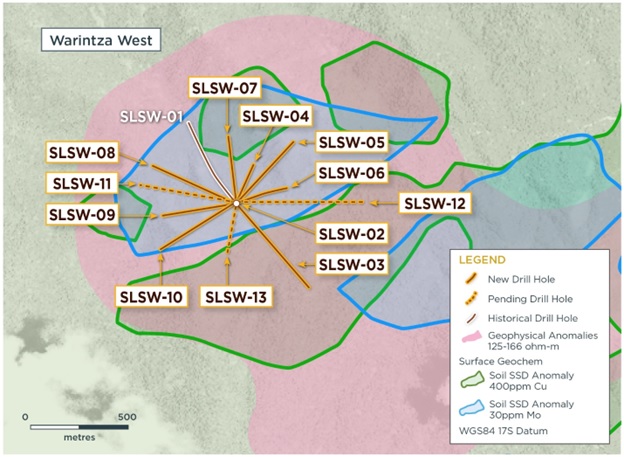
Copper projects are set to power the increase in manufacturing for solar panels, however, new projects are scarce, and shortages threaten to drive up prices. Solaris Resources is working to alleviate this issue by mining copper in a way that is respectful of the environment. Those same shortages could even delay the transition to renewable energy.
Despite this, the growth in solar power has been exponential in recent years, with the market projected to grow by over a hundred billion dollars in the coming years.
Copper at the Crossroads
Renewable energy sources, such as solar and wind, rely on certain metals to create electrical currents. Copper is one of the key metals that is needed in large quantities to make these sources of energy work. Copper is one of the most important metals in this area, as it is not just critical to solar power but all of the energy infrastructure, putting it at an important crossroads.
The infrastructure that is needed to support renewable energy is also reliant on copper. Copper cables, for example, are essential for transmitting power from the solar panels to the places where it is needed. Copper is also used in batteries to store energy.
The material used to create solar panels is also important. Solar panels are made from a variety of materials, but the most common is polysilicon. Polysilicon is a type of plastic that is used to create solar panels. Polysilicon is made from a variety of materials, but the most common is silicon. Silicon is not suffering the same shortages as other minerals and metals.
The shortage of copper has also driven up the price of copper. If the price of copper continues to increase, it could delay the transition to renewable energy.
Mining Industry Scramble
Rising prices, tight markets, and environmental concerns have all contributed to the unprecedented scramble by the mining industry to bring new projects to production. The first way this is being done is through exploration. Exploration is when miners look for new deposits to extract copper from. This is an expensive and time-consuming process, so it is often only done when there is a good chance that a deposit will be profitable.
Another way that the mining industry is trying to bring new projects to production is by renegotiating contracts. When a company has a contract to produce copper, it may be able to renegotiate the contract to produce other materials as well. For example, a company may have a contract to produce copper, but if the price of copper increases, it may be able to renegotiate the contract to produce aluminum.
The mining industry is also trying to bring new projects to production faster by investing in new technologies. This is often done by investing in new mining equipment. For example, the mining industry is trying to bring new projects to production by investing in new hydraulic fracturing technology. hydraulic fracturing is a process that is used to break down rocks to extract minerals.
As the mining industry scrambles to bring new projects to production, it is important that the regulators are aware of these efforts and are able to provide the necessary permits and licenses. If the regulators are not aware of these efforts, it could lead to delays in the production of the new projects. Concerns in the United States that permitting laws are not changing fast enough to move in lockstep with growing investment in battery metal and copper mining projects also remain.
However, projects around the world, including the Warintza Project in southeastern Ecuador, are moving forward with a focus on sustainability and social responsibility. Solaris Resources is one of the few mining companies that have a long track record of operating according to the most stringent of ESG principles, without compromising the performance of its drill programs.
The above references an opinion and is for information purposes only. It is not intended to be investment advice. Seek a licensed professional for investment advice. The author is not an insider or shareholder of any of the companies mentioned above.
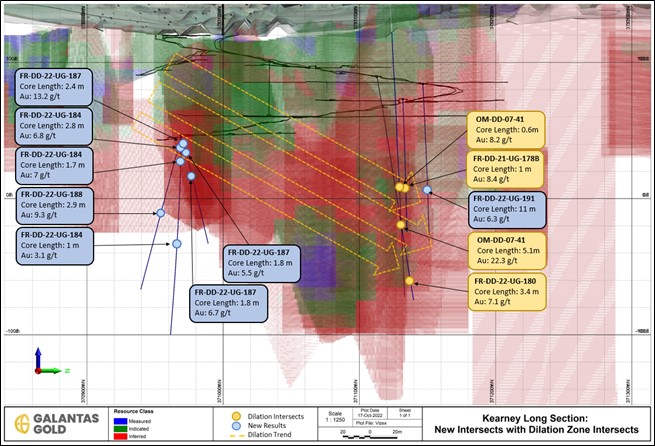
Galantas Gold (TSXV:GAL) has released results from four drill holes from the ongoing drilling program at the Omagh Project in Northern Ireland. From an underground platform toward the south of the development on the Kearney Vein, three holes were drilled with one drilled from a new platform to the north.
Mario Stifano, CEO of Galantas, commented in a press release: “These results underscore the success of the drilling program at the Omagh Gold Project by extending the dilation zones at the main Kearney Vein further north, as we predicted from earlier drilling. We are pleased that our drill data so far is supporting the theory that dilation zones – a pattern of vein swelling and grade increases – are projected at depth and predictably identified at regular intervals along strike of the first five levels of the Kearney Vein underground development.”
*Dilation zones which have potential for higher widths of mineralization have previously been identified within the Kearney underground development and are believed to be linked on shallow north-dipping planes.
Highlights from the results are as follows:
- Hole FR-DD-22-UG-191 targeted a northern extension to a proposed dilation zone* within the Kearney Vein, intersecting 6.3 grams per tonne (g/t) gold (Au) and 32.1 g/t silver (Ag) over 11 metres (see Table 1 and Figure 1). This includes a higher grade section of 14.2 g/t Au and 59.3 g/t Ag over 4.5 metres.
- Hole FR-DD-22-UG-188, drilled from the lowest drill platform, intersected the main Kearney Vein 40 metres below the resource model at 9.3 g/t Au and 23.3 g/t Ag over 2.9 metres.
- Holes FR-DD-22-UG-187 and 184 both intersected the main Kearney Vein and the B-lens with B-lens intersections in the inferred resource and approximately 50 metres beneath the resource model, respectively. The B-lens is a vein that runs parallel to the Kearney Vein, approximately 17 metres east in this area.
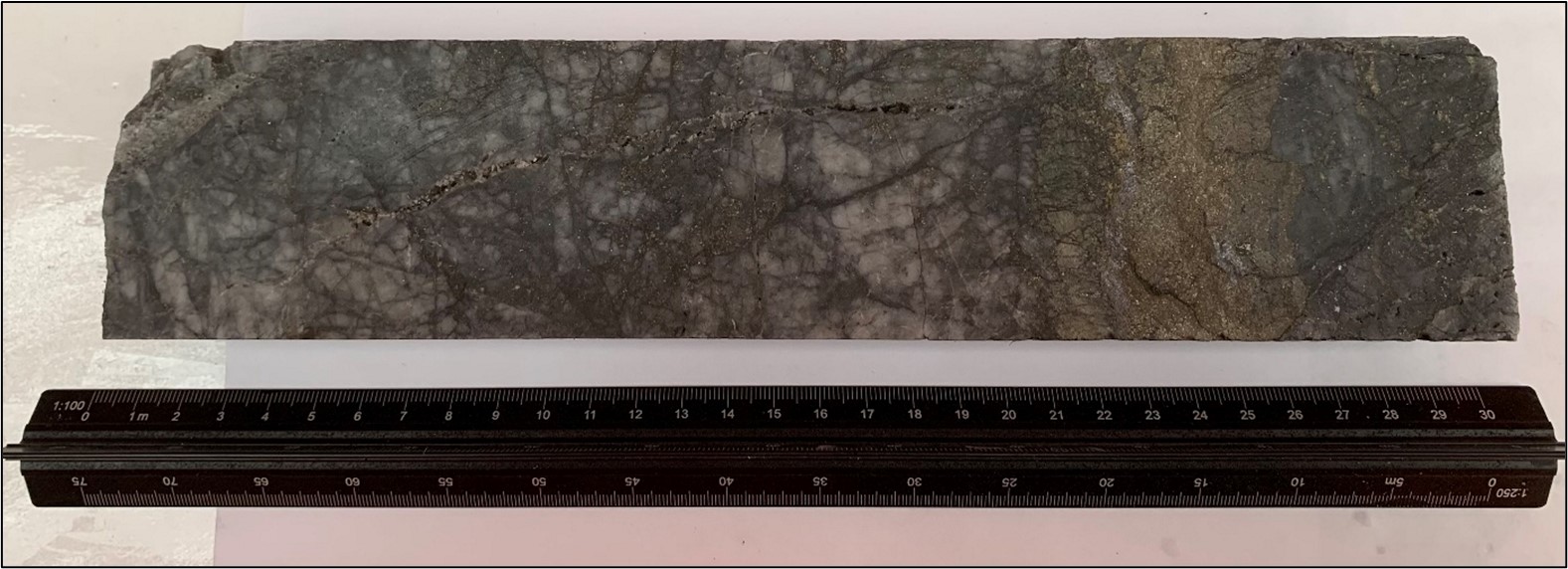
Table 1: Summary of drill results.
| Hole ID | Azimuth/ Dip (degrees) | Intersect (m) (downhole) | Est. true width (m) | Intersect vertical depth (m)* | Gold (g/t) | Silver (g/t) | Lead (%) | Core loss (%) |
| FR-DD-22-UG-191 | 277.2/74 | 11 | 3 | 169 | 6.3 | 32.1 | 0.9 | 3.3 |
| Including | 4.5 | 1.2 | 14.2 | 59.3 | 1.5 | 6.9 | ||
| FR-DD-22-UG-188 | 121.5/63 | 2.9 | 1.1 | 170 | 9.3 | 23.3 | 2.6 | 0 |
| FR-DD-22-UG-187 | 073/49 | 2.4 | 1.5 | 128 | 13.2 | 27.7 | 1 | 3 |
| And | 073/49 | 1.8 | 1.1 | 133 | 5.5 | 5 | 0 | 23.5 |
| And | 072.5/52 | 1.8 | 1.1 | 152 | 6.7 | 8.6 | 0.3 | 6.9 |
| FR-DD-22-UG-184 | 090/62 | 2.8 | 1.3 | 130 | 6.8 | 8.3 | 0.6 | 18.1 |
| And | 093/62.1 | 1.7 | 0.8 | 141 | 7 | 11.8 | 0.4 | 43.2 |
| And | 099.9/64.2 | 1 | 0.4 | 199 | 3.1 | 3.7 | 0.4 | 0 |
Notes:
- Drill holes were HQ size and drilled using a triple tube method to maximize core recovery. The samples were analyzed (gold by fire assay and other metals by ICP-ORE) at ALS Laboratory Ltd (ISO 17025) of Galway, Ireland.
- Intersect vertical depth intervals are from ground surface to the top of the mineralized zone.
- Data has been rounded to 1 decimal place.
- All assays are reported without application of a top cut.
- Three of the reported intersections have an abnormally high core loss that may bias (either positively or negatively) the assay value for those intersections, and thus these intersections may not be fully representative of the true intersect value. These core losses were recorded as cavities during the drill process.
The above references an opinion and is for information purposes only. It is not intended to be investment advice. Seek a licensed professional for investment advice. The author is not an insider or shareholder of any of the companies mentioned above.
Azincourt Energy (TSXV:AAZ) has provided an update on the company’s upcoming drill programs at uranium exploration projects in Saskatchewan, Canada. The company is making preparations for a winter program at East Preston, where drilling has confirmed that identified geophysical conductors comprise a structurally disrupted zone that is host to accumulations of graphite, sulphides, and carbonates.
Azincourt has already entered the consultation phase of the permitting process at East Preston and is working with the Clearwater River Dene Nation and other local communities to maximize local businesses and employment. Hydrothermal alteration, anomalous radioactivity, and elevated uranium have also been shown to exist in those structurally disrupted conductor zones.
Azincourt’s extensive winter 2022-2023 drill program is set to begin in December with road and camp preparations to start. It will include 6,000 metres of drilling in 20+ diamond drill holes beginning in January. Priority focus will be on evaluating the alteration zones and elevated uranium identified in winter 2022.
At Hatchet Lake, a recent addition to the company’s portfolio, Azincourt will begin the drill program once permitting is received and the consultation process with local communities is completed. The project is located outside the northeastern margin of the Athabasca Basin, along the underexplored northeast extension of the Western Wollaston Domain in the Wollaston-Mudjatik Transition Zone. This structural corridor hosts most of the known high-grade uranium deposits and all of the operating uranium mines in Canada.
The drill program at Hatchett Lake will include ground reconnaissance to verify targets, ground geophysics, and a helicopter-supported diamond drill program of 1,500 metres in 8-10 diamond drill holes.


About East Preston
Azincourt controls a majority 72.8% interest in the 25,000+ hectare East Preston project as part of a joint venture agreement with Skyharbour Resources (TSX.V: SYH), and Dixie Gold. Three prospective conductive, low magnetic signature corridors have been discovered on the property. The three distinct corridors have a total strike length of over 25 km, each with multiple EM conductor trends identified. Ground prospecting and sampling work completed to date has identified outcrop, soil, biogeochemical and radon anomalies, which are key pathfinder elements for unconformity uranium deposit discovery.
The East Preston Project has multiple long linear conductors with flexural changes in orientation and offset breaks in the vicinity of interpreted fault lineaments – classic targets for basement-hosted unconformity uranium deposits. These are not just simple basement conductors; they are clearly upgraded/enhanced prospectively targets because of the structural complexity.
The targets are basement-hosted unconformity related uranium deposits similar to NexGen’s Arrow deposit and Cameco’s Eagle Point mine. East Preston is near the southern edge of the western Athabasca Basin, where targets are in a near surface environment without Athabasca sandstone cover – therefore they are relatively shallow targets but can have great depth extent when discovered. The project ground is located along a parallel conductive trend between the PLS-Arrow trend and Cameco’s Centennial deposit (Virgin River-Dufferin Lake trend).
About Hatchet Lake

Azincourt entered into an option agreement with ValOre Metals Corp. on November 9th, 2021, to earn up to a 75% interest in the Hatchet Lake property. Previous work on the property identified multiple, shallow, unconformity-related basement uranium targets. Previous work includes diamond drilling, geophysics, boulder, soil, lake sediment and bio-geochemical sampling. The project contains substantial historic exploration datasets with identified uranium anomalism and showings to help guide exploration programs. Historical operators include Gulf Minerals, Saskatchewan Mining and Development Corp, Hathor Exploration Ltd., and Rio Tinto.
Two high-priority zones on the property have currently been identified; the Upper Manson and Southwest Scrimes zones. Geochemical anomalies highlight a variety of uraniferous host rocks that are coincident with identified conductive geophysical targets. Rock samples have returned assay results up to 2.43% U3O8 (Valore Metals presentation).
The targets are basement-hosted unconformity related uranium deposits similar to Cameco’s Eagle Point mine.

The above references an opinion and is for information purposes only. It is not intended to be investment advice. Seek a licensed professional for investment advice. The author is not an insider or shareholder of any of the companies mentioned above.

Surge Battery Metals (TSXV:NILI) has announced that the first drill hole in the eight-hole reverse circulation drill program confirmed the potential for a high-grade lithium deposit at its Nevada North Lithium Project. Drilling used a buggy-mounted system from O’Keefe Drilling Company. Samples confirmed highly anomalous lithium values in the silty clay unit. The company now believes there is significant potential for a lithium deposit in an area of Nevada not historically known for lithium potential.
Surge Battery Metals owns 100% of 95 mineral claims in Elko County, Nevada. Nevada North is in the Granite Range southeast of Jackpot Nevada. The project was first identified in the public domain stream sediment geochemical data, and follow-up sediment sampling and geological reconnaissance returning assay results for lithium ranging from 29.1 ppm to 5,120 ppm.
Surge also has a Property Option Agreement to earn an 80% interest in 16 other mineral claims over 640 acres in Nevada’s San Emidio Desert, called the Galt Property. Recent mineral exploration at the Galt claim group includes 51 playa sediment samples collected for chemical analysis at ALS Geochemistry in Vancouver, B.C. Results of aqua regia leaching of the samples show 68 to 852 parts per million lithium (mean 365 ppm), 5.3 to 201 ppm cesium (mean 72 ppm) and 35 to 377 ppm rubidium (mean 180 ppm). Results from two seven-foot-deep auger holes show lithium, cesium, and rubidium concentrations in the range of 143.5 to 773 ppm Li, 56.8 to 102.5 ppm Cs and 155 to 272 Rb.
Highlights from the first hole are as follows:
Six representative and randomly selected samples of silty clay, taken from varying depths (see table below) in drill hole NN22-01, range from a low of 1,790 ppm to high of 4,500 ppm lithium (average 3,093 ppm lithium). Full drill results will be announced once received from the lab, expected in two to three weeks.
Table 1. Lithium sample results vertical drill hole NN22-01, total depth 82.3m (270ft).
- 3170ppm from 3.0m to 4.6m, (10 to 15ft); tan clay with fine tuff sand
- 4500ppm from 9.1m to 10.7m, (30ft to 35ft); blue green silty clay
- 1790ppm from 16.8m to 18.3m, (55ft to 60ft); blue green silty clay
- 1990ppm from 59.5m to 61m, (195ft to 200ft); dark blue-grey silty clay
- 2980ppm from 61.0m to 62.5m. (200 ft to 205ft); dark blue-grey silty clay
- 4130ppm from 62.5m to 64m, (205ft to 210ft); dark blue-grey silty clay
Initial results from drill hole NN22-01 confirm that significant surface lithium soil values of up to 5,120 ppm lithium also continue to a depth of over 64m (200 ft). Drilling in all holes encountered similar silty clay units ranging in drilled depths of up to 91.5m (300ft) in most holes and up to a depth of 160m (525 ft) in drill hole NN22-07.
The maiden drilling program was implemented to test an area of about 1,700 meters east-west occurring in two bands, each about 300 to 400 meters wide that outlined a highly anomalous zone containing abundant sample points greater than 1,000 ppm lithium.
Mr. Greg Reimer, Company President & CEO commented in a press release: “The initial drill sample results have confirmed that highly anomalous lithium values persist to depth in the silty clay unit that appears to underlie the better soil values observed in samples collected last year and earlier this summer. Our maiden drilling program has identified significant potential for a lithium deposit in an area of northern Nevada not previously recognized for its lithium potential. We look forward to seeing the completed assay results from the eight-hole program as they are received over the next few weeks. The Company plans to continue work at this exciting new discovery in the months ahead and we are well financed to do so.
The above references an opinion and is for information purposes only. It is not intended to be investment advice. Seek a licensed professional for investment advice. The author is not an insider or shareholder of any of the companies mentioned above.
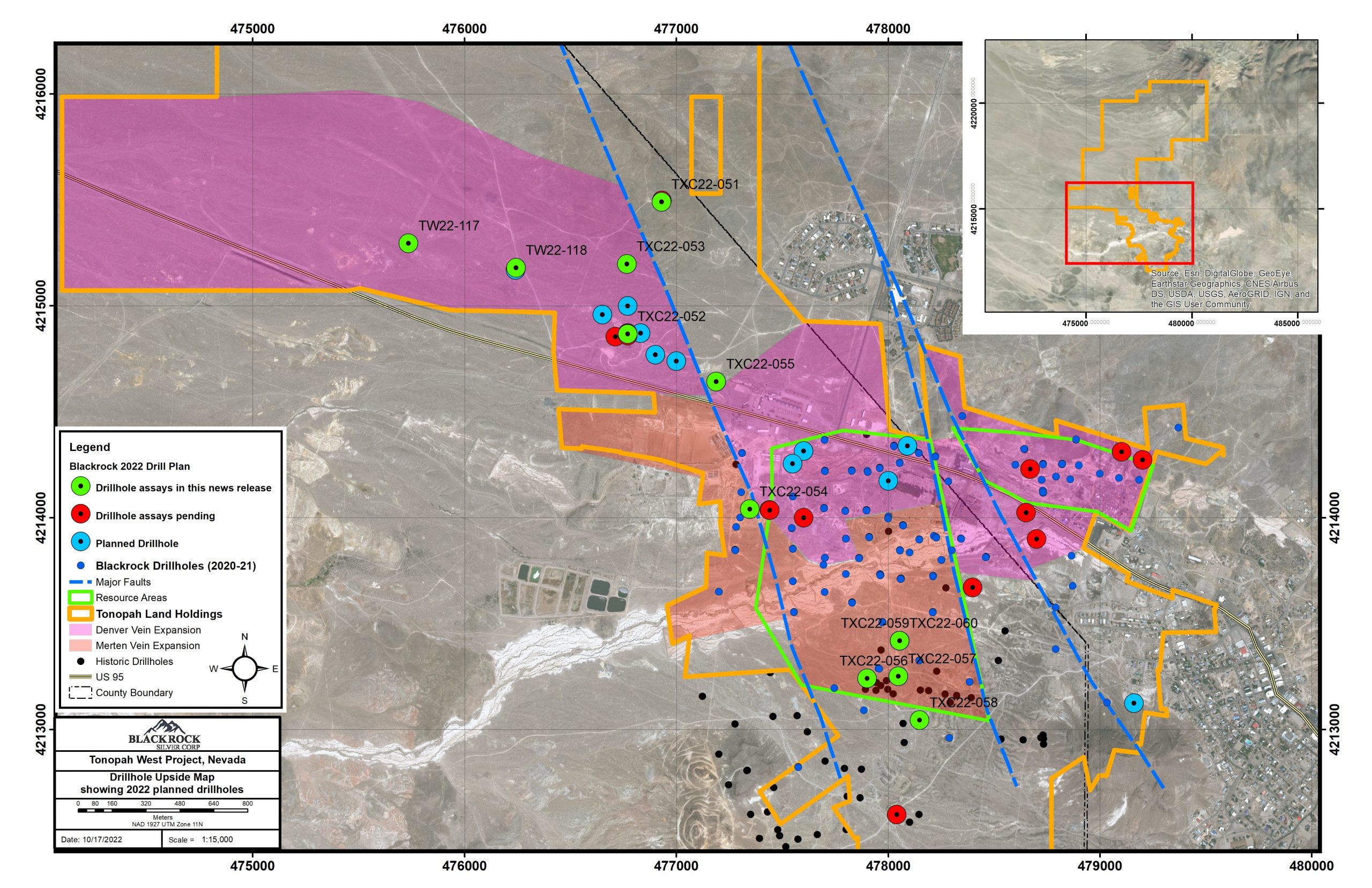
Blackrock Silver (TSXV:BRC) has announced new results from its step-out and in-fill drill programs at the 100%-controlled Tonopah West project in Nevada along the Walker Lane trend. The results display show continued expansion of the known mineralized structure, the Denver vein system. This expands the system by an additional 600 metres to the Northwest, which is now over 3 kilometres of drill-defined strike, and will remain open to the west. Assay results have encountered a large new zone of mineralization to the south as well, with the highest-grade and shallowest intercept at the project.
Andrew Pollardk, Blackrock’s President and CEO commented in a press release:, “With two drill rigs at site, the latest assays from our ongoing 25,000 metre programme have materially expanded the footprint of known mineralization at the project, both to the northwest and to the south, delivering what is our highest-grade and shallowest intercept to date for the project in a new and quickly developing target area. The Denver vein system, which includes Victor, continues to show significant resource expansion potential, as step-out drilling has now tracked it an additional 1.6 kilometres to the northwest beyond the DPB resource area, with a further 500 metre step-out planned as part of this programme. Our exploration model, of which continues to be validated, indicates that this structure remains wide open to the west, where we have an additional 1600 metres of strike potential to our consolidated Tonopah property boundary. It’s clear that the project also has very deep roots and it remains open at depth as we’ve yet to find the bottom of the mineralized system.”
Highlights from the results are as follows:
- Core hole TXC22-057 has delivered the highest-grade intercept at the project to date, intersecting 0.91 metres of 37.86 g/t Au and 2,740 g/t Ag or 6,526.7 g/t AgEq within 1.52 metres grading 22.88 g/t Au and 1,654.1 g/t Ag or 3,942.2 g/t AgEq starting at 191.42 metres down-hole in the New Discovery area along the southern edge of the DPB resource area (AgEq_= Ag_g/t + Au_g/t*100).;
- RC hole TW22-118 intersected 1.52 metres of the Denver vein grading 1.70 grams per tonne (“g/t”) gold (“Au”) and 0.1 g/t silver (“Ag”) or 171 g/t silver equivalent (“AgEq”) a full 1.6 kilometres northwest of the DPB resource area. A follow-up core drillhole is planned to target for higher-grades at a more favourable elevation;
- Drilling continues to expand the mineralized footprint well beyond the April 2022 resource boundary and remains open to the south, northwest, and at depth; and
- Two drill rigs are operating at site and assays for 10 drillholes are pending at this time.
Table 1: Significant Tonopah West drillhole assays using a 150 g/t AgEq cut off
| Hole ID | Area | From (m) | To (m) | Length (m) | Gold (gpt) | Silver (gpt) | AgEq (gpt) |
| TW22-118 | NW Step Out | 428.25 | 429.77 | 1.52 | 1.700 | 0.1 | 170.1 |
| TXC22-051 | NW Step Out | NSV | |||||
| TXC22-052 | NW Step Out | 583.94 | 588.54 | 4.60 | 0.627 | 148.1 | 210.9 |
| Including | 584.61 | 585.28 | 0.67 | 1.890 | 513.0 | 702.0 | |
| TXC22-052 | NW Step Out | 592.38 | 594.64 | 2.26 | 0.325 | 132.3 | 164.8 |
| TXC22-053 | NW Step Out | 674.52 | 676.05 | 1.52 | 1.610 | 3.4 | 164.4 |
| TXC22-054 | DPB | 440.13 | 440.44 | 0.31 | 1.810 | 127.0 | 308.0 |
| TXC22-055 | NW Step Out | NSV | |||||
| TXC22-056 | New Discovery | NSV | |||||
| TXC22-057 | New Discovery | 191.42 | 192.94 | 1.52 | 22.881 | 1654.1 | 3942.2 |
| Including | 192.02 | 192.94 | 0.91 | 37.867 | 2740.0 | 6526.7 | |
| TXC22-058 | New Discovery | 220.07 | 221.29 | 1.22 | 1.650 | 10.2 | 175.2 |
| TXC22-059 | New Discovery | 237.44 | 239.94 | 2.50 | 0.755 | 83.6 | 159.1 |
| TXC22-060 | New Discovery | 225.28 | 225.89 | 0.61 | 0.869 | 75.0 | 161.9 |
| AgEq_g/t = Ag_g/t + Au_g/t*100; AuEq_g/t = Au_g/t + Ag_g/t/100. True thickness unknown. NSV = No significant values | |||||||
Northwest Step Out Target
Drillholes TXC22-051 through -053 and TXC22-055 were completed in the Northwest Step Out target area. Drillhole TXC22-052 is 1,000 metres northwest of the DPB resource area and returned 4.6 metres grading 211 g/t AgEq beneath the Mizpah Andesite.
Data compilation in the Northwest Step Out target shows that drillhole TW22-118 encountered a mineralized structure and returned 170 g/t AgEq over 1.52 metres within the Mizpah Andesite; however, the drillhole terminated above the projected pay zone. TW22-118 is an additional 600 metres west of TXC22-052. Drillhole TW22-117 is 500 metres west of TW22-118. The drillhole encountered the Mizpah Andesite, but was called at 762 metres; thus not testing the mineralized structure beneath the Mizpah.
TXC22-055 was drilled to test the vein structure beneath the Mizpah andesite; however, the drillhole encountered a fault which off set the vein farther to the north. No significant assays were returned, but a better understanding of the cross structure was obtained from the drill information which will help to guide future drilling.
Blackrock’s property boundary extends an additional 1,600 metres west of TW22-117. From the DPB resource area to the edge of the Company’s property boundary, drilling suggests major potential along a 3,700-metre corridor immediately beneath the Mizpah Andesite. The vein system is in a similar stratigraphic position as the Denver vein drilled in the Victor and DPB resource areas. The known strike of the Denver is 1,300 metres drilled in the Victor (500 m) and DPB (800m) resource areas. The Northwest Step shows an additional 3,700 metres of potential along the Denver vein system bringing the total to 5,000 metres of potential high-grade silver and gold on the Tonopah West project (See figure 1). Assay are pending from two core holes, and an additional five pre-collars are complete awaiting core tails.
New Discovery Target
Drilling in the New Discovery target was designed to follow up on Coeur Mining’s 2018 drilling where drillhole TW18-004 encountered a 4.5 metre zone grading 4.933 g/t Au, 337 g/t Ag or 830 g/t AgEq.
Core holes TXC22-056, -057, -058, -059 and TXC22-060 were completed in the target area. Core hole TXC22-057 returned one of the highest grade gold and silver intercepts from the project with over one ounce of gold (37.8 g/t Au) and 2.7 kilograms of silver reported over a 0.91 metre interval. Drillholes TXC22-058, -59 and TXC22-060 all returned significant precious metal assays from the target. Expansion potential is evident, and additional drilling is highly warranted.
Victor Target
Five core holes were completed in the Victor target to test down-dip extensions and footwall vein structures. The drillholes encountered vein material and all assays are currently pending.
DPB Target
Four core drillholes are complete in the DPB area and an additional four are awaiting core tails. Core hole TXC22-054 was drilled to test step-out mineralization encountered in previous drilling (TW21-110). The core hole crossed a north-northwest fault which is believed to be the same structure encountered in TXC22-055. The fault appears to offset mineralization to the north on the west side of the fault. Based on the interpretation of the faults. The DPB area appears to be within a graben bounded on the east and west by north-northwest oriented faults.
The Company is using this new information to help guide continuing exploration of the Tonopah West property and the Tonopah district.
Source: Blackrock Silver Corp.
The above references an opinion and is for information purposes only. It is not intended to be investment advice. Seek a licensed professional for investment advice. The author is not an insider or shareholder of any of the companies mentioned above.
Prospector Metals (TSXV:PPP) announced that it has made three new Ni-Cu project acquisitions in Quebec through staking. The company acquired 100% interests in the projects as part of its Ni-Cu-PGE exploration strategy with a focus on high-grade, conduit-hosted deposits. This strategy is based on technical re-evaluation of publicly available geologic and geophysical data at the projects where Prospector believes drill-ready targets have been overlooked. Jo Price, P. Geo, VP Ex. at Prospector Metals commented in a press release: “The properties offer rare district scale opportunities in largely unexplored portions of Quebec. These opportunities are a great example of the PPP strategy to acquire district-scale exploration projects which have been traditionally overlooked.”
The three projects include Lac Manitou, Lac Nipisso, and Nemo. Prospector Metals’ business model focuses on district scale, early-stage exploration, which the three projects fit. By identifying overlooked and underexplored mineral districts that may display important structural and mineralogical similarities in mining camps, the company hopes to unlock potential that other companies may have missed. These projects mark a step beyond the company’s usual territory, as most of Prospector Metals’ acquisitions have been in Ontario, an often-overlooked tier-1 mining jurisdiction.
Lac Manitou Project Highlights:
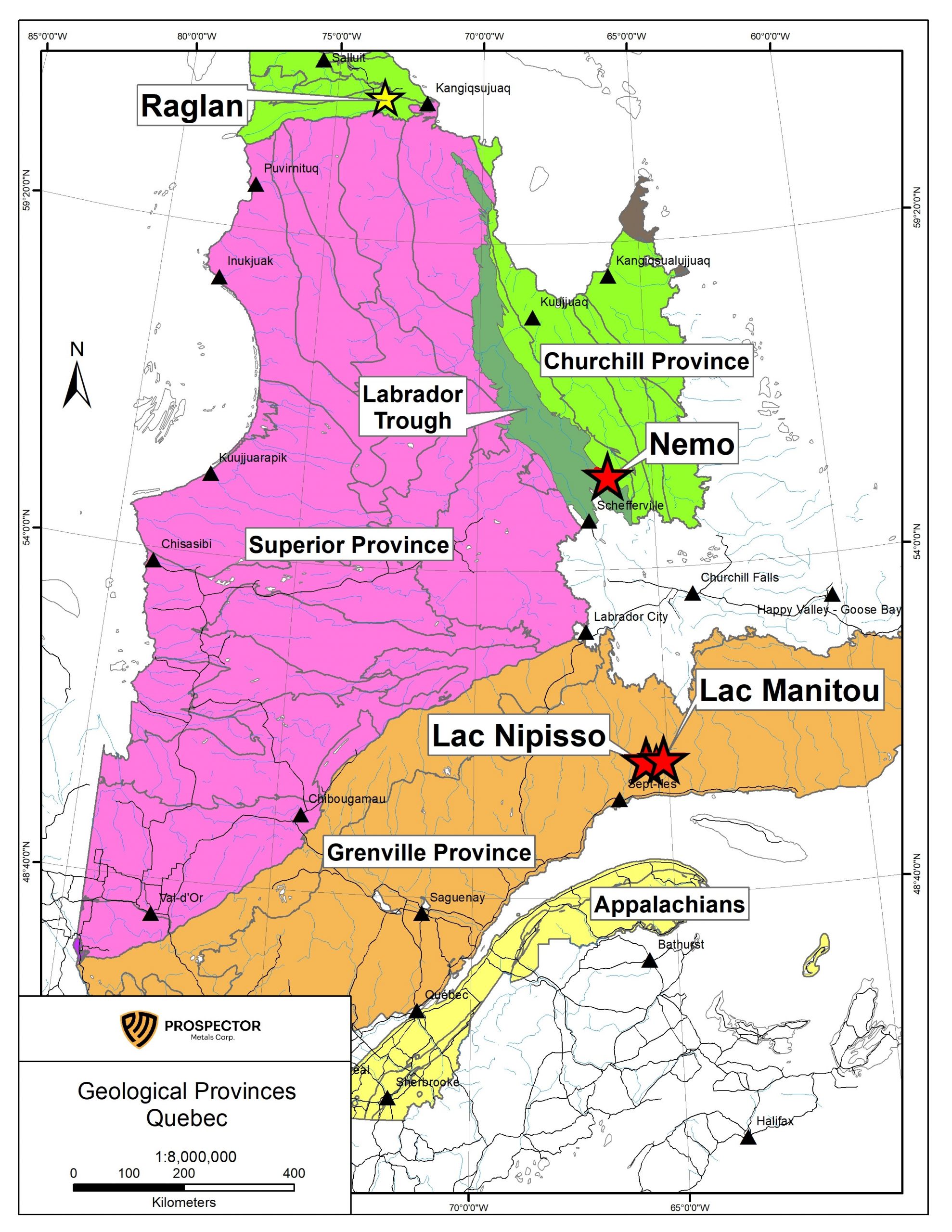
The Lac Manitou Property comprises 10,082 hectares acquired through staking, 85km NE of Sept Iles, QC (Figure 2).
- Underexplored ultramafic complex with existing publicly available 2008 helicopter-borne AeroTEM II data.
- In a thorough review of the historical geophysical data (conductor and decay contants (Tau) amplitude, magnetic expression, shape and size, and taking into account the geologic setting, including the proximity to known nickel-copper-PGE occurences), Prospector identified three highly prospective conductors as potential initial drill targets that have seen no modern exploration or drill testing todate.
- Strong prospective conductors are coincident with low angle faults and have a strike length of greater than 200m. Locally, historical grab samples are reported to have assayed 1.26% Ni, 1.54% Cu & 0.87% Ni, 0.08% Cu.
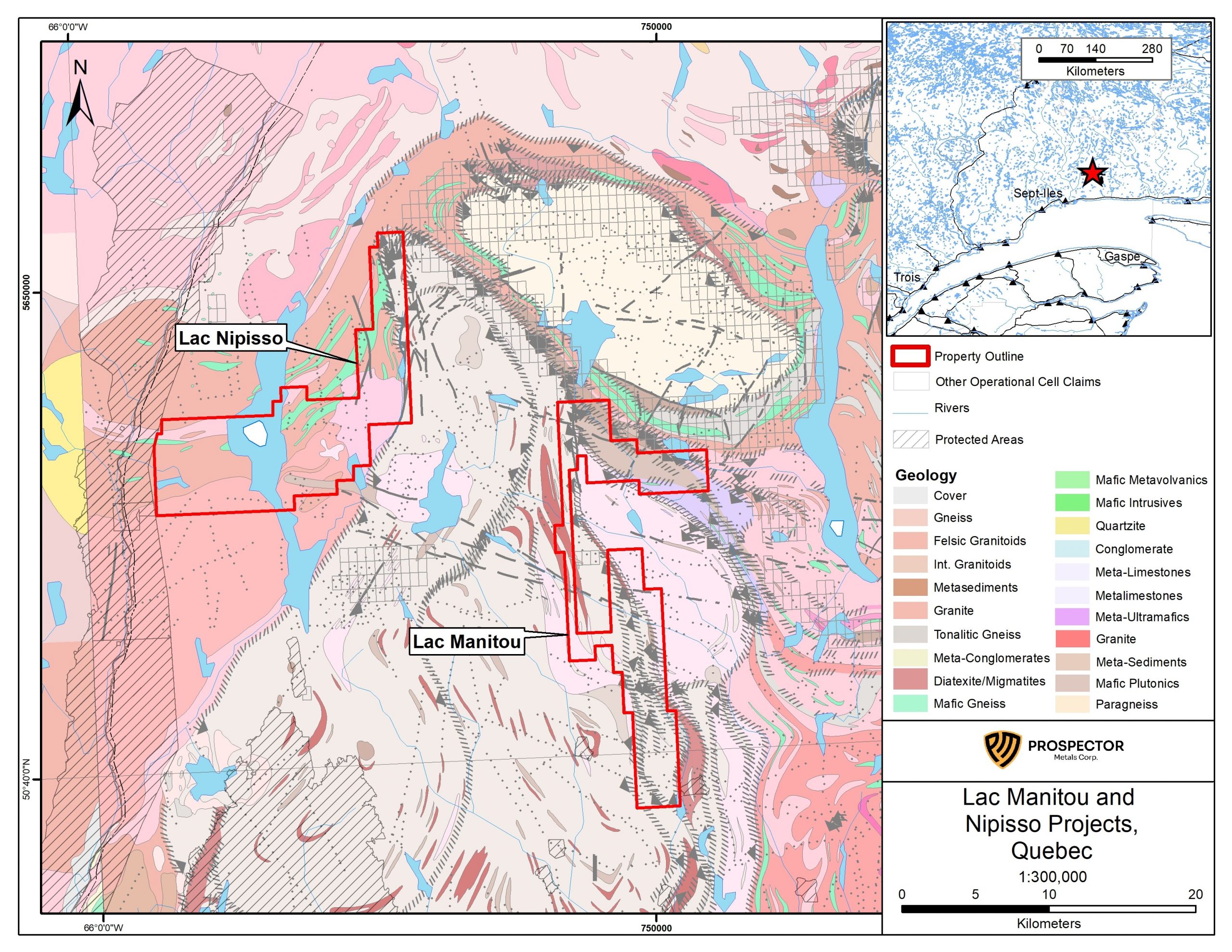
Lac Nipisso Project Highlights:
The Lac Nipisso Property comprises 13,051 hectares acquired through staking, 80km NE of Sept Iles, QC with Quebec Hydro Transmission lines crossing the western edge of the claim boundary (Figure 2).
- The Lac Nipisso project covers a series of elongate easterly to northeasterly trending conductors up to 6km long identified on a 1997 Quebec Geologic Survey Dighem survey. A portion of these conductors were also surveyed by a publicly available 20210 helicopter-borne versatile time domain electromagnetic (VTEM) and aeromagnetic geophysical survey.
- The anomalies are mostly strike limited, showing an EM signature on and at the edges of magnetic highs, further indicating the potential for Ni-Cu (Co-PGE) mineralization.
- The project is situated 6km north of the Lac Volant occurrence, a small, massive magmatic sulfide body hosted trending coarse grained gabbronorite dyke with average grades of 2.3% Cu, 1.9 % Ni and 0.1% Co discovered in 1996 by the Quebec Geologic Survey.
Nemo Project Highlights:
The Nemo Property consists of 15,695 hectares acquired through staking, in the southern Labrador Trough, QC, located 80 km northeast of Schefferville.
- District Scale – Property situated on the largely poorly explored north-central portion of the Doublet Terrane, with abundant voluminous differentiated gabbro-peridotite sill-form intrusions (Figure 3).
- Overlooked – Very underexplored, but with favorable mafic-ultramafic intrusions, and known historical Ni-Cu magmatic sulfide occurrences in the northern block, associated with historical frequency-domain EM anomalies, that have not been followed up with modern Time Domain (VTEM) geophysics, detailed magnetics or drilling
- Proven Regional Endowment – A cluster of nine small bodies of magmatic sulphides, in aggregate approximately 4.8 M tonnes @ 0.87% Cu, 0.52% Ni and 0.84 gpt PGE, with individual deposits ranging from 0.03 M to 1.37 M tonnes, occur in the Blue Lake area in the southern portion of the Doublet Terrane (LaFosse Platinum Group, 1989), While this style of sill-margin net-textured to massive magmatic mineralization is not the ultimate target of Prospector’s planned exploration, it is nonetheless an important indicator of process and prospectivity in the region.
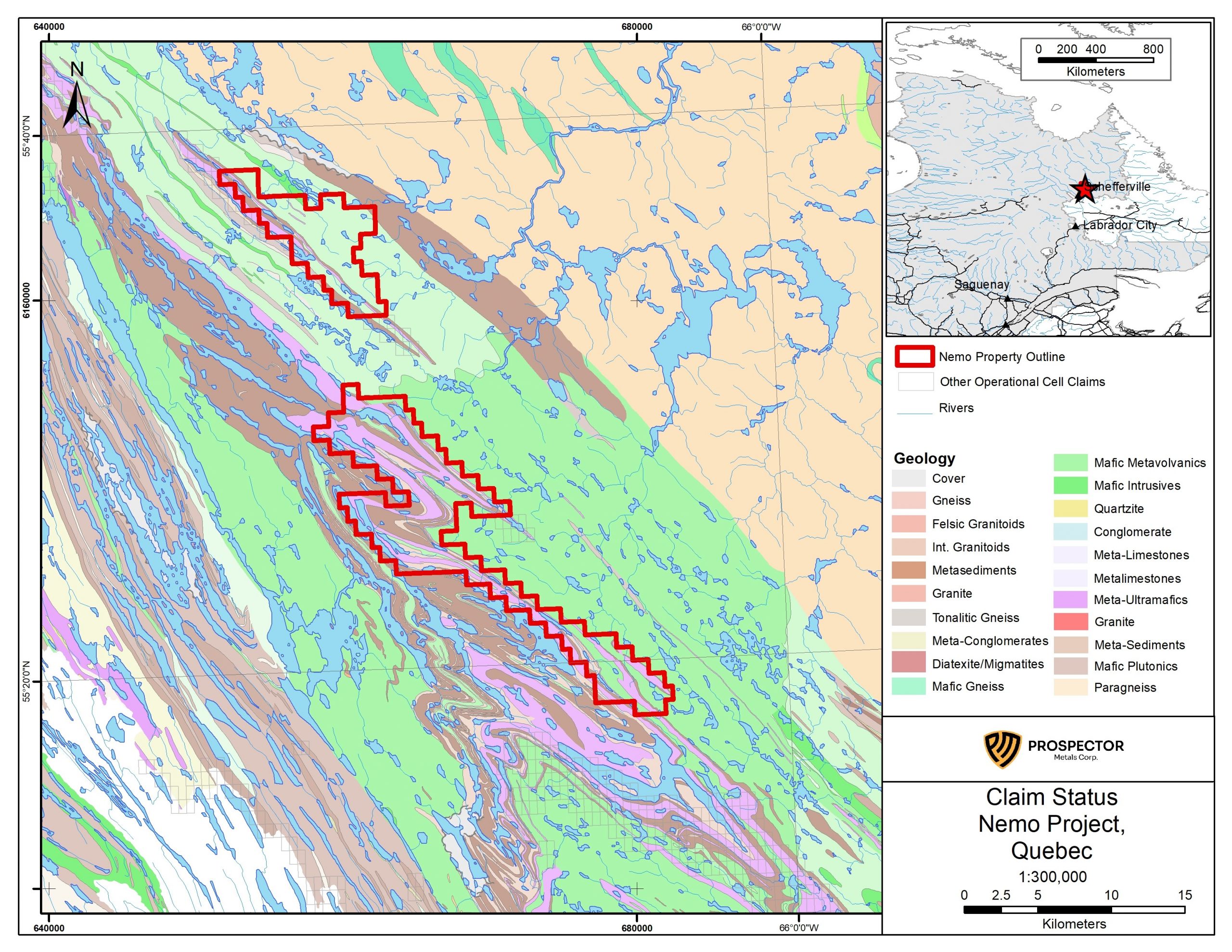
The above references an opinion and is for information purposes only. It is not intended to be investment advice. Seek a licensed professional for investment advice. The author is not an insider or shareholder of any of the companies mentioned above.

Brazil Potash announced on October 3, 2022, that it had signed multiple legally binding agreements with Amaggi Exportação e Importação Ltda. Amaggi is one of the largest global privately held soybean producers with operations complementary to Brazil Potash that include commodities trading, logistics operations, agricultural farming, and energy production. All of the agreements will apply to Brazil Potash’s Phase One Autazes production equalling 2.4 million tonnes of potash per year which includes a 15 to 17-year term and a mutual option for the companies to extend them.
The three agreements are as follows:
- Offtake Agreement, with take or pay terms and conditions for 500,000 tonnes per year of potash;
- Marketing Agreement to sell Brazil Potash’s remaining 1.9 million tonnes of potash per year; and
- Barge Transportation Agreement to ship the initial planned 2.4 million tonnes of potash per year of production to inland ports close to major farming regions within Brazil.
Stan Bharti, Chairman of Brazil Potash commented in a press release: “It’s game changing for Brazil Potash to sign binding contracts with AMAGGI. It is the ideal company for Brazil Potash to contract with as they consume a large amount of potash for application on their farmed land; they also have an extensive distribution and logistics network through their wholly owned subsidiary, Hermasa, which operates a barge-to-ocean vessel transshipment terminal only 40 miles upstream from our Autazes project. I have known Blairo Maggi for a number of years and am excited to be working with AMAGGI and its talented team.”
Blairo Maggi, one of the shareholders of AMAGGI commented in a press release: “Brazil is a country rich in farming know-how with massive amounts of cultivated land, fresh water and an ideal temperature to allow for year-round growing. However, despite being one of the world’s largest consumers of potash, globally, we are heavily exposed given that 98% of this essential plant nutrient is imported. Having a large-scale domestic source of conventional potash – as proposed by Brazil Potash – is important to help ensure both Brazil’s and global food security. I am therefore happy that AMAGGI is able to be part of this important project.”
After the project becomes operational, Hermasa will allocate resources for the covered potash transportation primarily from Brazil Potash’s port near Urucurituba village on the Madeira River to Porto Velho, or through the Amazonas and Tapajos rivers on to other destinations.
The above references an opinion and is for information purposes only. It is not intended to be investment advice. Seek a licensed professional for investment advice. The author is not an insider or shareholder of any of the companies mentioned above.
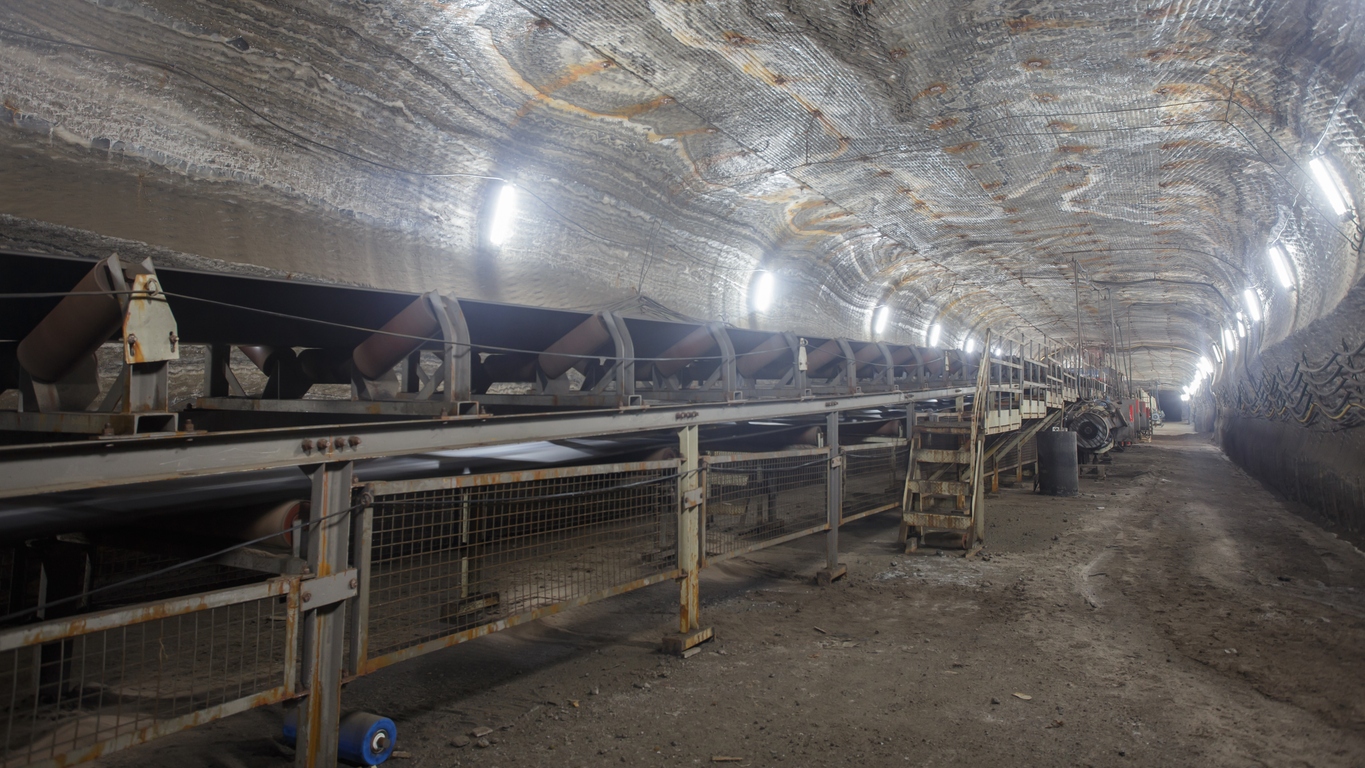
The world economy is quickly moving to a more sustainable, environmentally friendly model, but this transition is causing some shortfalls in available resources, a new study finds. The study, published in The Geographical Journal, shows that the global demand for sulphur is outpacing the supply, which is causing shortages in the chemical.
This is a problem because sulphur is an important component in a range of industrial processes, including fertilizer production and steelmaking. The study warns that the global sulphur shortage could create major economic problems, including higher food prices and lost jobs, as well as difficulty extracting potash.
The study recommends that the global economy find other ways to produce sulphur and potash, such as by developing new technologies or by importing the chemical from other countries like Brazil, in which a renewed push for domestic production has driven new investment and an exciting new project.
Currently, potash mining company Brazil Potash is developing the Autazes project, which aims to double potash output in the coming years and make Brazil self-sufficient in terms of potash production in the near future. The project is a sustainable engineering investment that will produce potassium chloride, an extremely important fertilizer.
The project will employ a process for extracting Sylvinite, a rock made up of halite (salt) and Sylvite, or Sylvine (potassium chloride), which will not harm the earth’s surface soil or environment. The chambers and pillars technique will be utilized throughout the entire extraction operation. In order to remove the ore, which is approximately 800 meters deep, the company will need to excavate two shafts. The Sylvinite ore will be brought to the surface through these wells, and processed so that the Potassium Chloride (fertilizer) can be separated from the Sodium Chloride (kitchen salt).
The world’s demand for sulphur is outpacing the global supply, causing shortages in the chemical and potential economic problems. Brazil is the world’s largest net exporter of agricultural products and food but requires potash imports to hit those numbers. This could be solved with domestic potash production which would drive down agricultural input costs immensely.
On top of the risks to global food security, now there is concern that one of the most important efforts the energy industry has faced may be in jeopardy without such a project. Sulfuric acid is used in the production of phosphorous fertilizers, and for extracting battery metals from ores in the case of cobalt and nickel. The process of smelting these metals requires large amounts of sulphur.
There are also methods of extracting potash with it. Potash comes into play because it is a key component of making phosphorous fertilizer, and when phosphorous prices spike, so do the prices of other fertilizers. Demand is set to rise from 246 to 400 million metric tons by 2040. This is due to more intensive agriculture and the world moving away from fossil fuels.
“Sulfur shortages have occurred before, but what makes this different is that the source of the element is shifting away from being a waste product of the fossil fuel industry,” lead researcher Mark Maslin said in a statement.
“What we’re predicting is that as supplies of this cheap, plentiful, and easily accessible form of sulfur dry up, demand may be met by a massive increase in direct mining of elemental sulfur. This, by contrast, will be dirty, toxic, destructive, and expensive.”
What is needed to solve the shortage is a multi-focal approach to innovation and new projects. More research is needed for renewable potash mining, and new projects need to be developed faster.
Additionally, global fertilizer shortages could be alleviated by a move away from fossil fuels and towards a more sustainable, environmentally friendly model, but only if the raw materials can supply that shift. That would require more potash projects around the world, especially outside the current dominant potash-producing countries of Russia, Belarus, and Canada.
The above references an opinion and is for information purposes only. It is not intended to be investment advice. Seek a licensed professional for investment advice. The author is not an insider or shareholder of any of the companies mentioned above.
Solaris Resources (TSX:SLS) has reported new assay results today from the first series of drill holes during follow-up drilling on the discovery of Warintza West. The results outline a new deposit that remains open in the Warintza cluster, just adjacent to the Mineral Resource Estimate (MRE) the company published in April 2022.
These follow-up holes fan out in all directions, outlining a broad porphyry deposit of at least 900m x 600m and still open and lies adjacent to and not included within the MRE. The company is focusing on targeting growth for the high-grade starter pit at Warintza Central and expanding the Warintza East discovery next while continuing the planned drilling at Warintza West. The Warintza Project is located in southeastern Ecuador, and Warintza West is the fourth and latest discovery at the project.
Highlights from the results are as follows:
Warintza West is one of four discoveries made to date within the Warintza porphyry cluster and is located 1km west of the Warintza Central Mineral Resource Estimate (“MRE”)¹ reported in April. The discovery was reported with the results of SLSW-01 (see press release dated February 16, 2021) – these follow-up holes fan out in all directions, outlining a broad porphyry deposit of at least 900m x 600m and still open and lies adjacent to and not included within the MRE. Follow-up drilling to test the further extent of the deposit is planned after priority drilling at Warintza Central aimed at expanding the starter pit and higher-grade resource expansion potential at Warintza East.
- SLSW-07 (drilled north) returned 686m of 0.46% CuEq¹ within a broader interval of 912m of 0.41% CuEq¹ from near surface
- SLSW-02 (drilled vertically) returned 246m of 0.47% CuEq¹ from near surface
- SLSW-09 (drilled west) returned 202m of 0.45% CuEq¹ within a broader interval of 444m of 0.36% CuEq¹ from near surface
- SLSW-08 (drilled northwest) returned 78m of 0.56% CuEq¹ within a broader interval of 812m of 0.32% CuEq¹ from near surface
- SLSW-04 (drilled northeast) returned 264m of 0.44% CuEq¹ from near surface
- SLSW-10 (drilled southwest) returned 220m of 0.41% CuEq¹ from near surface
- SLSW-03 (drilled southeast) returned 102m of 0.39% CuEq¹ within a broader interval of 911m of 0.24% CuEq¹ from near surface
- SLSW-05 (drilled northeast) returned 272m of 0.38% CuEq¹ within a broader interval of 570m of 0.30% CuEq¹ from near surface
- SLSW-06 (drilled east) returned 732m of 0.32% CuEq¹ from near surface
- Drilling at Warintza West confirms the interpretation of a broad porphyry deposit that remains open in all directions, with assays pending from a series of three additional holes testing the zone further to the west, east and south
- Step-out drilling is planned targeting high-grade surface sampling
Figure 1 – Plan View of Warintza West Drilling Released to Date
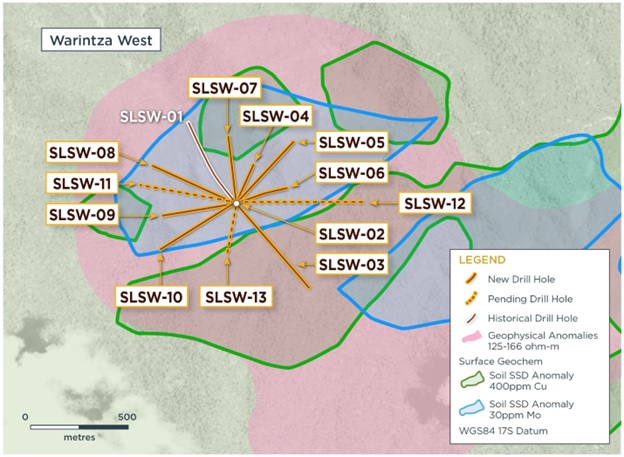
Table 1 – Assay Results
| Hole ID | Date Reported | From (m) | To (m) | Interval (m) | Cu (%) | Mo (%) | Au (g/t) | CuEq¹ (%) |
| SLSW-10 | 24 | 244 | 220 | 0.36 | 0.01 | 0.02 | 0.41 | |
| SLSW-09 | 24 | 468 | 444 | 0.31 | 0.01 | 0.03 | 0.36 | |
| Including | 24 | 226 | 202 | 0.41 | 0.01 | 0.03 | 0.45 | |
| SLSW-08 | 32 | 844 | 812 | 0.26 | 0.01 | 0.02 | 0.32 | |
| Including | 32 | 110 | 78 | 0.51 | 0.01 | 0.02 | 0.56 | |
| SLSW-07 | 24 | 936 | 912 | 0.32 | 0.02 | 0.03 | 0.41 | |
| Including | Oct 13, 2022 | 30 | 716 | 686 | 0.37 | 0.02 | 0.03 | 0.46 |
| SLSW-06 | 34 | 766 | 732 | 0.25 | 0.01 | 0.02 | 0.32 | |
| SLSW-05 | 34 | 604 | 570 | 0.23 | 0.01 | 0.02 | 0.30 | |
| Including | 34 | 306 | 272 | 0.31 | 0.01 | 0.02 | 0.38 | |
| SLSW-04 | 38 | 302 | 264 | 0.36 | 0.02 | 0.03 | 0.44 | |
| SLSW-03 | 38 | 949 | 911 | 0.19 | 0.01 | 0.02 | 0.24 | |
| Including | 40 | 142 | 102 | 0.33 | 0.01 | 0.03 | 0.39 | |
| SLSW-02 | 24 | 270 | 246 | 0.38 | 0.02 | 0.02 | 0.47 |
Notes to table: True widths of the mineralized zone are not known at this time.
Table 2 – Collar Location
| Hole ID | Easting | Northing | Elevation (m) | Depth (m) | Azimuth (degrees) | Dip (degrees) |
| SLSW-10 | 798507 | 9648465 | 1519 | 713 | 238 | -51.25 |
| SLSW-09 | 798507 | 9648465 | 1519 | 767 | 260 | -60.31 |
| SLSW-08 | 798507 | 9648465 | 1519 | 974 | 295 | -60.50 |
| SLSW-07 | 798507 | 9648465 | 1519 | 945 | 352 | -70.56 |
| SLSW-06 | 798507 | 9648465 | 1519 | 767 | 70 | -70.72 |
| SLSW-05 | 798507 | 9648465 | 1519 | 807 | 45 | -60.73 |
| SLSW-04 | 798507 | 9648465 | 1519 | 455 | 22 | -60.89 |
| SLSW-03 | 798507 | 9648465 | 1519 | 949 | 140 | -55.50 |
| SLSW-02 | 798507 | 9648465 | 1519 | 1227 | 0 | -90.00 |
| Notes to table: The coordinates are in WGS84 17S Datum. | ||||||
Endnotes
- Refer to Solaris’ press release dated April 18, 2022 and technical report titled, “NI 43-101 Technical Report for the Warintza Project, Ecuador” with an effective date of April 1, 2022, prepared by Mario E. Rossi and filed on the Company’s SEDAR profile at www.sedar.com.
- Copper-equivalence calculated as: CuEq (%) = Cu (%) + 4.0476 × Mo (%) + 0.487 × Au (g/t), utilizing metal prices of US$3.50/lb Cu, US$15.00/lb Mo, and US$1,500/oz Au, and assumes recoveries of 90% Cu, 85% Mo, and 70% Au based on preliminary metallurgical test work.
The above references an opinion and is for information purposes only. It is not intended to be investment advice. Seek a licensed professional for investment advice. The author is not an insider or shareholder of any of the companies mentioned above.
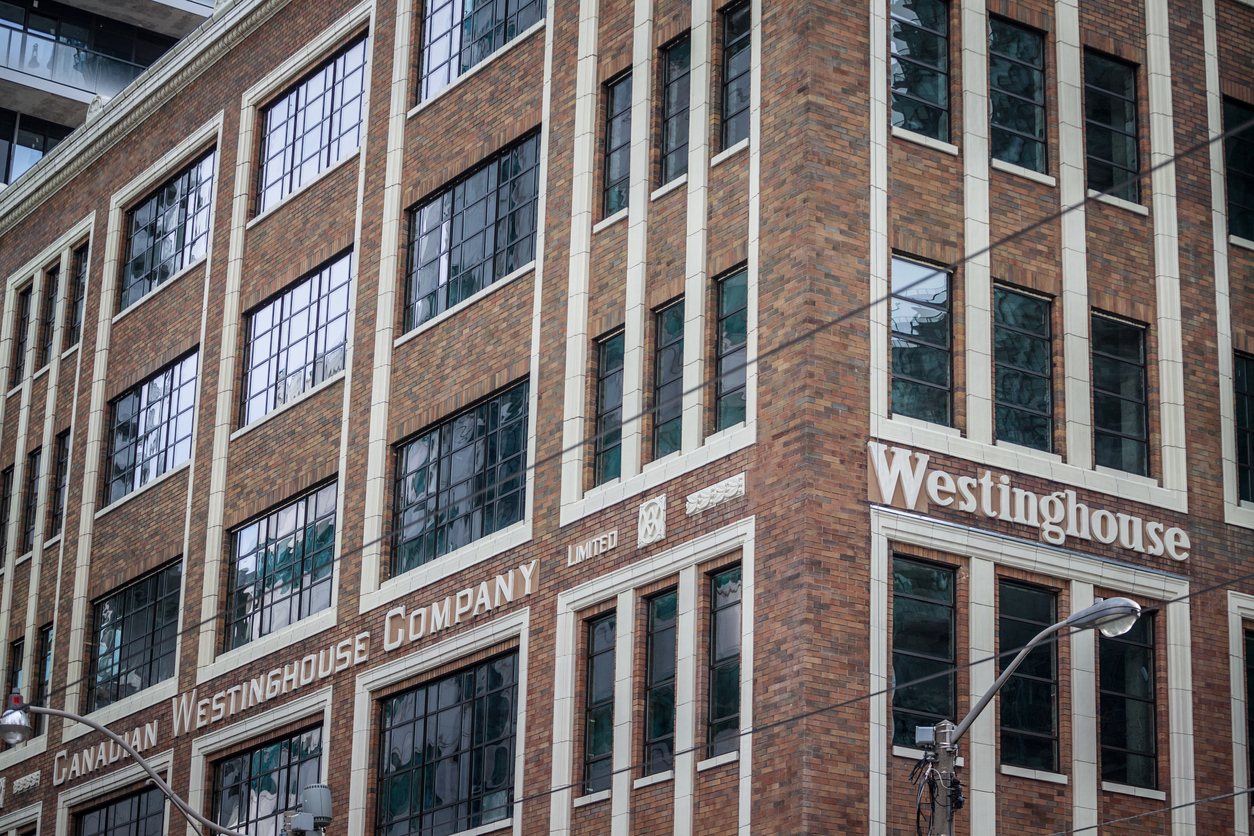
Cameco Corp. and Brookfield Renewable Partners have announced the acquisition of Westinghouse Electric for $7.9 billion including debt. Westinghouse is a nuclear plant equipment maker, making the acquisition an important one for the growing interest in nuclear energy around the world.
Energy companies are increasingly looking to nuclear energy as an environmentally-friendly and reliable option for the future. This acquisition with an equity value of $4.5 billion will help Cameco and Brookfield Renewable Partners expand their nuclear businesses.
Cameco will take 49% stake in Westinghouse, and Brookfield Renewable and the company’s institutional partners will own the remaining stake. Brookfield Business Partners acquired Westinghouse from Toshiba Corp. in 2018 for $4.6 billion including debt. Brookfield Business Partners is an affiliate of Brookfield. Brookfield Business has stated it could generate approximately $1.8 billion from the sale of its 44% Westinghouse stake. The acquisition should close sometime in the second half of 2023.
Nuclear power has come to the forefront as natural gas and crude oil prices have skyrocketed during an energy crisis in Europe. Nuclear power was once seen as a dangerous option, but technological advancements and the growing environmental consciousness of the public have led to a resurgence in the industry.
Countries such as Germany and France have committed to nuclear power as part of their transition to completely renewable energy sources like solar and wind. Natural gas has traditionally been a major source of energy for Europe but with prices soaring, consumers are increasingly asking for alternatives.
The acquisition of Westinghouse Electric will help Cameco and Brookfield Renewable Partners expand their nuclear businesses and help to bring nuclear energy back into the forefront as an environmentally-friendly and reliable option. “We’re witnessing some of the best market fundamentals we’ve ever seen in the nuclear energy sector,” Uranium fuel supplier Cameco’s chief executive, Tim Gitzel, said.
It also complements Cameco’s business as one of the largest suppliers of uranium fuel. The company can provide Westinghouse with the technology and expertise to manufacture nuclear plant equipment and build new nuclear plants.
Westinghouse was originally founded in 1886 and became a leading manufacturer of nuclear plant equipment. The company has a long history of innovation in the nuclear industry and has developed some of the most advanced nuclear plant equipment in the world. Founded by George Westinghouse, the company was a backer of the alternating-current system in opposition of the direct-current system backed by Thomas Edison and other well-entrenched interests.
The above references an opinion and is for information purposes only. It is not intended to be investment advice. Seek a licensed professional for investment advice. The author is not an insider or shareholder of any of the companies mentioned above.
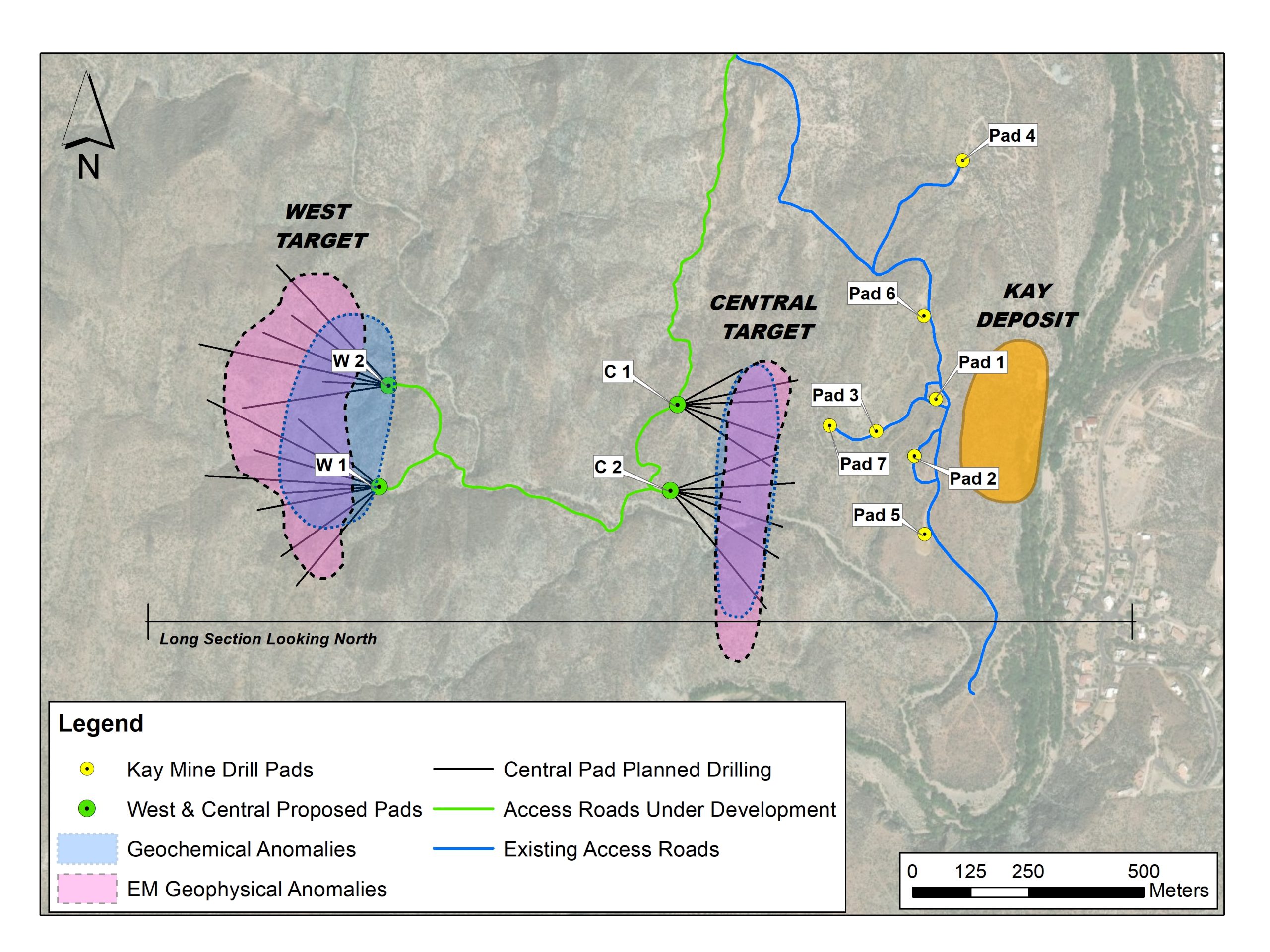
Arizona Metals (TSXV:AMC) has announced results from seen recently completed drill holes at the Kay Mine Project in Arizona. Arizona Metals has completed 70,000 metres of drilling at the Kay Mine, and is fully funded for the completion of the 19,000 metres planned in the Phase 2 program. This includes the priority focus areas and the Phase 3 program of 76,000 more metres of drilling.
Marc Pais, CEO, commented in a press release: “Drilling at the Kay Mine Project continues to intersect very large widths and high grades of massive sulphide mineralization. The holes released today demonstrate excellent continuity of mineralization in all directions, while also showing that mineralization is substantially thicker than suggested by our original modelling. Drilling has extended mineralization well into both the hanging-wall and foot-wall envelopes, which gives the potential to define a significant tonnage of mineralization. The large widths and high grades being encountered at Kay are extremely rare in the context of VMS deposits either in production or being explored globally.
We have drilled approximately 70,000 meters at Kay to date, with each hole solidifying our opinion that this is one of the very few large precious-metals rich VMS deposits not yet mined, and more importantly, is potentially part of a much larger mineralized system that has yet to be explored.
Road construction is well underway to reach drill locations that will test the Central Target, located 300 m west of the Kay Mine Deposit. Drilling at pads C1 and C2 is expected to commence in November 2022, and will comprise part of the planned 76,000 metre Phase 3 program. Permitting is also in progress for pads W1 and W2 to test the Western Target, also part of the Phase 3 program.
The Company is fast approaching an inflection point in our drilling strategy. Over the last two years we have focused on expanding the Kay Mine Deposit, which covers only 320 m of strike. This represents only 3% of the 11,000 m of prospectively mineralized geological contact horizon defined by extensive surface mapping, soil geochemistry, airborne and ground electromagnetic surveys, and gravity surveys. Completion of the Central Target drill road and pads, with drilling anticipated to commence in November, will mark a shift in focus from expanding Kay, to also aggressively drill-testing our claims to the west to discover new VMS deposits. The Phase 3 program will entail 76,000 m of drilling at an anticipated cost of $27 million. Work will continue at the Kay Mine Deposit to define a resource, in conjunction with associated hydrological, rock geochemistry, metallurgical, and specific gravity studies, but we anticipate that over the next 18 months approximately 90% of our budget will go towards exploration south, north, and west of the Kay Mine Deposit.”
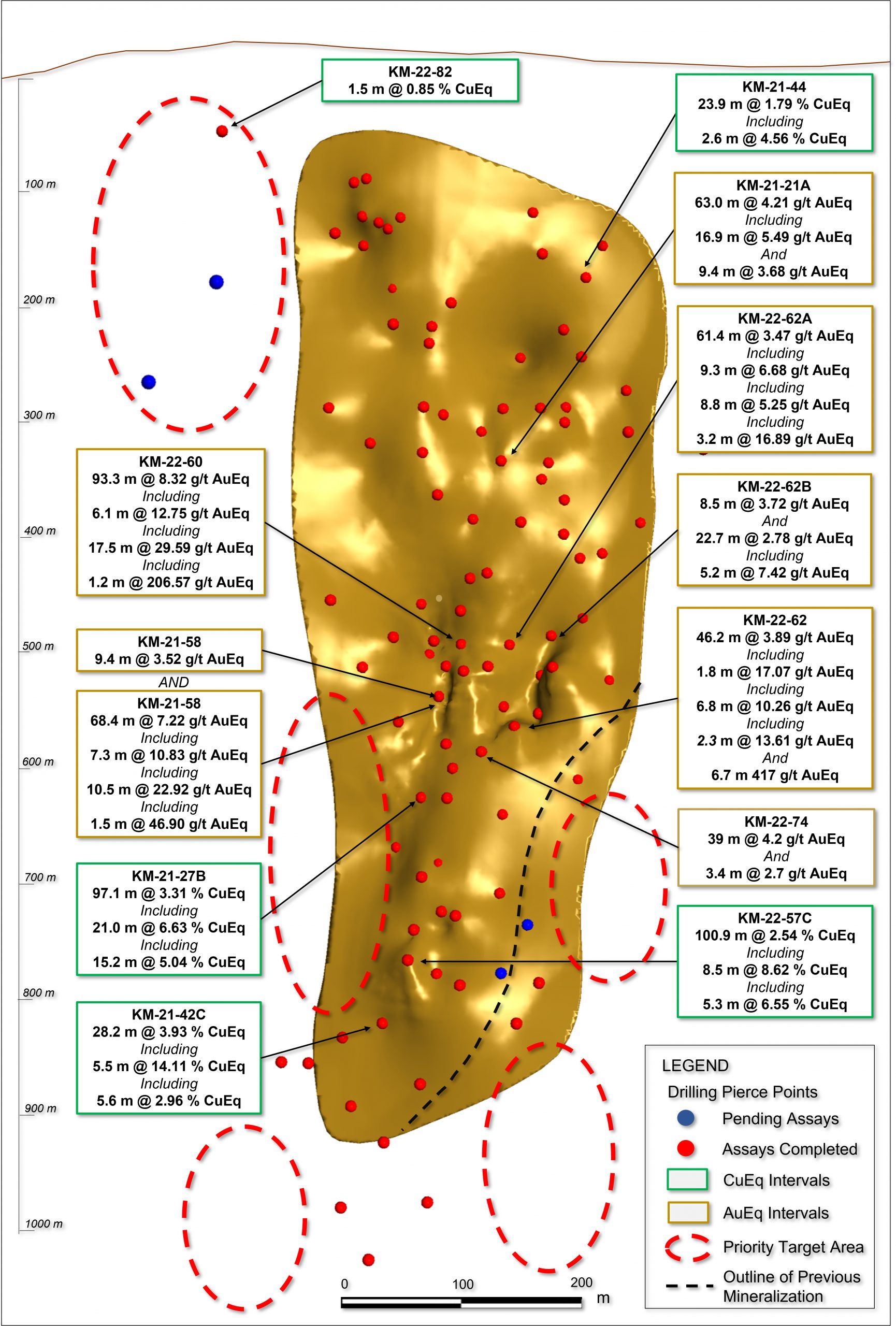
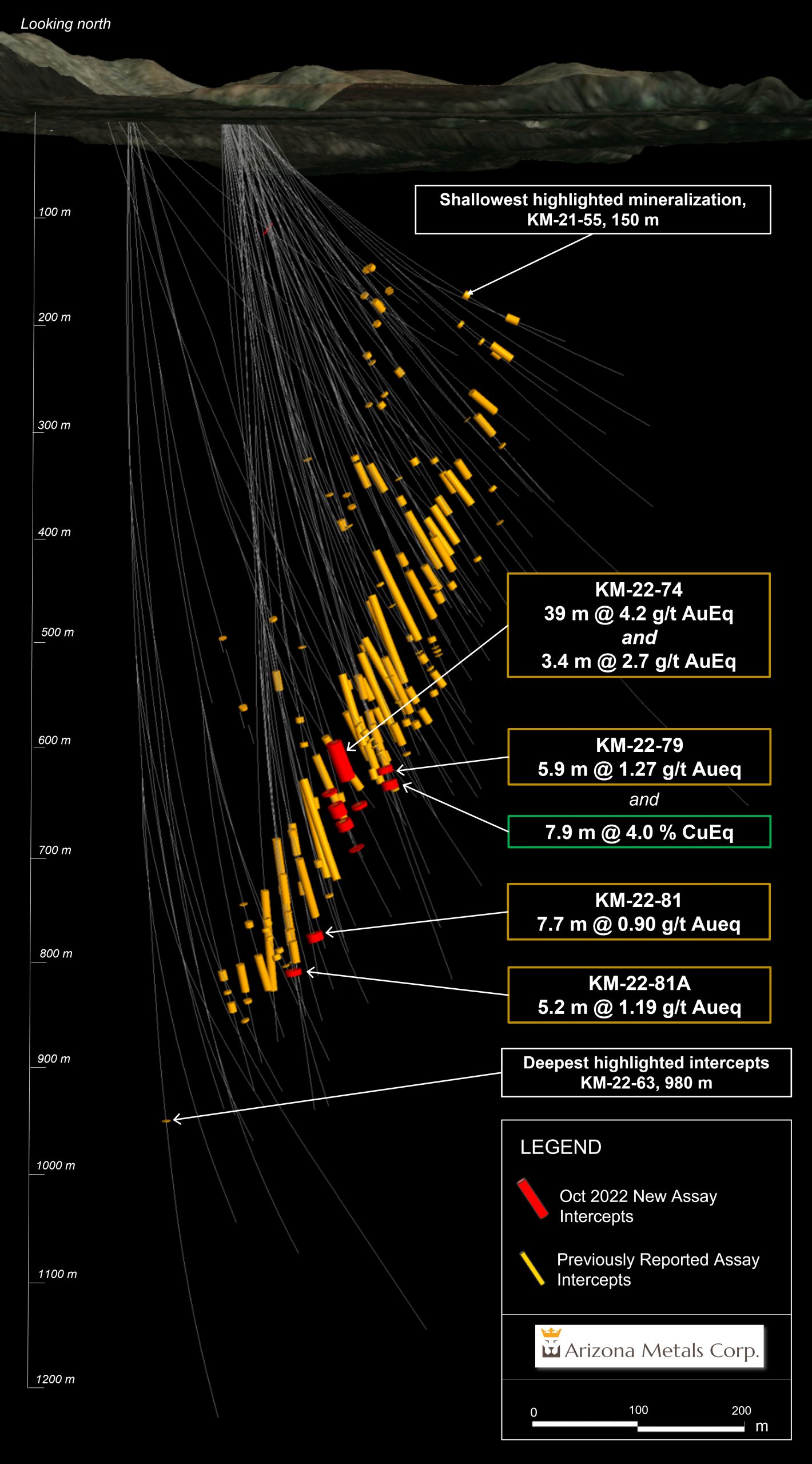
Kay Mine Phase 3 Drill Program Update – Moving to Central and Western Targets
The Phase 3 drill program will test the numerous parallel targets heading west of Kay, as well as the possible northern and southern extensions of the Kay Deposit. The road toward the Central Target (located 300 m west of the Kay Deposit) is underway, with drilling at the Central Target pads expected to commence during November 2022.
A total of six holes were drilled to the west from pad 7 (see Figure 3), but due to the westerly dip of the stratigraphy and the Central Target EM anomaly, these holes did not fully test the Central Target. Results from these six holes, along with updated structural mapping and ground-loop EM geophysics, will be used to refine the drill targeting from pads C1 and C2. The location of these pads will provide much better angles to intersect the core of the Central Target, while also testing for its extensions north and south on strike of the mafic-felsic contact that potentially hosts mineralization.
Permitting is in progress for drill pads at the Western Target (W1 and W2, located ~1,000 m west of the Kay Deposit), with road construction anticipated to commence in Q4’22 and drilling in Q1’23.
The common shares of the Company have been listed on the TSX Venture Exchange (the “TSXV”) since August 7, 2019 under the symbol “AMC”. The Company has received approval to graduate its listing to the Toronto Stock Exchange (the “TSX”), and the Company’s common shares will begin trading on the TSX on October 13, 2022, and will be delisted from the TSXV upon commencement of trading on the TSX. The Company’s trading symbol (AMC) and CUSIP will remain the same and no action is required by shareholders.
Table 1. Results of Phase 2 Drill Program at Kay Mine, Yavapai County, Arizona announced in this news release.
| Analyzed Grade | Analyzed Metal Equivalent | Metal Equivalent | ||||||||||||
| Hole ID | From m | To m | Length m | Cu % | Au g/t | Zn % | Ag g/t | Pb % | Cu eq % | Au eq g/t | Zn eq% | Cu eq % | Au eq g/t | Zn eq% |
| KM-22-74 | 649.2 | 688.2 | 39.0 | 0.40 | 1.77 | 3.39 | 30.5 | 0.32 | 3.09 | 5.07 | 8.05 | 2.56 | 4.20 | 6.67 |
| including | 652.6 | 659.8 | 7.2 | 0.68 | 2.57 | 5.13 | 18.0 | 0.11 | 4.39 | 7.19 | 11.42 | 3.67 | 6.02 | 9.55 |
| including | 678.5 | 688.2 | 9.8 | 0.15 | 3.08 | 5.67 | 32.0 | 0.51 | 4.57 | 7.50 | 11.90 | 3.74 | 6.13 | 9.73 |
| KM-22-74 | 716.3 | 719.6 | 3.4 | 0.03 | 0.84 | 2.65 | 37.5 | 0.57 | 1.99 | 3.26 | 5.17 | 1.65 | 2.71 | 4.30 |
| KM-22-75 | 690.7 | 692.8 | 2.1 | 0.23 | 0.25 | 0.84 | 9.3 | 0.22 | 0.83 | 1.36 | 2.15 | 0.71 | 1.17 | 1.86 |
| KM-22-75 | 705.0 | 716.9 | 11.9 | 0.67 | 0.17 | 0.30 | 8.0 | 0.05 | 0.97 | 1.58 | 2.51 | 0.86 | 1.41 | 2.24 |
| KM-22-75 | 723.1 | 731.7 | 8.5 | 0.31 | 0.50 | 1.27 | 11.6 | 0.09 | 1.21 | 1.99 | 3.16 | 1.03 | 1.69 | 2.69 |
| KM-22-75 | 753.5 | 754.5 | 1.1 | 0.23 | 1.22 | 1.85 | 12.0 | 0.04 | 1.78 | 2.92 | 4.64 | 1.46 | 2.39 | 3.80 |
| KM-22-79 | 667.8 | 673.8 | 5.9 | 0.11 | 0.52 | 1.03 | 6.9 | 0.23 | 0.93 | 1.52 | 2.42 | 0.77 | 1.27 | 2.02 |
| KM-22-79 | 681.8 | 689.8 | 7.9 | 2.12 | 1.38 | 3.14 | 47.2 | 0.27 | 4.61 | 7.55 | 11.98 | 4.00 | 6.55 | 10.40 |
| KM-22-81 | 813.8 | 822.4 | 8.5 | 0.10 | 0.22 | 0.69 | 15.5 | 0.11 | 0.65 | 1.07 | 1.69 | 0.54 | 0.89 | 1.42 |
| KM-22-81A | 847.7 | 852.8 | 5.2 | 0.03 | 0.19 | 2.04 | 46.2 | 0.48 | 1.40 | 2.29 | 3.64 | 1.19 | 1.94 | 3.09 |
| KM-22-82 | 226.5 | 228.0 | 1.5 | 0.14 | 0.07 | 1.58 | 5.4 | 0.53 | 0.95 | 1.55 | 2.46 | 0.85 | 1.40 | 2.22 |
The true width of mineralization is estimated to be 50% to 99% of reported core width, with an average of 76%. (2) Assumptions used in USD for the copper and gold Metal Equivalent calculations were metal prices of $4.63/lb Copper, $1937/oz Gold, $25/oz Silver, $1.78/lb Zinc, and $1.02/lb Pb. Assumed metal recoveries (rec.), based on a preliminary review of historic data by SRK and ProcessIQ1, were 93% for copper, 92% for zinc, 90% for lead, 72% silver, and 70% for gold. The following equation was used to calculate copper equivalence: CuEq = Copper (%) (93% rec.) + (Gold (g/t) x 0.61)(72% rec.) + (Silver (g/t) x 0.0079)(72% rec.) + (Zinc (%) x 0.3844)(93% rec.) +(Lead (%) x 0.2203)(93% rec.). The following equation was used to calculate gold equivalence: AuEq = Gold (g/t)(72% rec.) + (Copper (%) x 1.638)(93% rec.) + (Silver (g/t) x 0.01291)(72% rec.) + (Zinc (%) x 0.6299)(93% rec.) +(Lead (%) x 0.3609)(93% rec.). Analyzed Metal Equivalent calculations are reported for illustrative purposes only. The metal chosen for reporting on an equivalent basis is the one that contributes the most dollar value after accounting for assumed recoveries.
Table 2. Full results of Phase 2 Drill Program at Kay Mine, Yavapai County, Arizona.
| Analyzed Grade | Analyzed Metal Equivalent | Metal Equivalent | ||||||||||||
| Hole ID | From m | To m | Length m | Cu % | Au g/t | Zn % | Ag g/t | Pb % | Cu eq % | Au eq g/t | Zn eq% | Cu eq % | Au eq g/t | Zn eq% |
| KM-21-17 | 504.4 | 505.4 | 0.9 | 1.19 | 4.73 | 0.05 | 9.0 | 0.00 | 4.17 | 6.83 | 10.84 | 3.20 | 5.24 | 8.31 |
| KM-21-18 | 404.3 | 429.8 | 25.5 | 0.35 | 0.86 | 1.71 | 15.8 | 0.23 | 1.71 | 2.80 | 4.44 | 1.43 | 2.35 | 3.72 |
| including | 408.6 | 410.6 | 2.0 | 0.50 | 2.22 | 7.25 | 64.4 | 0.82 | 5.33 | 8.74 | 13.87 | 4.51 | 7.39 | 11.72 |
| including | 424.9 | 427.3 | 2.4 | 1.60 | 2.59 | 3.16 | 18.0 | 0.52 | 4.66 | 7.64 | 12.12 | 3.92 | 6.43 | 10.21 |
| KM-21-18A | 391.4 | 423.8 | 32.5 | 1.09 | 0.62 | 1.25 | 17.7 | 0.15 | 2.13 | 3.48 | 5.53 | 1.85 | 3.04 | 4.82 |
| including | 393.3 | 395.8 | 2.4 | 9.57 | 2.83 | 2.72 | 40.9 | 0.28 | 12.73 | 20.87 | 33.12 | 11.36 | 18.63 | 29.56 |
| KM-21-19 | 377.8 | 378.3 | 0.5 | 3.39 | 5.59 | 6.83 | 128.0 | 0.63 | 10.58 | 17.34 | 27.52 | 8.81 | 14.44 | 22.92 |
| KM-21-20 | 442.7 | 443.6 | 0.9 | 2.56 | 0.52 | 3.52 | 18.5 | 0.14 | 4.40 | 7.22 | 11.45 | 3.98 | 6.52 | 10.34 |
| KM-21-20 | 456.0 | 458.1 | 2.1 | 1.49 | 0.35 | 0.14 | 6.0 | 0.04 | 1.81 | 2.97 | 4.71 | 1.63 | 2.66 | 4.23 |
| KM-21-21 | 452.6 | 495.5 | 42.8 | 0.80 | 0.78 | 1.52 | 15.1 | 0.15 | 2.01 | 3.29 | 5.22 | 1.73 | 2.83 | 4.49 |
| including | 488.7 | 493.5 | 4.8 | 0.26 | 2.50 | 6.13 | 27.6 | 0.54 | 4.48 | 7.34 | 11.65 | 3.74 | 6.13 | 9.73 |
| KM-21-21A | 422.0 | 431.4 | 9.4 | 1.17 | 0.57 | 2.25 | 8.6 | 0.36 | 2.53 | 4.15 | 6.58 | 2.25 | 3.68 | 5.85 |
| KM-21-21A | 439.1 | 502.1 | 63.0 | 0.45 | 1.28 | 3.14 | 58.8 | 0.77 | 3.08 | 5.04 | 8.00 | 2.57 | 4.21 | 6.67 |
| including | 465.0 | 481.9 | 16.9 | 0.52 | 2.45 | 4.05 | 80.9 | 0.99 | 4.43 | 7.26 | 11.53 | 3.62 | 5.94 | 9.42 |
| KM-21-22 | 679.4 | 682.8 | 3.4 | 0.79 | 0.95 | 0.06 | 12.0 | 0.01 | 1.49 | 2.44 | 3.87 | 1.23 | 2.01 | 3.20 |
| KM-21-23 | 394.4 | 401.4 | 7.0 | 0.36 | 0.93 | 1.94 | 13.5 | 1.17 | 2.05 | 3.35 | 5.32 | 1.73 | 2.84 | 4.51 |
| KM-21-23 | 438.6 | 459.2 | 20.6 | 0.17 | 1.18 | 1.93 | 27.8 | 0.37 | 1.94 | 3.17 | 5.03 | 1.58 | 2.59 | 4.11 |
| KM-21-24 | 501.2 | 592.1 | 90.8 | 0.45 | 1.33 | 3.42 | 44.6 | 0.41 | 3.02 | 4.95 | 7.86 | 2.53 | 4.15 | 6.59 |
| including | 501.2 | 521.7 | 20.4 | 1.34 | 1.70 | 6.35 | 113.1 | 0.66 | 5.86 | 9.60 | 15.24 | 4.99 | 8.18 | 12.99 |
| including | 520.9 | 521.7 | 0.8 | 1.75 | 16.50 | 9.55 | 574.0 | 1.22 | 20.31 | 33.29 | 52.82 | 15.57 | 25.52 | 40.50 |
| including | 575.9 | 592.1 | 16.2 | 0.16 | 2.50 | 6.00 | 44.4 | 0.79 | 4.51 | 7.40 | 11.74 | 3.75 | 6.14 | 9.74 |
| including | 588.7 | 590.4 | 1.7 | 0.47 | 9.98 | 23.70 | 18.2 | 0.13 | 15.84 | 25.96 | 41.20 | 13.21 | 21.65 | 34.36 |
| KM-21-25 | 662.6 | 741.3 | 78.6 | 1.41 | 2.33 | 2.79 | 43.4 | 0.35 | 4.33 | 7.10 | 11.26 | 3.61 | 5.92 | 9.40 |
| including | 663.2 | 672.7 | 9.4 | 8.06 | 1.84 | 1.31 | 92.3 | 0.15 | 10.45 | 17.13 | 27.18 | 9.30 | 15.24 | 24.19 |
| including | 693.0 | 703.9 | 11.0 | 0.68 | 6.28 | 10.40 | 99.7 | 1.17 | 9.56 | 15.66 | 24.86 | 7.79 | 12.77 | 20.27 |
| KM-21-25A | 654.7 | 719.9 | 65.2 | 1.04 | 1.94 | 2.15 | 18.9 | 0.18 | 3.25 | 5.32 | 8.44 | 2.71 | 4.43 | 7.04 |
| including | 655.5 | 662.8 | 7.3 | 3.66 | 2.09 | 1.85 | 30.2 | 0.21 | 5.93 | 9.73 | 15.44 | 5.17 | 8.47 | 13.44 |
| including | 710.8 | 716.9 | 6.1 | 2.72 | 7.95 | 3.73 | 37.4 | 0.31 | 9.37 | 15.36 | 24.38 | 7.52 | 12.33 | 19.56 |
| KM-21-25B | 647.2 | 648.9 | 1.7 | 0.13 | 0.58 | 2.41 | 62.1 | 0.64 | 2.04 | 3.35 | 5.31 | 1.70 | 2.79 | 4.42 |
| KM-21-25B | 655.6 | 659.9 | 4.3 | 0.93 | 0.91 | 0.91 | 25.3 | 0.19 | 2.07 | 3.40 | 5.40 | 1.75 | 2.88 | 4.56 |
| KM-21-25B | 666.0 | 667.8 | 1.8 | 0.60 | 0.72 | 2.98 | 33.5 | 0.43 | 2.55 | 4.18 | 6.63 | 2.20 | 3.61 | 5.72 |
| KM-21-25B | 673.3 | 674.7 | 1.4 | 0.08 | 2.10 | 2.39 | 23.0 | 0.33 | 2.53 | 4.15 | 6.58 | 2.01 | 3.29 | 5.23 |
| KM-21-25B | 681.2 | 682.6 | 1.4 | 0.09 | 1.54 | 2.98 | 11.0 | 0.35 | 2.34 | 3.83 | 6.08 | 1.93 | 3.16 | 5.01 |
| KM-21-26 | 506.7 | 582.8 | 76.0 | 0.79 | 1.61 | 4.23 | 32.7 | 0.54 | 3.78 | 6.19 | 9.83 | 3.21 | 5.27 | 8.36 |
| including | 511.1 | 526.1 | 14.9 | 0.73 | 1.78 | 9.68 | 43.3 | 0.77 | 6.05 | 9.92 | 15.74 | 5.26 | 8.63 | 13.69 |
| including | 573.8 | 582.8 | 9.0 | 4.02 | 6.06 | 3.32 | 18.2 | 0.19 | 9.18 | 15.04 | 23.87 | 7.64 | 12.52 | 19.87 |
| KM-21-27 | 706.8 | 738.2 | 31.4 | 1.58 | 0.16 | 0.69 | 9.0 | 0.06 | 2.03 | 3.33 | 5.28 | 1.85 | 3.03 | 4.80 |
| KM-21-27 | 764.4 | 777.4 | 13.0 | 2.85 | 0.48 | 0.17 | 8.5 | 0.02 | 3.29 | 5.39 | 8.55 | 2.97 | 4.87 | 7.73 |
| KM-21-27A | 666.3 | 769.4 | 103.1 | 0.79 | 1.06 | 1.90 | 35.8 | 0.42 | 2.54 | 4.17 | 6.62 | 2.15 | 3.52 | 5.59 |
| including | 666.3 | 687.0 | 20.7 | 3.21 | 1.39 | 1.26 | 19.4 | 0.20 | 4.74 | 7.77 | 12.33 | 4.18 | 6.84 | 10.86 |
| including | 706.4 | 724.6 | 18.3 | 0.69 | 2.69 | 4.70 | 92.2 | 1.21 | 5.13 | 8.41 | 13.35 | 4.22 | 6.91 | 10.97 |
| including | 752.9 | 763.8 | 11.0 | 0.07 | 1.07 | 4.68 | 95.3 | 0.98 | 3.49 | 5.73 | 9.09 | 2.92 | 4.78 | 7.59 |
| KM-21-27B | 665.8 | 762.9 | 97.1 | 1.31 | 1.62 | 3.21 | 31.7 | 0.40 | 3.88 | 6.35 | 10.08 | 3.31 | 5.42 | 8.61 |
| including | 702.0 | 723.0 | 21.0 | 0.87 | 4.56 | 9.03 | 81.5 | 1.10 | 8.01 | 13.13 | 20.83 | 6.63 | 10.87 | 17.25 |
| including | 723.0 | 738.2 | 15.2 | 4.97 | 0.36 | 0.42 | 18.7 | 0.05 | 5.51 | 9.03 | 14.33 | 5.04 | 8.26 | 13.11 |
| KM-21-28 | 640.7 | 694.9 | 54.3 | 1.87 | 2.85 | 5.03 | 29.4 | 0.70 | 5.93 | 9.72 | 15.43 | 5.04 | 8.26 | 13.12 |
| including | 660.2 | 671.6 | 11.4 | 0.54 | 4.29 | 9.30 | 32.2 | 1.17 | 7.24 | 11.87 | 18.84 | 6.04 | 9.89 | 15.70 |
| including | 681.1 | 689.0 | 7.9 | 4.39 | 9.47 | 10.34 | 93.1 | 2.41 | 15.42 | 25.27 | 40.10 | 12.80 | 20.98 | 33.29 |
| including | 690.4 | 692.6 | 2.2 | 16.06 | 0.82 | 0.06 | 55.8 | 0.01 | 17.02 | 27.90 | 44.28 | 15.62 | 25.61 | 40.64 |
| KM-21-29 | 393.0 | 393.8 | 0.8 | 0.43 | 1.54 | 4.92 | 9.0 | 0.21 | 3.38 | 5.54 | 8.79 | 2.89 | 4.74 | 7.53 |
| KM-21-30 | 264.9 | 267.9 | 3.0 | 1.18 | 0.02 | 0.01 | 1.5 | 0.00 | 1.21 | 1.98 | 3.15 | 1.12 | 1.83 | 2.91 |
| KM-21-32 | 316.4 | 320.0 | 3.7 | 1.84 | 1.29 | 2.47 | 38.5 | 0.30 | 3.95 | 6.47 | 10.27 | 3.41 | 5.60 | 8.88 |
| KM-21-32 | 342.9 | 345.9 | 3.0 | 0.67 | 0.52 | 2.70 | 13.0 | 0.15 | 2.16 | 3.54 | 5.62 | 1.90 | 3.12 | 4.95 |
| KM-21-32 | 358.9 | 368.4 | 9.4 | 0.60 | 1.47 | 1.99 | 45.7 | 0.35 | 2.70 | 4.42 | 7.01 | 2.22 | 3.63 | 5.76 |
| KM-21-33 | 171.3 | 172.5 | 1.2 | 3.79 | 0.45 | 0.21 | 63.0 | 0.17 | 4.69 | 7.68 | 12.19 | 4.19 | 6.86 | 10.89 |
| KM-21-34 | 299.3 | 303.9 | 4.6 | 0.29 | 1.69 | 0.94 | 46.3 | 0.26 | 2.12 | 3.47 | 5.50 | 1.65 | 2.70 | 4.29 |
| KM-21-34 | 309.7 | 310.9 | 1.2 | 2.27 | 0.56 | 1.55 | 19.9 | 0.08 | 3.38 | 5.54 | 8.80 | 3.03 | 4.96 | 7.87 |
| KM-21-35 | 609.6 | 615.1 | 5.5 | 0.92 | 1.26 | 1.71 | 57.7 | 0.02 | 2.80 | 4.60 | 7.29 | 2.33 | 3.82 | 6.06 |
| including | 609.6 | 613.0 | 3.4 | 1.39 | 1.69 | 1.98 | 54.0 | 0.01 | 3.61 | 5.92 | 9.40 | 3.03 | 4.96 | 7.87 |
| KM-21-38 | 406.5 | 407.8 | 1.4 | 0.60 | 1.08 | 9.41 | 4.0 | 0.25 | 4.96 | 8.13 | 12.90 | 4.42 | 7.24 | 11.49 |
| KM-21-38 | 467.4 | 476.1 | 8.7 | 0.09 | 1.73 | 3.87 | 61.1 | 1.22 | 3.38 | 5.55 | 8.80 | 2.78 | 4.56 | 7.23 |
| including | 470.0 | 475.2 | 5.2 | 0.12 | 2.44 | 5.68 | 87.5 | 1.79 | 4.88 | 8.01 | 12.71 | 4.02 | 6.59 | 10.46 |
| KM-21-40 | 589.8 | 613.8 | 24.0 | 4.98 | 0.61 | 0.98 | 23.4 | 0.45 | 6.01 | 9.86 | 15.65 | 5.46 | 8.95 | 14.21 |
| including | 589.8 | 597.9 | 8.1 | 7.63 | 0.43 | 0.39 | 27.1 | 0.17 | 8.30 | 13.60 | 21.58 | 7.61 | 12.47 | 19.78 |
| KM-21-40 | 627.9 | 680.8 | 52.9 | 0.47 | 2.91 | 3.40 | 35.7 | 0.40 | 3.93 | 6.44 | 10.22 | 3.17 | 5.20 | 8.25 |
| including | 641.1 | 648.3 | 7.2 | 1.15 | 7.66 | 8.27 | 88.5 | 0.92 | 9.90 | 16.23 | 25.76 | 7.95 | 13.03 | 20.68 |
| including | 670.3 | 674.1 | 3.8 | 1.53 | 10.89 | 9.47 | 24.6 | 0.61 | 12.15 | 19.91 | 31.59 | 9.69 | 15.88 | 25.19 |
| KM-21-41 | 462.6 | 559.3 | 96.7 | 1.04 | 1.54 | 2.66 | 40.8 | 0.35 | 3.41 | 5.59 | 8.86 | 2.87 | 4.71 | 7.47 |
| including | 503.2 | 514.2 | 11.0 | 0.99 | 5.34 | 8.17 | 106.3 | 1.63 | 8.59 | 14.08 | 22.35 | 7.02 | 11.51 | 18.26 |
| including | 546.7 | 558.1 | 11.4 | 5.86 | 5.83 | 3.24 | 185.4 | 0.04 | 12.14 | 19.90 | 31.58 | 10.15 | 16.64 | 26.40 |
| including | 553.1 | 556.9 | 3.8 | 7.11 | 9.55 | 5.70 | 505.8 | 0.09 | 19.16 | 31.41 | 49.84 | 15.62 | 25.59 | 40.62 |
| KM-21-42 | 803.5 | 810.3 | 6.9 | 0.05 | 1.60 | 1.58 | 64.3 | 0.35 | 2.22 | 3.64 | 5.78 | 1.73 | 2.83 | 4.49 |
| KM-21-42 | 835.5 | 839.7 | 4.3 | 0.63 | 2.46 | 2.15 | 21.7 | 0.21 | 3.18 | 5.20 | 8.26 | 2.56 | 4.20 | 6.67 |
| KM-21-42 | 853.7 | 854.7 | 0.9 | 0.11 | 1.63 | 2.88 | 28.0 | 0.40 | 2.52 | 4.13 | 6.55 | 2.05 | 3.37 | 5.34 |
| KM-21-42A | 786.7 | 787.6 | 0.9 | 0.03 | 3.61 | 2.18 | 17.0 | 0.70 | 3.36 | 5.51 | 8.74 | 2.58 | 4.22 | 6.70 |
| KM-21-42A | 805.4 | 811.1 | 5.6 | 6.17 | 0.92 | 0.18 | 39.5 | 0.01 | 7.12 | 11.68 | 18.53 | 6.43 | 10.54 | 16.72 |
| including | 807.0 | 808.9 | 2.0 | 10.72 | 0.87 | 0.11 | 61.8 | 0.00 | 11.79 | 19.32 | 30.66 | 10.74 | 17.60 | 27.93 |
| KM-21-42A | 840.9 | 877.2 | 36.3 | 0.55 | 0.62 | 1.35 | 10.7 | 0.13 | 1.56 | 2.56 | 4.06 | 1.34 | 2.20 | 3.49 |
| KM-21-42B | 808.0 | 811.2 | 3.2 | 0.29 | 2.06 | 5.77 | 63.0 | 0.94 | 4.47 | 7.33 | 11.63 | 3.74 | 6.13 | 9.72 |
| KM-21-42B | 816.9 | 819.9 | 3.0 | 2.31 | 0.66 | 1.23 | 16.0 | 0.15 | 3.35 | 5.49 | 8.71 | 2.99 | 4.90 | 7.77 |
| KM-21-42B | 835.5 | 840.8 | 5.3 | 0.02 | 0.73 | 2.93 | 13.5 | 0.24 | 1.75 | 2.87 | 4.56 | 1.49 | 2.45 | 3.88 |
| KM-21-42C | 849.2 | 877.4 | 28.2 | 3.81 | 0.47 | 0.29 | 12.5 | 0.09 | 4.32 | 7.08 | 11.24 | 3.93 | 6.44 | 10.23 |
| including | 849.2 | 854.7 | 5.5 | 14.57 | 0.66 | 0.16 | 37.5 | 0.03 | 15.34 | 25.14 | 39.89 | 14.11 | 23.12 | 36.70 |
| including | 863.8 | 869.4 | 5.6 | 2.29 | 1.17 | 0.59 | 13.1 | 0.25 | 3.39 | 5.55 | 8.81 | 2.96 | 4.85 | 7.70 |
| including | 874.8 | 877.4 | 2.6 | 2.83 | 0.26 | 0.03 | 7.2 | 0.01 | 3.06 | 5.02 | 7.96 | 2.80 | 4.59 | 7.28 |
| KM-21-42C | 886.1 | 889.1 | 3.0 | 0.87 | 0.88 | 0.50 | 5.2 | 0.05 | 1.65 | 2.71 | 4.30 | 1.40 | 2.30 | 3.65 |
| KM-21-43 | 583.7 | 607.1 | 23.4 | 0.39 | 0.25 | 3.68 | 3.1 | 0.02 | 1.98 | 3.25 | 5.15 | 1.79 | 2.93 | 4.65 |
| including | 598.9 | 599.8 | 0.9 | 0.50 | 0.18 | 11.30 | 3.0 | 0.03 | 4.99 | 8.17 | 12.97 | 4.56 | 7.48 | 11.87 |
| KM-21-43 | 616.0 | 633.1 | 17.1 | 1.81 | 0.17 | 0.14 | 8.2 | 0.03 | 2.04 | 3.34 | 5.31 | 1.86 | 3.05 | 4.84 |
| including | 631.2 | 633.1 | 1.8 | 6.30 | 0.61 | 0.09 | 25.0 | 0.01 | 6.91 | 11.32 | 17.97 | 6.30 | 10.32 | 16.38 |
| KM-21-44 | 353.4 | 377.3 | 23.9 | 0.34 | 0.97 | 2.52 | 18.3 | 0.33 | 2.12 | 3.47 | 5.50 | 1.79 | 2.93 | 4.65 |
| including | 354.0 | 356.6 | 2.6 | 0.23 | 2.14 | 7.97 | 38.9 | 0.68 | 5.06 | 8.29 | 13.15 | 4.30 | 7.05 | 11.19 |
| KM-21-45 | 459.6 | 463.0 | 3.4 | 0.32 | 0.62 | 6.63 | 82.3 | 0.87 | 4.10 | 6.71 | 10.65 | 3.55 | 5.82 | 9.24 |
| including | 461.2 | 462.1 | 0.9 | 0.15 | 1.23 | 16.90 | 182.0 | 2.50 | 9.39 | 15.38 | 24.41 | 8.17 | 13.39 | 21.26 |
| KM-21-46 | 350.4 | 362.9 | 12.4 | 0.66 | 2.61 | 3.69 | 40.6 | 0.39 | 4.08 | 6.69 | 10.61 | 3.34 | 5.48 | 8.70 |
| including | 350.4 | 353.3 | 2.8 | 0.77 | 5.19 | 6.83 | 107.0 | 0.72 | 7.58 | 12.42 | 19.70 | 6.11 | 10.01 | 15.88 |
| KM-21-47 | 433.9 | 435.9 | 2.0 | 0.16 | 1.88 | 9.28 | 138.7 | 2.17 | 6.46 | 10.58 | 16.79 | 5.46 | 8.95 | 14.20 |
| KM-21-48 | 605.2 | 610.7 | 5.5 | 3.54 | 0.45 | 0.19 | 12.7 | 0.05 | 4.00 | 6.55 | 10.40 | 3.63 | 5.95 | 9.45 |
| KM-21-48 | 630.3 | 634.6 | 4.3 | 1.11 | 0.34 | 0.69 | 12.7 | 0.11 | 1.71 | 2.80 | 4.45 | 1.52 | 2.49 | 3.95 |
| KM-21-48 | 685.5 | 696.8 | 11.3 | 0.98 | 0.05 | 0.06 | 4.2 | 0.02 | 1.07 | 1.75 | 2.77 | 0.98 | 1.60 | 2.54 |
| KM-21-48 | 715.1 | 718.4 | 3.4 | 2.08 | 0.04 | 0.03 | 4.3 | 0.01 | 2.15 | 3.52 | 5.59 | 1.98 | 3.25 | 5.16 |
| KM-21-48 | 723.0 | 724.5 | 1.5 | 1.54 | 0.07 | 0.06 | 4.0 | 0.02 | 1.64 | 2.68 | 4.26 | 1.51 | 2.47 | 3.92 |
| KM-21-48 | 735.5 | 743.6 | 8.1 | 0.34 | 0.60 | 1.52 | 9.2 | 0.07 | 1.38 | 2.26 | 3.59 | 1.18 | 1.93 | 3.06 |
| KM-21-48A | 538.0 | 539.5 | 1.5 | 0.31 | 1.17 | 2.79 | 29.0 | 0.52 | 2.44 | 4.01 | 6.36 | 2.05 | 3.35 | 5.32 |
| KM-21-48A | 687.9 | 696.9 | 9.0 | 1.64 | 0.36 | 0.79 | 7.9 | 0.01 | 2.23 | 3.66 | 5.80 | 2.01 | 3.29 | 5.22 |
| including | 687.9 | 688.8 | 0.9 | 0.15 | 1.53 | 5.35 | 5.0 | 0.01 | 3.18 | 5.21 | 8.27 | 2.71 | 4.45 | 7.06 |
| including | 694.9 | 696.0 | 1.1 | 8.36 | 0.80 | 0.10 | 40.0 | 0.03 | 9.21 | 15.10 | 23.96 | 8.39 | 13.75 | 21.81 |
The true width of mineralization is estimated to be 50% to 99% of reported core width, with an average of 76%. (2) Assumptions used in USD for the copper and gold Metal Equivalent calculations were metal prices of $4.63/lb Copper, $1937/oz Gold, $25/oz Silver, $1.78/lb Zinc, and $1.02/lb Pb. Assumed metal recoveries (rec.), based on a preliminary review of historic data by SRK and ProcessIQ2, were 93% for copper, 92% for zinc, 90% for lead, 72% silver, and 70% for gold. The following equation was used to calculate copper equivalence: CuEq = Copper (%) (93% rec.) + (Gold (g/t) x 0.61)(72% rec.) + (Silver (g/t) x 0.0079)(72% rec.) + (Zinc (%) x 0.3844)(93% rec.) +(Lead (%) x 0.2203)(93% rec.). The following equation was used to calculate gold equivalence: AuEq = Gold (g/t)(72% rec.) + (Copper (%) x 1.638)(93% rec.) + (Silver (g/t) x 0.01291)(72% rec.) + (Zinc (%) x 0.6299)(93% rec.) +(Lead (%) x 0.3609)(93% rec.). Analyzed Metal Equivalent calculations are reported for illustrative purposes only. The metal chosen for reporting on an equivalent basis is the one that contributes the most dollar value after accounting for assumed recoveries.
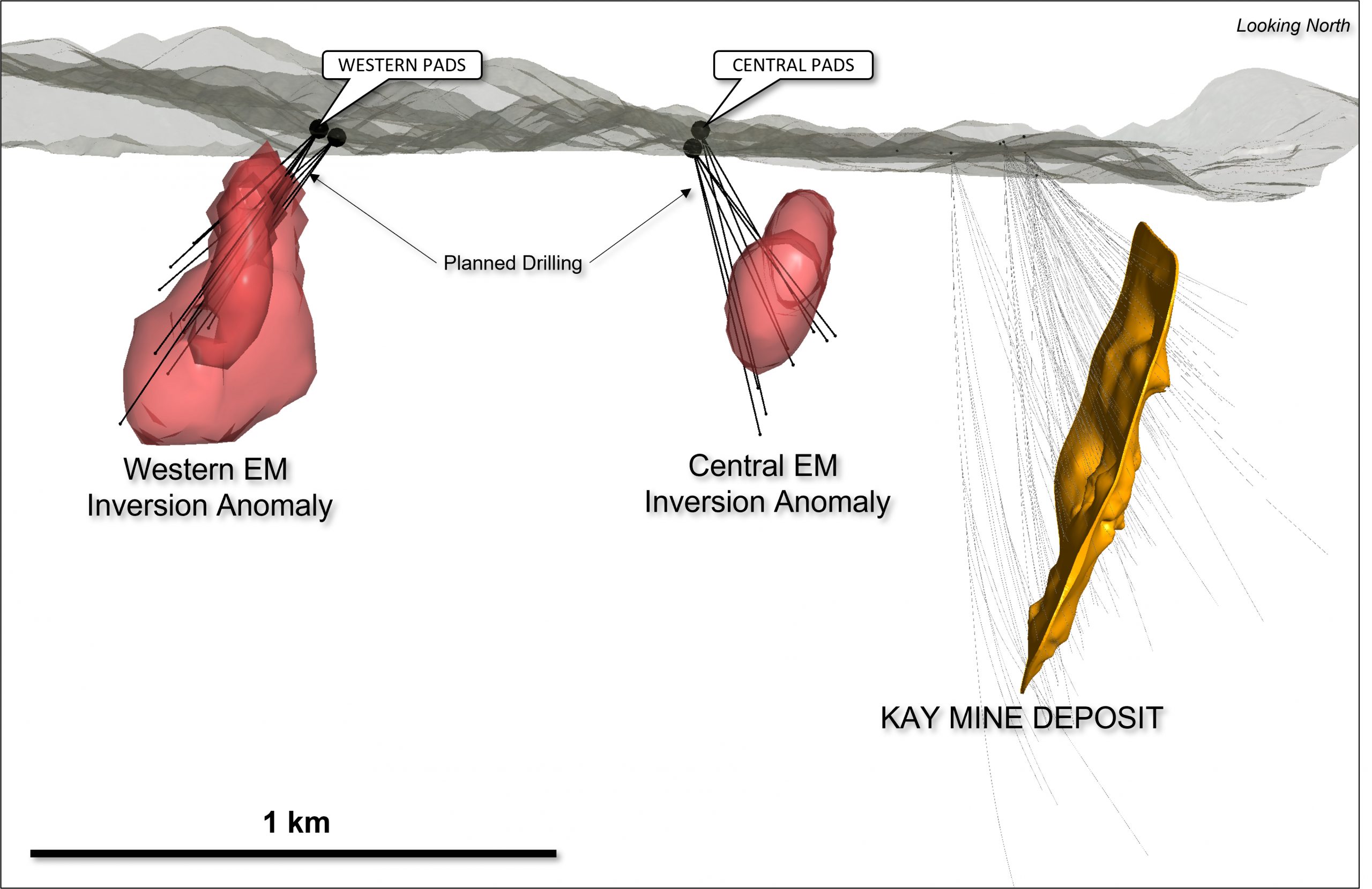
The above references an opinion and is for information purposes only. It is not intended to be investment advice. Seek a licensed professional for investment advice. The author is not an insider or shareholder of any of the companies mentioned above.
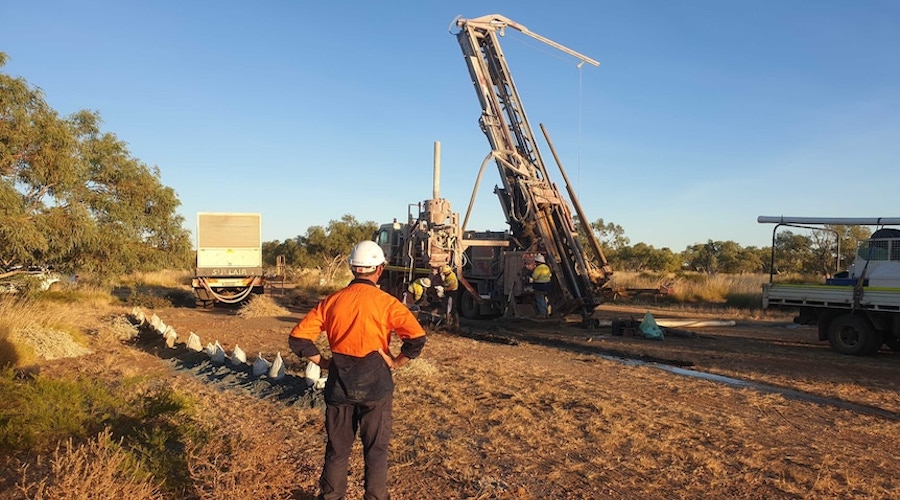
The above references an opinion and is for information purposes only. It is not intended to be investment advice. Seek a licensed professional for investment advice. The author is not an insider or shareholder of any of the companies mentioned above.
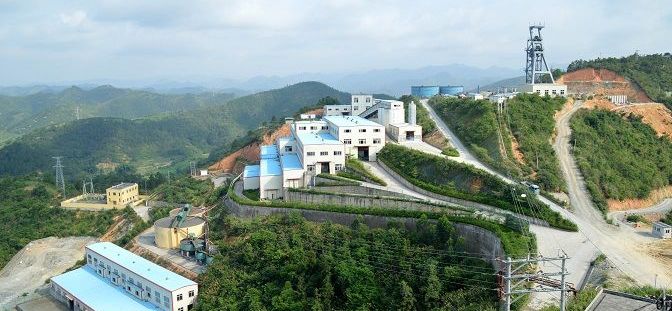
Silvercorp Metals (TSX:SVM) has reported new assay results from the ongoing drill program at its LMW mine in the Ying Mining District in China. The company has drilled a total of 56,803 metres in 416 diamond drill holes. The program included 372 underground holes and 44 surface holes at the LMW mine. Two surface rigs and eight underground rigs and drilling at the LMW mine at present.
Highlights from the results are as follows:
1) New Discovery of High-Grade Silver-Lead-Zinc Veins at the West of LMW Outside Current Mining Areas
Drilling at the west side of LMW, where there has been no previous mining activity, intersected new high-grade silver-lead-zinc veins, including W1, W2, W2W, W6, W6E, W6W, and W18. Among these, veins W2, W1 and W18 may have lengths of over 800 m along strike and 400 m down-dip from 1100 m to 700 m elevation. To pursue this new discovery, the Company has started to develop two new horizontal tunnels from surface at 1040 m and 988 m elevations, and a new branch off-ramp from 800 m to 700 m elevations to access these veins.
Highlights of these new discovery holes are as follows:
- Hole ZKX0818 intersected a 3.18 m interval (2.82 m true width) of vein W2 grading 2,238 grams per tonne (“g/t”) silver (“Ag”), 5.90% lead (“Pb”), 0.61% zinc (“Zn”), and 0.36% copper (“Cu”) at the 1,045 m elevation
- Hole ZKX0634 intersected a 4.03 m interval (3.43 m true width) of vein W6W grading 970 g/t Ag, 16.20% Pb, 0.60% Zn, and 0.29% Cu, at the 1,031 m elevatio
- Hole ZKX0636 intersected a 1.18 m interval (0.91 m true width) of vein W1 grading 2,511 g/t Ag, 3.45% Pb, 1.01% Zn, and 0.38% Cu, at the 963 m elevation; an
- Hole ZKX14214 intersected a 6.58 m interval (1.19 m true width) of vein W18 grading 646 g/t Ag, 3.12% Pb, 0.3% Zn, and 0.16% Cu, at the1039 m elevation.
2) Drilling of Low Angle Gold-Copper-Silver Veins Further Improved Continuity of Mineralization
Drilling of the low angle copper-gold-silver veins of LM21, LM22, LM26 and LM50 was designed to better understand this new type of mineralization which is strongly altered by silicification, with less obvious contact with host rocks of Archean granitic gneisses. The lower angle copper-gold structures were also offset slightly by sub-vertical north-west and north-east trending silver-lead veins which have been the focus of mining production at LMW. With the drilling program designed to expand gold-copper structures, and with better understanding, the Company is learning how to mine these low angle gold-copper bodies.
Highlights of the intercepts from the low angle gold veins at the LMW mine:
- Hole ZKX03X021 intersected a 7.03 m interval (5.39 m true width) of vein LM26 grading 0.17 g/t gold (“Au”), 2,896 g/t Ag, and 2.58% Cu, at the 602 m elevation
- Hole ZKX11238 intersected a 9.54 m interval (3.37 m true width) of vein LM26 grading 0.98 g/t Au, 1,323 g/t Ag, 7.45% Pb, 0.55% Zn, and 0.32% Cu, at the 670 m elevation
- Hole ZKX11223 intersected a 6.57 m interval (3.2 m true width) of vein LM26 grading 1.23 g/t Au, 1,780 g/t Ag, 16.71% Pb, 0.69% Zn, and 0.23% Cu, at the 670 m elevation
- Hole ZKX07X031 intersected an 8.10 m interval (4.06 m true width) of vein LM50 grading 1.26 g/t Au, 674 g/t Ag, 1.28% Pb, 0.21% Zn, and 0.09% Cu at the 799 m elevation
- Hole ZKX07X021 intersected an 1.01 m interval (0.65 m true width) of vein LM50 grading 19.2 g/t Au and 15 g/t Ag at the 791 m elevation
- Hole ZKX05X079 intersected a 4.21 m interval (3.42 m true width) of vein LM50 grading 6.36 g/t Au and 11 g/t Ag at the 794 m elevation
- Hole ZKX05X098 intersected a 0.77 m interval (0.70 m true width) of vein LM22 grading 29.00 g/t Au, 10 g/t Ag, and 1.21% Cu at the 850 m elevation; an
- Hole ZKX05X096 intersected a 0.51 m interval (0.38 m true width) of vein LM22 grading 32.50 g/t Au, 2 g/t Ag, and 0.05% Cu, at the 848 m elevation.
3) Drilling Above or Beneath Previously Mined Stopes
Most holes in this period targeted blocks of known silver-lead-zinc veins in the production areas that were previously missed due to limited drilling or tunneling, changes in the strikes and dips, and/or pinch-swelling of the pay-zones in the veins. The high-grade intercepts are mainly associated with the southwest-striking LM7 series, LM12 series and LM17 series of veins, and the northwest-striking LM8 series, LM19 and LM20E.
Highlights of the high-grade silver-lead-zinc mineralization in the production areas:
- Hole ZKX07X003 intersected a 13.31 m interval (12.80 m true width) of vein LM7 grading 365 g/t Ag, 0.71% Pb, 0.13% Zn, 0.06 g/t Au, and 0.33% Cu at the 778 m elevation
- Hole ZKX0733 intersected a 1.46 m interval (1.37 m true width) of vein LM12E grading 4,549 g/t Ag, 1.19% Pb, 0.24% zinc (“Zn”), 0.49 g/t Au, and 0.10% copper (“Cu”) at the 645 m elevation
- Hole ZKX0058 intersected a 3.40 m interval (3.39 m true width) of vein LM7W grading 1,181 g/t Ag, 2.49% Pb, 0.24% Zn, 0.12 g/t Au, and 0.21% Cu at the 771 m elevation
- Hole ZKX05X075 intersected a 4.16 m interval (3.72 m true width) of vein LM7 grading 360 g/t Ag, 1.75% Pb, 0.59% Zn, 9.15 g/t Au, and 0.24% Cu at the 764 m elevation; an
- Hole ZKX09X001 intersected a 5.78 m interval (5.53 m true width) of vein LM7W grading 531 g/t Ag, 1.06% Pb, 0.37% Zn, 0.02 g/t Au, and 0.19% Cu at the 575 m elevation.
4) Drilling Intersected High-Grade Silver-Lead-Zinc Veins and a New Gold Structure at the East Side of the Resource Area
At the east side of the resource area, drilling intersected high-grade silver-lead-zinc vein LM41E and the parallel silver-lead-zinc veins LM41E1 and LM41E1Wa with true widths up to 2.40 m.
While drilling these LM41 series high grade silver-lead-zinc veins, a new gently dipping gold vein has been discovered with three drill holes, ZKX10944, ZKX10735, and ZKX10739 intercepting high grade gold, which are approximately 450 m east of those intercepts on the LM50 gold structure.
Highlights of the high-grade silver-lead-zinc mineralization at the northwest and east sides of the LMW mine:
- Hole ZKX1166 intersected a 1.36 m interval (1.23 m true width) of vein LM41E grading 2,415 g/t Ag, 2.61% Pb, 0.40% Zn, 0.05 g/t Au, and 0.90% Cu at the 778 m elevation; an
- Hole ZKX1143 intersected a 3.11 m interval (2.40 m true width) of vein LM41E grading 993 g/t Ag, 1.35% Pb, 0.54% Zn, 0.05 g/t Au, and 0.12% Cu at the 754 m elevation
- Hole ZKX09X033 intersected a 1.3 m interval (0.88 m true width) of vein LM41EWa grading 1976 g/t Ag, 1.74% Pb, 0.45% Zn, 0.79 g/t Au, and 0.23% Cu at the 706 m elevation
- Hole ZKX10944 intersected a 2.13 m interval (2.0 m true width) of a new gently dipping gold vein grading 478 g/t Ag, 2.14% Pb, 0.9% Zn, and 5.97 g/t Au, at the 763 m elevatio
- Hole ZKX10735 intersected a 1.18 m interval (1.18 m true width) of the new gently dipping gold vein grading 5.37 g/t Au at the 760 m elevatio
- Hole ZKX10739 intersected a 0.95 m interval (0.95 m true width) of the new gently dipping gold vein grading 5.65 g/t Au at the 754 m elevation
Table 1: Selected intercepts from the 2022 drilling program at the LMW mine
| Hole ID | From
(m) |
To
(m) |
Elevation
(m) |
Interval
(m) |
True Width
(m) |
Ag
(g/t) |
Pb
(%) |
Zn
(%) |
Au
(g/t) |
Cu
(%) |
Vein | Ore Type |
| High-Grade Silver-Lead-Zinc Veins at the West of LMW Outside Current Mining Areas | ||||||||||||
| ZKX0432 | 185.86 | 186.97 | 787 | 1.11 | 0.75 | 323 | 0.75 | 0.86 | 0.03 | 0.06 | W1 | Ag-Pb-Zn |
| ZKX0438 | 144.83 | 145.86 | 862 | 1.03 | 0.96 | 315 | 1.83 | 0.22 | 0.05 | 0.03 | W1 | Ag-Pb-Zn |
| ZKX0460 | 161.61 | 163.12 | 849 | 1.51 | 1.12 | 217 | 6.49 | 0.19 | 0.03 | 0.03 | W1 | Ag-Pb-Zn |
| ZKX0463 | 171.36 | 173.68 | 817 | 2.32 | 1.91 | 510 | 4.26 | 2.25 | 0.07 | 0.12 | W1 | Ag-Pb-Zn |
| ZKX0636 | 146.74 | 147.92 | 963 | 1.18 | 0.91 | 2,511 | 3.45 | 1.01 | 0.05 | 0.38 | W1 | Ag-Pb-Zn |
| ZKX0815 | 142.93 | 143.64 | 985 | 0.71 | 0.49 | 73 | 12.84 | 0.07 | 0.05 | 0.02 | W1 | Ag-Pb-Zn |
| ZKX0819 | 18.49 | 21.56 | 1,082 | 3.07 | 2.17 | 178 | 1.00 | 0.04 | 0.01 | 0.06 | W1 | Ag-Pb-Zn |
| ZKX0820 | 21.73 | 24.45 | 1,077 | 2.72 | 1.64 | 706 | 1.02 | 0.12 | 0.05 | 0.26 | W1 | Ag-Pb-Zn |
| ZKX1005 | 53.60 | 54.58 | 897 | 0.98 | 0.95 | 381 | 5.30 | 0.13 | 0.05 | 0.04 | W1 | Ag-Pb-Zn |
| ZKX14213 | 120.64 | 121.77 | 911 | 1.13 | 0.70 | 396 | 0.39 | 0.06 | 0.05 | 0.03 | W1 | Ag-Pb-Zn |
| ZKX0815 | 137.63 | 138.40 | 988 | 0.77 | 0.53 | 1,891 | 1.78 | 0.84 | 0.05 | 0.31 | W18 | Ag-Pb-Zn |
| ZKX14214 | 139.43 | 146.01 | 1,039 | 6.58 | 1.19 | 646 | 3.12 | 0.30 | 0.05 | 0.16 | W18 | Ag-Pb-Zn |
| ZKX0819 | 61.43 | 61.93 | 1,049 | 0.50 | 0.35 | 1,212 | 1.27 | 0.49 | 0.01 | 0.49 | W18E | Ag-Pb-Zn |
| ZKX0817 | 4.20 | 5.12 | 1,095 | 0.92 | 0.79 | 300 | 0.50 | 0.03 | 0.05 | 0.08 | W1E | Ag-Pb-Zn |
| ZKX0818 | 69.16 | 70.07 | 1,055 | 0.91 | 0.80 | 539 | 0.33 | 0.18 | 0.05 | 0.08 | W1E | Ag-Pb-Zn |
| ZKX0819 | 84.20 | 85.62 | 1,031 | 1.42 | 1.02 | 198 | 0.32 | 0.06 | 0.01 | 0.04 | W1E | Ag-Pb-Zn |
| ZKX0650 | 105.92 | 106.52 | 993 | 0.60 | 0.32 | 1 | 0.01 | 0.01 | 7.13 | 0.09 | W1E2 | Ag-Pb-Zn |
| ZKX0450 | 69.19 | 71.38 | 1,031 | 2.19 | 1.36 | 1,216 | 6.77 | 0.61 | 0.05 | 0.18 | W2 | Ag-Pb-Zn |
| ZKX0465 | 58.47 | 60.69 | 1,041 | 2.22 | 1.26 | 831 | 2.70 | 0.26 | 0.02 | 0.29 | W2 | Ag-Pb-Zn |
| ZKX0636 | 103.95 | 104.67 | 993 | 0.72 | 0.56 | 667 | 0.56 | 0.27 | 2.61 | 0.38 | W2 | Ag-Pb-Zn |
| ZKX0650 | 64.26 | 65.46 | 1,022 | 1.20 | 0.64 | 256 | 0.47 | 0.16 | 0.01 | 0.03 | W2 | Ag-Pb-Zn |
| ZKX0651 | 69.77 | 70.70 | 1,052 | 0.93 | 0.54 | 1,537 | 0.60 | 0.15 | 0.03 | 0.34 | W2 | Ag-Pb-Zn |
| ZKX0818 | 84.14 | 87.32 | 1,045 | 3.18 | 2.82 | 2,238 | 5.90 | 0.61 | 0.07 | 0.36 | W2 | Ag-Pb-Zn |
| ZKX0819 | 118.25 | 119.25 | 1,005 | 1.00 | 0.72 | 1,622 | 1.96 | 0.20 | 0.01 | 0.04 | W2 | Ag-Pb-Zn |
| ZKX0039 | 126.57 | 127.39 | 879 | 0.82 | 0.77 | 80 | 4.30 | 2.75 | 0.03 | 0.01 | W6 | Ag-Pb-Zn |
| ZKX0046 | 132.12 | 133.44 | 817 | 1.32 | 0.75 | 73 | 6.62 | 0.39 | 0.05 | 0.01 | W6 | Ag-Pb-Zn |
| ZKX0431 | 198.49 | 199.92 | 825 | 1.43 | 1.18 | 471 | 1.04 | 0.36 | 0.05 | 0.19 | W6 | Ag-Pb-Zn |
| ZKX0454 | 175.59 | 176.32 | 861 | 0.73 | 0.66 | 367 | 5.75 | 1.21 | 0.21 | 0.04 | W6 | Ag-Pb-Zn |
| ZKX14005 | 141.48 | 142.40 | 924 | 0.92 | 0.87 | 307 | 2.37 | 0.32 | 0.05 | 0.10 | W6 | Ag-Pb-Zn |
| ZKX14404 | 104.79 | 106.35 | 893 | 1.56 | 1.56 | 150 | 2.34 | 1.22 | 0.05 | 0.03 | W6 | Ag-Pb-Zn |
| ZKX0454 | 186.46 | 187.85 | 856 | 1.39 | 1.25 | 398 | 0.81 | 0.16 | 0.05 | 0.03 | W6E | Ag-Pb-Zn |
| ZKX0454 | 243.14 | 243.74 | 832 | 0.60 | 0.54 | 52 | 10.14 | 0.39 | 0.05 | 0.00 | W6E2 | Ag-Pb-Zn |
| ZKX0438 | 100.57 | 101.58 | 884 | 1.01 | 0.94 | 43 | 1.12 | 0.22 | 1.74 | 0.02 | W6W | Ag-Pb-Zn |
| ZKX0439 | 98.03 | 98.78 | 910 | 0.75 | 0.74 | 483 | 3.22 | 0.95 | 0.05 | 0.12 | W6W | Ag-Pb-Zn |
| ZKX0634 | 56.04 | 60.07 | 1,031 | 4.03 | 3.43 | 970 | 16.20 | 0.60 | 0.10 | 0.29 | W6W | Ag-Pb-Zn |
| ZKX13630 | 137.23 | 137.74 | 1,014 | 0.51 | 0.45 | 1,077 | 4.84 | 0.48 | 0.02 | 0.54 | W6W | Ag-Pb-Zn |
| Low Angle Gold-Copper-Silver Veins | ||||||||||||
| ZKX0082 | 292.17 | 293.61 | 878 | 1.44 | 0.76 | 73 | 0.54 | 0.52 | 13.06 | 1.70 | LM22 | Au-Ag-Cu |
| ZKX05X096 | 77.81 | 78.32 | 848 | 0.51 | 0.38 | 2 | 0.01 | 0.02 | 32.50 | 0.05 | LM22 | Au-Ag-Cu |
| ZKX05X097 | 84.82 | 85.77 | 855 | 0.95 | 0.72 | 37 | 0.00 | 0.03 | 1.63 | 7.39 | LM22 | Au-Ag-Cu |
| ZKX05X098 | 76.67 | 77.44 | 850 | 0.77 | 0.70 | 10 | 0.00 | 0.01 | 29.00 | 1.21 | LM22 | Au-Ag-Cu |
| ZKX05X100 | 76.16 | 77.14 | 845 | 0.98 | 0.70 | 1 | 0.00 | 0.01 | 3.40 | 0.14 | LM22 | Au-Ag-Cu |
| ZKX0+A3:U198390 | 60.86 | 61.63 | 640 | 0.77 | 0.58 | 37 | 0.01 | 0.03 | 0.92 | 5.43 | LM26 | Au-Ag-Cu |
| ZKX0188 | 16.94 | 17.97 | 737 | 1.03 | 0.97 | 4 | 0.00 | 0.01 | 2.88 | 0.00 | LM26 | Au-Ag-Cu |
| ZKX0191 | 86.24 | 89.04 | 662 | 2.80 | 1.64 | 37 | 0.07 | 0.01 | 3.21 | 0.29 | LM26 | Au-Ag-Cu |
| ZKX03X021 | 98.88 | 105.91 | 602 | 7.03 | 5.39 | 2,896 | 0.15 | 0.12 | 0.17 | 2.58 | LM26 | Au-Ag-Cu |
| ZKX11046 | 43.05 | 43.92 | 668 | 0.87 | 0.73 | 214 | 1.34 | 0.11 | 0.03 | 0.02 | LM26 | Ag-Pb-Zn |
| ZKX11223 | 44.84 | 51.41 | 670 | 6.57 | 3.20 | 1780 | 16.71 | 0.69 | 1.23 | 0.23 | LM26 | Au-Cu-Ag |
| ZKX11238 | 44.05 | 53.59 | 670 | 9.54 | 3.37 | 1,323 | 7.45 | 0.55 | 0.98 | 0.32 | LM26 | Au-Ag-Cu |
| ZKX0251 | 20.25 | 22.01 | 784 | 1.76 | 1.20 | 140 | 3.19 | 0.29 | 1.38 | 0.12 | LM50 | Au-Ag |
| ZKX0341 | 165.20 | 166.10 | 737 | 0.90 | 0.60 | 15 | 0.01 | 0.02 | 5.59 | 1.74 | LM50 | Au-Ag |
| ZKX03X054 | 168.91 | 169.90 | 818 | 0.99 | 0.84 | 4 | 0.01 | 0.02 | 2.53 | 0.01 | LM50 | Au-Ag |
| ZKX03X055 | 164.35 | 165.47 | 803 | 1.12 | 0.75 | 60 | 1.42 | 0.06 | 2.04 | 0.01 | LM50 | Au-Ag |
| ZKX0571 | 53.42 | 55.91 | 808 | 2.49 | 2.05 | 15 | 0.03 | 0.04 | 3.63 | 0.01 | LM50 | Ag-Pb-Zn |
| ZKX05X004 | 61.26 | 62.28 | 807 | 1.02 | 0.95 | 5 | 0.02 | 0.03 | 3.11 | 0.00 | LM50 | Ag-Pb-Zn |
| ZKX05X007 | 68.87 | 70.20 | 791 | 1.33 | 1.17 | 1 | 0.20 | 0.03 | 2.44 | 0.00 | LM50 | Ag-Pb-Zn |
| ZKX05X009 | 86.06 | 87.12 | 786 | 1.06 | 0.77 | 11 | 0.16 | 0.17 | 7.15 | 0.00 | LM50 | Ag-Pb-Zn |
| ZKX05X010 | 98.40 | 99.68 | 781 | 1.28 | 0.78 | 10 | 0.40 | 0.22 | 5.63 | 0.01 | LM50 | Ag-Pb-Zn |
| ZKX05X017 | 81.66 | 83.20 | 786 | 1.54 | 1.12 | 10 | 0.12 | 0.06 | 7.78 | 0.01 | LM50 | Ag-Pb-Zn |
| ZKX05X078 | 14.29 | 15.22 | 789 | 0.93 | 0.61 | 12 | 0.34 | 0.08 | 3.90 | 0.01 | LM50 | Au-Ag |
| ZKX05X079 | 6.45 | 10.66 | 794 | 4.21 | 3.42 | 11 | 0.38 | 0.13 | 6.36 | 0.00 | LM50 | Au-Ag |
| ZKX0727 | 73.32 | 74.30 | 804 | 0.98 | 0.74 | 26 | 0.13 | 0.17 | 6.71 | 0.00 | LM50 | Ag-Pb-Zn |
| ZKX0780 | 100.97 | 102.20 | 797 | 1.23 | 0.52 | 20 | 0.31 | 0.48 | 4.21 | 0.01 | LM50 | Ag-Pb-Zn |
| ZKX07X002 | 26.14 | 28.50 | 788 | 2.36 | 2.28 | 24 | 0.78 | 0.12 | 5.51 | 0.03 | LM50 | Au-Ag |
| ZKX07X003 | 22.58 | 23.64 | 786 | 1.06 | 1.00 | 140 | 3.40 | 0.30 | 5.65 | 0.06 | LM50 | Au-Ag |
| ZKX07X021 | 17.26 | 18.27 | 791 | 1.01 | 0.65 | 15 | 0.16 | 0.32 | 19.20 | 0.00 | LM50 | Au-Ag |
| ZKX07X025 | 18.44 | 20.06 | 792 | 1.62 | 1.16 | 23 | 0.10 | 0.13 | 4.04 | 0.00 | LM50 | Au-Ag |
| ZKX07X031 | 2.93 | 11.03 | 799 | 8.10 | 4.06 | 674 | 1.28 | 0.21 | 1.26 | 0.09 | LM50 | Au-Ag |
| ZKX07X032 | 6.10 | 11.64 | 796 | 5.54 | 3.78 | 224 | 2.28 | 0.33 | 1.54 | 0.10 | LM50 | Au-Ag |
| ZKX07X033 | 19.74 | 20.78 | 789 | 1.04 | 0.28 | 3 | 0.17 | 0.15 | 11.05 | 0.01 | LM50 | Au-Ag |
| ZKX07X034 | 12.30 | 13.54 | 791 | 1.24 | 0.80 | 9 | 0.08 | 0.03 | 2.65 | 0.01 | LM50 | Au-Ag |
| ZKX07X082 | 83.96 | 84.77 | 793 | 0.81 | 0.60 | 13 | 0.37 | 0.24 | 6.24 | 0.01 | LM50 | Ag-Pb-Zn |
| ZKX0996 | 4.16 | 12.75 | 804 | 8.59 | 2.43 | 412 | 2.33 | 0.19 | 0.42 | 0.24 | LM50 | Au-Ag |
| ZKX0999 | 7.72 | 18.38 | 803 | 10.66 | 3.78 | 492 | 1.06 | 0.20 | 2.88 | 0.16 | LM50 | Au-Ag |
| ZKX09X018 | 8.92 | 10.23 | 792 | 1.31 | 1.11 | 3 | 0.10 | 0.01 | 4.43 | 0.01 | LM50 | Au-Ag |
| ZKX1172 | 3.11 | 6.14 | 800 | 3.03 | 2.26 | 155 | 2.59 | 0.07 | 3.02 | 0.08 | LM50 | Au-Ag |
| ZKX1173 | 0.49 | 1.61 | 801 | 1.12 | 0.78 | 105 | 2.38 | 0.12 | 1.38 | 0.08 | LM50 | Au-Ag |
| ZKX1175 | 2.28 | 5.78 | 800 | 3.50 | 1.30 | 158 | 2.90 | 0.12 | 0.18 | 0.07 | LM50 | Au-Ag |
| Veins Above or Beneath Previously Mined Stopes | ||||||||||||
| ZKX05X097 | 111.01 | 112.28 | 838 | 1.27 | 0.96 | 276 | 0.63 | 0.17 | 0.06 | 0.02 | LM10W1 | Ag-Pb-Zn |
| ZKX05X119 | 59.35 | 59.80 | 700 | 0.45 | 0.38 | 2,894 | 3.65 | 2.36 | 0.30 | 0.49 | LM11E | Ag-Pb-Zn |
| ZKX0087 | 72.59 | 74.87 | 982 | 2.28 | 1.85 | 177 | 3.58 | 1.44 | 0.02 | 0.08 | LM12 | Ag-Pb-Zn |
| ZKX0343 | 27.05 | 27.62 | 578 | 0.57 | 0.53 | 645 | 4.95 | 0.45 | 0.02 | 0.05 | LM12 | Ag-Pb-Zn |
| ZKX11046 | 64.36 | 67.97 | 654 | 3.61 | 1.24 | 2,394 | 5.11 | 0.84 | 0.12 | 0.19 | LM12_1 | Ag-Pb-Zn |
| ZKX11442 | 128.77 | 129.59 | 514 | 0.82 | 0.70 | 366 | 9.08 | 0.06 | 0.05 | 0.02 | LM12_1 | Ag-Pb-Zn |
| ZKX11225 | 16.50 | 17.02 | 690 | 0.52 | 0.38 | 657 | 3.49 | 0.06 | 0.17 | 0.08 | LM12_2 | Ag-Pb-Zn |
| ZKX0198 | 122.51 | 124.07 | 896 | 1.56 | 1.38 | 947 | 1.08 | 0.62 | 0.05 | 0.39 | LM12_2a | Ag-Pb-Zn |
| ZKX11223 | 23.89 | 35.12 | 684 | 11.23 | 2.6 | 302 | 2.66 | 0.27 | 0.06 | 0.06 | LM12_2a | Ag-Pb-Zn |
| ZKX0199 | 100.62 | 103.07 | 922 | 2.45 | 1.66 | 212 | 3.04 | 0.09 | 0.07 | 0.01 | LM12_3 | Ag-Pb-Zn |
| ZKX01X016 | 93.15 | 94.07 | 906 | 0.92 | 0.58 | 305 | 2.10 | 0.10 | 0.00 | 0.19 | LM12_3 | Ag-Pb-Zn |
| ZKX11026 | 68.98 | 69.65 | 659 | 0.67 | 0.50 | 331 | 9.91 | 0.02 | 0.16 | 0.11 | LM12a | Ag-Pb-Zn |
| ZKX0342 | 59.11 | 59.76 | 580 | 0.65 | 0.57 | 343 | 2.12 | 0.11 | 0.02 | 0.02 | LM12E | Ag-Pb-Zn |
| ZKX0733 | 142.98 | 144.44 | 645 | 1.46 | 1.37 | 4,549 | 1.19 | 0.24 | 0.49 | 0.10 | LM12E | Ag-Pb-Zn |
| ZKX09X003 | 30.13 | 31.03 | 577 | 0.90 | 0.86 | 231 | 10.27 | 0.78 | 0.02 | 0.53 | LM12E | Ag-Pb-Zn |
| ZKX11024 | 97.67 | 98.72 | 631 | 1.05 | 0.74 | 294 | 0.41 | 0.18 | 0.03 | 0.01 | LM12E | Ag-Pb-Zn |
| ZKX11026 | 89.38 | 90.79 | 648 | 1.41 | 1.05 | 1,270 | 2.06 | 0.44 | 0.18 | 0.06 | LM12E | Ag-Pb-Zn |
| ZKX0198 | 60.64 | 63.57 | 912 | 2.93 | 2.59 | 909 | 0.33 | 0.39 | 0.05 | 0.50 | LM13 | Ag-Pb-Zn |
| ZKX11602 | 38.65 | 40.41 | 585 | 1.76 | 1.72 | 54 | 6.19 | 0.05 | 0.02 | 0.02 | LM13 | Ag-Pb-Zn |
| ZKX0097 | 122.72 | 123.65 | 927 | 0.93 | 0.76 | 143 | 2.21 | 0.19 | 0.02 | 0.16 | LM13W | Ag-Pb-Zn |
| ZKX03X022 | 15.31 | 16.10 | 688 | 0.79 | 0.76 | 176 | 5.93 | 0.03 | 0.02 | 0.01 | LM13W | Ag-Pb-Zn |
| ZKX03X058 | 52.84 | 53.82 | 942 | 0.98 | 0.82 | 315 | 2.21 | 0.63 | 0.00 | 0.07 | LM13W | Ag-Pb-Zn |
| ZKX03X059 | 48.58 | 49.19 | 947 | 0.61 | 0.41 | 4,558 | 1.54 | 0.26 | 0.06 | 0.49 | LM13W | Ag-Pb-Zn |
| ZKX0637 | 87.27 | 88.15 | 926 | 0.88 | 0.77 | 181 | 0.97 | 0.05 | 0.02 | 0.18 | LM13W | Ag-Pb-Zn |
| ZKX11436 | 112.66 | 113.67 | 541 | 1.01 | 0.94 | 1,421 | 1.90 | 0.10 | 0.05 | 0.03 | LM14 | Ag-Pb-Zn |
| ZKX11436 | 127.73 | 128.49 | 533 | 0.76 | 0.70 | 238 | 1.53 | 0.07 | 0.01 | 0.02 | LM14_1 | Ag-Pb-Zn |
| ZKX3214 | 49.27 | 50.35 | 714 | 1.08 | 0.54 | 991 | 9.38 | 0.70 | 0.04 | 0.72 | LM16_1 | Ag-Pb-Zn |
| ZKX0755 | 232.70 | 233.97 | 999 | 1.27 | 1.19 | 126 | 5.01 | 0.20 | 0.03 | 0.02 | LM17 | Ag-Pb-Zn |
| ZKX0773 | 129.58 | 132.05 | 682 | 2.47 | 1.88 | 382 | 0.69 | 0.48 | 0.05 | 0.03 | LM17 | Ag-Pb-Zn |
| ZKX07X054 | 92.00 | 93.03 | 748 | 1.03 | 1.00 | 163 | 11.26 | 0.17 | 0.05 | 0.02 | LM17 | Ag-Pb-Zn |
| ZKX07X058 | 131.16 | 132.62 | 682 | 1.46 | 1.16 | 269 | 0.70 | 0.19 | 0.02 | 0.02 | LM17 | Ag-Pb-Zn |
| ZKX1166 | 126.39 | 127.37 | 745 | 0.98 | 0.88 | 421 | 1.39 | 0.44 | 0.05 | 0.08 | LM17 | Ag-Pb-Zn |
| ZKX1169 | 330.70 | 334.88 | 983 | 4.18 | 0.94 | 284 | 10.42 | 0.76 | 0.06 | 0.06 | LM17 | Ag-Pb-Zn |
| ZKX1343 | 143.16 | 148.20 | 778 | 5.04 | 2.78 | 225 | 1.77 | 0.35 | 0.05 | 0.03 | LM17 | Ag-Pb-Zn |
| ZKX05X113 | 73.34 | 74.68 | 773 | 1.34 | 1.32 | 1,823 | 6.62 | 6.64 | 0.05 | 0.40 | LM17a | Ag-Pb-Zn |
| ZKX07X058 | 122.27 | 125.76 | 691 | 3.49 | 2.78 | 323 | 1.96 | 0.28 | 0.02 | 0.12 | LM17a | Ag-Pb-Zn |
| ZKX09X007 | 97.42 | 99.21 | 762 | 1.79 | 1.75 | 573 | 0.29 | 0.08 | 0.05 | 0.28 | LM17a | Ag-Pb-Zn |
| ZKX1343 | 129.52 | 130.48 | 780 | 0.96 | 0.80 | 314 | 6.53 | 0.13 | 0.05 | 0.05 | LM17a | Ag-Pb-Zn |
| ZKX07X058 | 97.56 | 99.63 | 713 | 2.07 | 1.65 | 90 | 7.38 | 0.17 | 0.02 | 0.08 | LM17W | Ag-Pb-Zn |
| ZKX0978 | 195.61 | 196.31 | 1,067 | 0.70 | 0.65 | 852 | 0.17 | 0.37 | 0.05 | 0.35 | LM17W | Ag-Pb-Zn |
| ZKX10948 | 191.52 | 192.06 | 762 | 0.54 | 0.43 | 278 | 2.77 | 0.16 | 0.08 | 0.03 | LM17W | Ag-Pb-Zn |
| ZKX1187 | 109.39 | 110.30 | 773 | 0.91 | 0.49 | 309 | 0.51 | 0.08 | 0.02 | 0.18 | LM17W | Ag-Pb-Zn |
| ZKX3214 | 138.14 | 139.46 | 682 | 1.32 | 1.28 | 43 | 4.45 | 0.35 | 0.02 | 0.01 | LM17W | Ag-Pb-Zn |
| ZKX0755 | 152.87 | 154.27 | 1,034 | 1.40 | 1.31 | 223 | 0.06 | 0.08 | 0.03 | 0.06 | LM17W2 | Ag-Pb-Zn |
| ZKX07X053 | 12.30 | 13.59 | 802 | 1.29 | 1.23 | 1,050 | 1.25 | 0.60 | 0.05 | 0.15 | LM17W2 | Ag-Pb-Zn |
| ZKX0954 | 152.84 | 153.44 | 1,062 | 0.60 | 0.60 | 237 | 0.36 | 0.16 | 0.05 | 0.09 | LM17W2 | Ag-Pb-Zn |
| ZKX0955 | 199.62 | 200.15 | 925 | 0.53 | 0.41 | 2,449 | 1.10 | 0.48 | 0.02 | 0.21 | LM17W2 | Ag-Pb-Zn |
| ZKX09X008 | 156.15 | 157.72 | 1,044 | 1.57 | 1.14 | 293 | 0.13 | 0.07 | 0.05 | 0.02 | LM17W2 | Ag-Pb-Zn |
| ZKX09X053 | 165.35 | 166.04 | 1,090 | 0.69 | 0.67 | 296 | 1.65 | 0.33 | 0.05 | 0.19 | LM17W2 | Ag-Pb-Zn |
| ZKX1167 | 4.83 | 5.88 | 802 | 1.05 | 1.05 | 531 | 0.62 | 0.42 | 0.05 | 0.03 | LM17W2 | Ag-Pb-Zn |
| ZKX0058 | 38.87 | 39.49 | 778 | 0.62 | 0.62 | 235 | 0.86 | 0.12 | 0.02 | 0.05 | LM19 | Ag-Pb-Zn |
| ZKX0059 | 46.56 | 47.65 | 787 | 1.09 | 0.99 | 227 | 0.16 | 0.02 | 0.05 | 0.01 | LM19 | Ag-Pb-Zn |
| ZKX0090 | 69.68 | 70.28 | 941 | 0.60 | 0.48 | 594 | 0.81 | 0.03 | 0.03 | 0.10 | LM19 | Ag-Pb-Zn |
| ZKX0251 | 4.40 | 7.20 | 797 | 2.80 | 1.91 | 180 | 0.65 | 0.08 | 0.05 | 0.03 | LM19 | Ag-Pb-Zn |
| ZKX0258 | 97.88 | 99.34 | 929 | 1.46 | 0.89 | 191 | 3.89 | 0.31 | 0.02 | 0.06 | LM19 | Ag-Pb-Zn |
| ZKX03X058 | 16.42 | 17.25 | 968 | 0.83 | 0.65 | 173 | 1.73 | 0.17 | 0.01 | 0.01 | LM19 | Ag-Pb-Zn |
| ZKX10213 | 71.19 | 72.62 | 956 | 1.43 | 1.21 | 456 | 0.08 | 0.05 | 0.05 | 0.05 | LM19 | Ag-Pb-Zn |
| ZKX0231 | 46.09 | 46.79 | 940 | 0.70 | 0.64 | 379 | 1.30 | 0.03 | 0.05 | 0.10 | LM19a | Ag-Pb-Zn |
| ZKX00X003 | 18.00 | 21.13 | 925 | 3.13 | 3.02 | 494 | 3.57 | 0.22 | 0.04 | 0.19 | LM19E | Ag-Pb-Zn |
| ZKX0343 | 6.51 | 7.02 | 593 | 0.51 | 1.10 | 148 | 6.52 | 0.33 | 0.02 | 0.04 | LM19E | Ag-Pb-Zn |
| ZKX0190 | 29.43 | 29.97 | 686 | 0.54 | 0.53 | 369 | 11.19 | 0.14 | 0.07 | 0.09 | LM19W | Ag-Pb-Zn |
| ZKX03X022 | 10.76 | 11.88 | 691 | 1.12 | 1.07 | 400 | 0.39 | 0.14 | 0.23 | 0.23 | LM19W | Ag-Pb-Zn |
| ZKX0552 | 24.22 | 25.35 | 743 | 1.13 | 1.12 | 223 | 0.93 | 0.16 | 0.02 | 0.06 | LM19Wa | Ag-Pb-Zn |
| ZKX05X119 | 34.25 | 34.79 | 721 | 0.54 | 0.45 | 2,153 | 2.50 | 0.26 | 0.05 | 0.75 | LM19Wa | Ag-Pb-Zn |
| ZKX11021 | 141.58 | 142.21 | 605 | 0.63 | 0.39 | 1,393 | 10.40 | 0.34 | 0.78 | 0.54 | LM20 | Ag-Pb-Zn |
| ZKX03X026 | 50.24 | 52.73 | 777 | 2.49 | 2.47 | 199 | 5.20 | 0.62 | 13.37 | 0.06 | LM20E | Ag-Pb-Zn |
| ZKX05X077 | 37.90 | 38.41 | 776 | 0.51 | 0.50 | 373 | 1.64 | 0.07 | 0.02 | 0.04 | LM20E | Ag-Pb-Zn |
| ZKX09X006 | 37.96 | 43.60 | 593 | 5.64 | 4.86 | 247 | 3.26 | 0.47 | 0.02 | 0.05 | LM20E | Ag-Pb-Zn |
| ZKX0258 | 197.39 | 200.72 | 884 | 3.33 | 1.98 | 3 | 0.01 | 0.01 | 4.15 | 0.01 | LM21 | Ag-Pb-Zn |
| ZKX05X080 | 43.10 | 44.31 | 761 | 1.21 | 1.04 | 3 | 0.01 | 0.01 | 8.53 | 0.01 | LM21 | Ag-Pb-Zn |
| ZKX09X056 | 61.23 | 62.44 | 728 | 1.21 | 1.15 | 376 | 0.40 | 0.06 | 0.02 | 0.12 | LM21 | Ag-Pb-Zn |
| ZKX11436 | 42.56 | 43.78 | 576 | 1.22 | 1.13 | 122 | 2.14 | 0.10 | 0.02 | 0.02 | LM32 | Ag-Pb-Zn |
| ZKX11409 | 64.36 | 65.01 | 580 | 0.65 | 0.56 | 300 | 4.08 | 0.08 | 0.05 | 0.08 | LM32E1 | Ag-Pb-Zn |
| ZKX11411 | 60.71 | 61.73 | 575 | 1.02 | 0.94 | 271 | 0.17 | 0.13 | 0.18 | 0.04 | LM32E1 | Ag-Pb-Zn |
| ZKX11612 | 74.12 | 74.62 | 565 | 0.50 | 0.39 | 225 | 4.66 | 0.26 | 0.01 | 0.04 | LM33 | Ag-Pb-Zn |
| ZKX0053 | 18.20 | 26.24 | 785 | 8.04 | 6.75 | 210 | 3.23 | 0.14 | 0.42 | 0.35 | LM7 | Ag-Pb-Zn |
| ZKX0055 | 35.28 | 36.46 | 775 | 1.18 | 1.12 | 181 | 1.18 | 0.08 | 0.05 | 0.03 | LM7 | Ag-Pb-Zn |
| ZKX0077 | 32.13 | 33.11 | 788 | 0.98 | 0.95 | 90 | 0.31 | 1.52 | 2.02 | 1.70 | LM7 | Ag-Pb-Zn |
| ZKX0089 | 146.99 | 148.45 | 938 | 1.46 | 1.06 | 145 | 3.04 | 0.01 | 0.02 | 0.01 | LM7 | Ag-Pb-Zn |
| ZKX0229 | 139.75 | 140.69 | 929 | 0.94 | 0.80 | 641 | 1.66 | 0.10 | 0.05 | 0.06 | LM7 | Ag-Pb-Zn |
| ZKX03X014 | 156.63 | 157.93 | 911 | 1.30 | 1.05 | 477 | 1.12 | 0.03 | 0.13 | 0.14 | LM7 | Ag-Pb-Zn |
| ZKX03X015 | 130.12 | 131.12 | 875 | 1.00 | 0.91 | 948 | 0.66 | 0.09 | 0.05 | 0.17 | LM7 | Ag-Pb-Zn |
| ZKX05X075 | 107.56 | 111.72 | 764 | 4.16 | 3.72 | 360 | 1.75 | 0.59 | 9.15 | 0.24 | LM7 | Ag-Pb-Zn |
| ZKX05X080 | 112.84 | 113.82 | 698 | 0.98 | 0.85 | 248 | 0.98 | 0.04 | 0.02 | 0.02 | LM7 | Ag-Pb-Zn |
| ZKX07X003 | 34.16 | 47.47 | 778 | 13.31 | 12.80 | 365 | 0.71 | 0.13 | 0.06 | 0.33 | LM7 | Ag-Pb-Zn |
| ZKX07X030 | 60.65 | 64.80 | 774 | 4.15 | 3.79 | 447 | 0.63 | 0.05 | 0.02 | 0.13 | LM7 | Ag-Pb-Zn |
| ZKX07X073 | 98.47 | 104.92 | 721 | 6.45 | 5.95 | 291 | 3.88 | 0.14 | 0.02 | 0.11 | LM7 | Ag-Pb-Zn |
| ZKX1180 | 94.00 | 96.56 | 678 | 2.56 | 2.25 | 169 | 1.29 | 0.08 | 0.02 | 0.57 | LM7 | Ag-Pb-Zn |
| ZKX03X016 | 111.91 | 113.12 | 869 | 1.21 | 1.13 | 434 | 0.37 | 0.04 | 0.05 | 0.06 | LM7a | Ag-Pb-Zn |
| ZKX0148 | 127.40 | 128.25 | 512 | 0.85 | 0.69 | 164 | 3.71 | 0.06 | 0.02 | 0.05 | LM7E | Ag-Pb-Zn |
| ZKX0058 | 50.75 | 54.15 | 771 | 3.40 | 3.39 | 1,181 | 2.49 | 0.24 | 0.12 | 0.21 | LM7W | Ag-Pb-Zn |
| ZKX0063 | 55.17 | 57.94 | 754 | 2.77 | 2.59 | 1,025 | 1.16 | 0.22 | 0.05 | 0.11 | LM7W | Ag-Pb-Zn |
| ZKX0250 | 6.50 | 10.03 | 796 | 3.53 | 2.55 | 466 | 0.57 | 0.05 | 0.05 | 0.09 | LM7W | Ag-Pb-Zn |
| ZKX07X003 | 13.45 | 17.35 | 792 | 3.90 | 3.74 | 373 | 2.66 | 0.06 | 0.20 | 0.06 | LM7W | Ag-Pb-Zn |
| ZKX07X068 | 49.48 | 52.67 | 721 | 3.19 | 3.07 | 331 | 0.77 | 0.42 | 0.02 | 0.06 | LM7W | Ag-Pb-Zn |
| ZKX0990 | 76.97 | 77.85 | 861 | 0.88 | 0.86 | 125 | 2.40 | 0.16 | 0.05 | 0.02 | LM7W | Ag-Pb-Zn |
| ZKX09X001 | 48.36 | 54.14 | 575 | 5.78 | 5.53 | 531 | 1.06 | 0.37 | 0.02 | 0.19 | LM7W | Ag-Pb-Zn |
| ZKX09X015 | 103.78 | 105.12 | 749 | 1.34 | 0.77 | 368 | 2.99 | 1.45 | 0.02 | 0.21 | LM7W | Ag-Pb-Zn |
| ZKX09X027 | 57.79 | 58.59 | 720 | 0.80 | 0.80 | 356 | 0.71 | 0.54 | 0.02 | 0.02 | LM7W | Ag-Pb-Zn |
| ZKX09X056 | 56.45 | 57.31 | 730 | 0.86 | 0.82 | 823 | 0.54 | 0.06 | 0.02 | 0.09 | LM7W | Ag-Pb-Zn |
| ZKX09X057 | 59.00 | 61.54 | 732 | 2.54 | 2.42 | 219 | 0.81 | 0.41 | 0.02 | 0.11 | LM7W | Ag-Pb-Zn |
| ZKX1513 | 62.91 | 64.29 | 718 | 1.38 | 1.02 | 218 | 0.89 | 0.82 | 0.02 | 0.02 | LM7W | Ag-Pb-Zn |
| ZKX0230 | 33.80 | 34.81 | 954 | 1.01 | 0.91 | 271 | 0.54 | 0.05 | 0.10 | 0.17 | LM7W1 | Ag-Pb-Zn |
| ZKX09X002 | 41.08 | 42.17 | 586 | 1.09 | 1.00 | 242 | 2.02 | 0.36 | 0.02 | 0.19 | LM7W1 | Ag-Pb-Zn |
| ZKX09X056 | 40.45 | 48.27 | 736 | 7.82 | 7.43 | 250 | 0.60 | 0.07 | 0.02 | 0.04 | LM8 | Ag-Pb-Zn |
| ZKX07X031 | 12.09 | 13.95 | 792 | 1.86 | 0.93 | 498 | 1.37 | 0.22 | 0.02 | 0.03 | LM8_1 | Ag-Pb-Zn |
| ZKX10608 | 43.33 | 44.51 | 774 | 1.18 | 1.03 | 399 | 0.60 | 0.03 | 0.07 | 0.03 | LM8_2 | Ag-Pb-Zn |
| ZKX10837 | 102.53 | 103.04 | 879 | 0.51 | 0.32 | 1,337 | 25.77 | 8.77 | 0.02 | 0.12 | LM8_4a | Ag-Pb-Zn |
| ZKX11006 | 149.12 | 150.02 | 870 | 0.90 | 0.52 | 1,101 | 1.08 | 0.43 | 0.05 | 0.06 | LM8_4a | Ag-Pb-Zn |
| ZKX10831 | 102.45 | 103.13 | 885 | 0.68 | 0.35 | 882 | 35.24 | 1.67 | 0.02 | 0.09 | LM8_4E | Ag-Pb-Zn |
| ZKX07X028 | 41.67 | 42.82 | 734 | 1.15 | 1.09 | 181 | 23.06 | 2.03 | 0.02 | 0.01 | LM8a | Ag-Pb-Zn |
| ZKX07X002 | 11.85 | 12.39 | 796 | 0.54 | 0.52 | 562 | 1.35 | 0.07 | 0.05 | 0.20 | LM8W | Ag-Pb-Zn |
| ZKX07X004 | 10.33 | 11.55 | 799 | 1.22 | 1.11 | 427 | 1.73 | 0.07 | 0.02 | 0.07 | LM8W | Ag-Pb-Zn |
| ZKX07X020 | 9.02 | 12.33 | 797 | 3.31 | 3.10 | 152 | 1.34 | 0.03 | 0.02 | 0.02 | LM8W | Ag-Pb-Zn |
| ZKX03X040 | 6.82 | 8.00 | 907 | 1.18 | 0.73 | 404 | 0.15 | 0.16 | 0.01 | 0.03 | N/A | Ag-Pb-Zn |
| ZKX0431 | 189.20 | 190.30 | 830 | 1.10 | 0.91 | 477 | 3.26 | 0.79 | 0.05 | 0.04 | N/A | Ag-Pb-Zn |
| ZKX0436 | 279.65 | 280.37 | 710 | 0.72 | 0.52 | 341 | 1.23 | 0.46 | 0.09 | 0.03 | N/A | Ag-Pb-Zn |
| ZKX0454 | 57.83 | 58.69 | 912 | 0.86 | 0.77 | 184 | 0.31 | 0.22 | 0.05 | 0.04 | N/A | Ag-Pb-Zn |
| ZKX0749 | 203.25 | 204.74 | 917 | 1.49 | 1.07 | 850 | 0.78 | 0.46 | 0.05 | 0.51 | N/A | Ag-Pb-Zn |
| ZKX07X073 | 19.19 | 20.00 | 745 | 0.81 | 0.75 | 335 | 2.23 | 0.06 | 0.02 | 0.22 | N/A | Ag-Pb-Zn |
| ZKX1166 | 47.45 | 47.97 | 781 | 0.52 | 0.47 | 501 | 3.08 | 0.33 | 0.05 | 0.20 | N/A | Ag-Pb-Zn |
| ZKX1343 | 41.39 | 42.41 | 796 | 1.02 | 0.85 | 206 | 1.89 | 0.21 | 0.05 | 0.06 | N/A | Ag-Pb-Zn |
| High-Grade Silver-Lead-Zinc Veins and a new gold structure at theEast Side of the Resource Area | ||||||||||||
| ZKX07X076 | 67.73 | 68.34 | 789 | 0.61 | 0.58 | 339 | 3.05 | 0.50 | 0.02 | 0.07 | LM41E | Ag-Pb-Zn |
| ZKX09X031 | 93.91 | 94.88 | 719 | 0.97 | 0.79 | 187 | 5.44 | 0.28 | 0.05 | 0.08 | LM41E | Ag-Pb-Zn |
| ZKX09X032 | 77.77 | 78.70 | 737 | 0.93 | 0.65 | 190 | 1.99 | 0.18 | 0.02 | 0.09 | LM41E | Ag-Pb-Zn |
| ZKX09X033 | 106.67 | 109.00 | 702 | 2.33 | 1.58 | 331 | 1.27 | 0.13 | 0.05 | 0.08 | LM41E | Ag-Pb-Zn |
| ZKX10944 | 103.54 | 105.03 | 776 | 1.49 | 1.40 | 541 | 0.58 | 0.07 | 0.04 | 0.06 | LM41E | Ag-Pb-Zn |
| ZKX10944 | 153.01 | 155.14 | 763 | 2.13 | 2.00 | 478 | 2.14 | 0.90 | 5.97 | 0.08 | N/A | Au-Ag |
| ZKX10949 | 97.37 | 97.91 | 765 | 0.54 | 0.52 | 495 | 0.60 | 0.10 | 0.05 | 0.06 | LM41E | Ag-Pb-Zn |
| ZKX1143 | 58.13 | 61.24 | 754 | 3.11 | 2.40 | 993 | 1.35 | 0.54 | 0.05 | 0.12 | LM41E | Ag-Pb-Zn |
| ZKX1166 | 53.63 | 54.99 | 778 | 1.36 | 1.23 | 2,415 | 2.61 | 0.40 | 0.05 | 0.90 | LM41E | Ag-Pb-Zn |
| ZKX1187 | 49.67 | 50.54 | 789 | 0.87 | 0.79 | 433 | 1.31 | 0.23 | 0.02 | 0.05 | LM41E | Ag-Pb-Zn |
| ZKX09X034 | 98.86 | 100.48 | 717 | 1.62 | 1.00 | 341 | 16.78 | 1.32 | 0.15 | 0.09 | LM41E1 | Ag-Pb-Zn |
| ZKX09X033 | 102.05 | 103.35 | 706 | 1.30 | 0.88 | 1,976 | 1.74 | 0.45 | 0.79 | 0.23 | LM41E1Wa | Ag-Pb-Zn |
| ZKX1166 | 39.51 | 40.37 | 785 | 0.86 | 0.78 | 850 | 0.64 | 0.23 | 0.05 | 0.06 | LM41E1Wa | Ag-Pb-Zn |
| ZKX10735 | 68.32 | 69.50 | 760 | 1.18 | 1.18 | 3 | 0.01 | 0.04 | 5.37 | 0.00 | N/A | Au |
| ZKX10739 | 73.70 | 74.65 | 754 | 0.95 | 0.95 | 4 | 0.02 | 0.03 | 5.65 | 0.00 | N/A | Au |
| [1] | New, unnamed veins |
Tunneling Programs at the LMW Mine
A total of 3,566 m of exploration tunnels have been developed at the LMW mine during this period. The exploration tunneling, comprised of drifting, cross-cutting and raising, was driven along and across major mineralized vein structures to upgrade the drill-defined mineral resources, and to test for new parallel and splay structures.
The above references an opinion and is for information purposes only. It is not intended to be investment advice. Seek a licensed professional for investment advice. The author is not an insider or shareholder of any of the companies mentioned above.
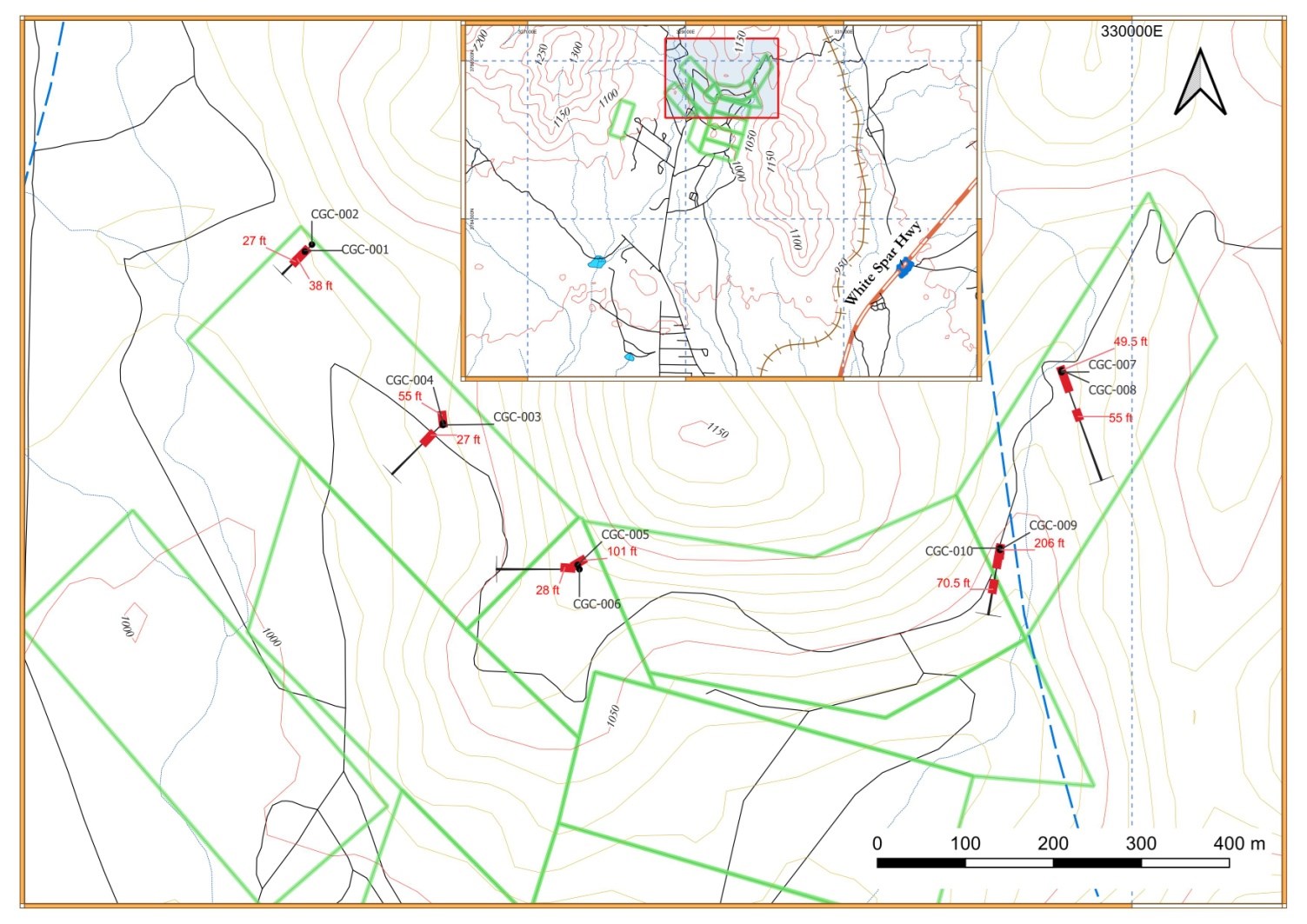
Casa Minerals (TSXV:CASA) has announced the completion of the first phase of diamond drilling at the Congress gold deposit totalling 6,828 feet in the Martinez Mining District, Arizona. The company’s drilling intersected newly discovered vein structures and the known and formerly productive Congress and Niagara veins. This drilling phase aimed to improve historic data and generate updated information on the geology and mineralization of the gold-bearing structures at the Congress Gold Mine.
As expected, some distinct veining structures were found along with previously recorded veins. Now that the veins have been mapped, measured, and sampled to be assayed, the data can be used in future resource evaluation. A Registered Professional Geologist guided the company’s HQ diamond drill program and supervised operations. They also assumed custody of the drill cores and managed the core processing and sampling throughout the program.
Samples are not being analyzed at an ISO-9000 certified commercial analytical laboratory, with expected results to be released after receipt and confirmation.
Casa Minerals president and CEO Mr. Farshad Shirvani commented in a press release: “We are very encouraged by the completion of this first phase of drilling. The Company’s objective is to advance the Congress Mine with multi-stage exploration and development programs. This initial drilling advances Casa toward re-establishing the Congress Gold Mine as a potentially producing gold mine once again.”
| Hole | East (m) | North (m) | Elev. (m) | Azimuth | Inclination | Length (ft) | Remarks |
| CGC-001 | 329060 | 3786521 | 1023 | 0 | -90 | 498 | 3 veins recorded: longest vein core length is 13 ft. |
| CGC-002 | 329068 | 3786529 | 1023 | 225 | -50 | 245 | 3 veins recorded: longest vein core length is 20 ft. |
| CGC-003 | 329217 | 3786324 | 1045 | 0 | -90 | 757 | 1 vein recorded with 27 ft. |
| CGC-004 | 329217 | 3786326 | 1045 | 225 | -50 | 420 | 2 veins recorded: longest vein core length is 40 ft. |
| CGC-005 | 329370 | 3786165 | 1100 | 0 | -90 | 1,197 | 12 veins recorded: longest vein core length is 16 ft. |
| CGC-006 | 329372 | 3786160 | 1099 | 270 | -50 | 483 | 1 vein recorded with 28 ft. |
| CGC-007 | 329920 | 3786384 | 1070 | 0 | -90 | 928 | 5 veins recorded: longest vein core length is 26 ft. |
| CGC-008 | 329920 | 3786386 | 1070 | 160 | -50 | 750 | 6 veins recorded: longest vein core length is 33 ft. |
| CGC-009 | 329850 | 3786182 | 1045 | 0 | -90 | 800 | 18 veins recorded: longest vein core length is 80 ft. |
| CGC-010 | 329850 | 3786184 | 1045 | 190 | -50 | 750 | 5 veins recorded: longest vein core length is 29 ft. |
Table 1: Drill hole location and details.
The above references an opinion and is for information purposes only. It is not intended to be investment advice. Seek a licensed professional for investment advice. The author is not an insider or shareholder of any of the companies mentioned above.
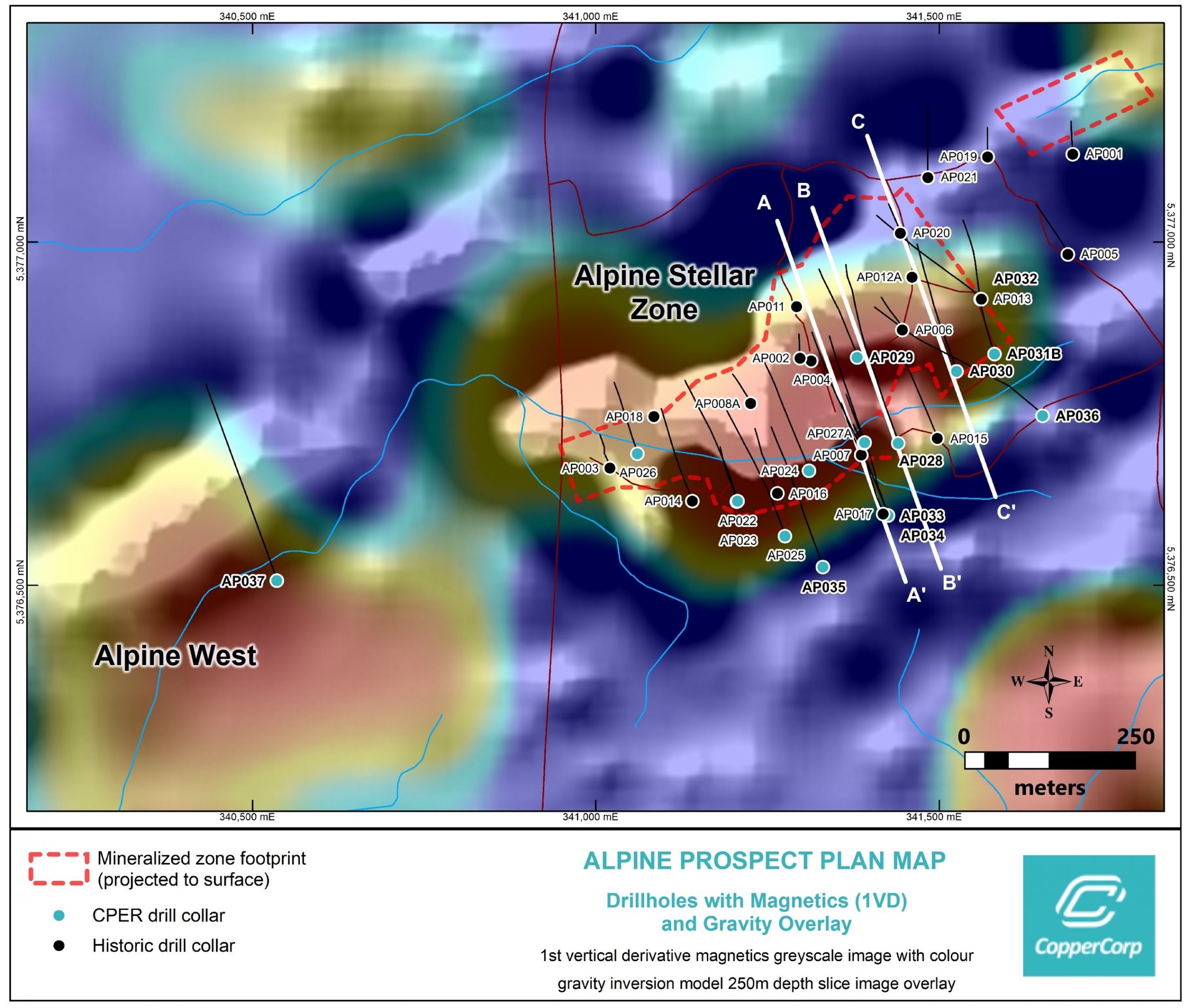
CopperCorp Resources (TSXV:CPER) has announced new assay results from the Alpine prospect, a part of the AMC Copper Project location in Tasmania, Australia. The results are free seven diamond drill holes at the prospect, with the 1,066km2 AMC project. The first round of drilling at the Alpine Stellar zone is complete, and the company has drilled 16 diamond holes with a total of 5,490m. The drill program included infill and step-out holes to test the extent and continuity of the mineralizing system at the project. It also aimed to find new vectors to be able to target high-grade portions of the system.
The company has now moved the drill rig 500m to the Alpine West zone and has already begun drilling at hole AP037 to target a combined magnetic-gravity anomaly and coincident copper in soils anomalous zone. The company has interpreted this to be a possible strike extension to the Alpine Stellar zone mineralizations.
Assay results for drill holes AP028, AP029, AP030, AP031B, AP032, AP033 and AP034 have also been received, with most of the seven holes successful in intersecting zones of significant copper mineralization.
Highlights from the results are as follows:
- Significant mineralized intercepts from the recently received drill core assays include:
| Hole ID | Interval (m)1 | From (m) | Cu (%) | Co (ppm) |
| AP030 | 26.2 | 85.8 | 0.53 | 191 |
| And | 37.0 | 181 | 0.57 | 271 |
| including | 10.0 | 185 | 1.20 | 488 |
| And | 18.0 | 307 | 0.70 | 238 |
| Including | 4.9 | 312.1 | 1.50 | 329 |
| AP033 | 32.5 | 270.5 | 0.59 | 268 |
| And | 82.2 | 347.3 | 0.33 | 102 |
| including | 10.5 | 419 | 0.75 | 43 |
| AP034 | 31.6 | 177.7 | 0.64 | 200 |
| including | 5.0 | 187 | 2.06 | 308 |
1Note that true widths are uncertain. Initial interpretation by the Company is that the copper mineralization is hosted in steeply dipping zones of mineralization implying true widths in the range of 70% to 95% of reported intervals. See full intercepts in Table 2.
- High-grade intercepts, including 10.0m @ 1.2% Cu and 4.9m of 1.5% Cu in AP030, and 5.0m of 2.06% Cu in AP034, indicate the potential for accumulations of higher-grade copper within the larger Alpine Stellar target area, including to depth.
- These results continue to define multiple broad, sub-parallel dipping zones of mineralization at the Alpine Stellar zone with average copper grades in the 0.3% to 0.7% range.
- Recently completed deep drill holes AP035 and AP036 (assays pending) both successfully intersected intervals of significant visual copper sulphide1 mineralization up to 200m below previous drill holes.
- Copper mineralization at the Alpine Stellar zone has now been defined over a strike length of 600m and to a depth of 400m from surface. The mineralization remains open at depth and along strike.
- A geological review of the Alpine Stellar zone has commenced ahead of finalizing 3D models that will be used to plan future extension drilling at the Stellar zone.
- The drill rig has been relocated to the Alpine West target, located approximately 500m along strike to the west from the Alpine Stellar zone. Drilling of AP037 has commenced on this previously untested target as the first hole of an initial scout drilling program comprising 4 diamond holes at Alpine West.
Sean Westbrook, CopperCorp’s Vice President of Exploration, commented in a press release:
“The recent drill results from Alpine Stellar zone have delivered strong copper intercepts over significant widths, and importantly, we are starting to see more high-grade intervals from drilling as our knowledge base develops and we vector towards the stronger parts of the Stellar system.
Encouragingly, recent drill holes AP035 and AP036, targeting depth extensions beneath previously drilled mineralization, have both intersected significant intervals of what we think is visible copper sulphide mineralization. The team eagerly awaits the assay results from these holes, which will be reported once received and reviewed.
The Company is pleased to have commenced drilling at the Alpine West prospect which will represent the first ever drilling at this location, which is approximately 500m west along strike from the Stellar zone. Alpine West is an exciting target with the potential to significantly expand the mineralization footprint at Alpine.
In conjunction with the Alpine West drilling, the exploration team has commenced a geological review of the Stellar zone ahead of finalizing 3D geological models that will form the basis for the next round of drill planning at Stellar. As demonstrated by the recent drill results, the Stellar zone holds excellent exploration upside potential and future work programs will be designed to vigorously pursue this growth upside. In terms of a growth story, it is still early days for Alpine and as can be seen in the drill section figures, increased drill hole density has a marked positive impact on defining higher-grade mineralization zones at Stellar.
On a district scale, it is pertinent to note that the currently drilled Alpine prospect area covers less than 1% of the IOCG prospective Arthur Metamorphic Complex (AMC), which has a strike length of 100km and over which CopperCorp holds a dominant tenement position with 1066km2 in granted tenements (see Figure 15). The Company has identified a pipeline of multiple regional copper and gold exploration target zones along and adjacent to the AMC trend and we look forward to reporting on these in the coming months. Field reconnaissance sampling was recently commenced over high priority regional targets with first assay results expected within 4 to 6 weeks.”
The above references an opinion and is for information purposes only. It is not intended to be investment advice. Seek a licensed professional for investment advice. The author is not an insider or shareholder of any of the companies mentioned above.
If you would like to receive our free newsletter via email, simply enter your email address below & click subscribe.
CONNECT WITH US
Tweets
Tweet with hash tag #miningfeeds or @miningfeeds and your tweets will be displayed across this site.
MOST ACTIVE MINING STOCKS
Daily Gainers
 Lincoln Minerals Limited Lincoln Minerals Limited |
LML.AX | +125.00% |
      |
GCR.AX | +33.33% |
      |
CASA.V | +30.00% |
      |
AHN.AX | +22.22% |
      |
ADD.AX | +22.22% |
      |
AZM.V | +21.98% |
      |
NSE.V | +21.05% |
      |
DYG.V | +18.42% |
      |
AAZ.V | +18.18% |
      |
GLA.AX | +17.65% |

 Follow us on Twitter
Follow us on Twitter Become our facebook fan
Become our facebook fan








